|
|

|
Friday 4 May 2018
Lasting Impression........Referring to my tour visit list for Phetchaburi, as interesting as it was yesterday, not a great deal was achieved so the pressure is on today to make better progress. Despite the limitation requiring me to work in bed with my computer on my lap, I’m finished by 8am. I now have the luxury of checking what other options there are in terms of accommodation in Phetchaburi. It’s funny how an impression sticks as the last time we were here we didn’t have independent transport and didn’t locate anything suitable in the town. Now with a car available, better online information and new resorts springing up, Phetchaburi is a more friendly place than it used to be. It seems I’m spoilt for choice now as we consider the options. By 9.00am we have consensus and a room for tonight but that’s as good as it gets as the early start I crave doesn’t materialise. There are mysterious forces at work that are beyond the comprehension of male homo sapiens. Katoon isn’t ready till 11am and useful cooler conditions are long gone so best bite the bullet and make a start. Without the luxury of leaving the best to last it’s straight in at the deep end.
Phra Nakhon Khiri Historical Park........With so much low lying land to the east, it’s remarkable that in and around Phetchaburi there are a number of small hills overlooking the main Highway 4 as it passes through. On one in particular are perched some iconic structures, arousing my curiosity on so many occasions. The time to investigate is long overdue. At the base of the hill there’s an amazing collection of caterers and souvenir shops. One knows it’s important by the number of coaches lined up. Then there’s the cable car which I’ve read about. While you can walk to the top, I regret that’s impractical for me so I have to part with the fee, currently 200 baht. Reaching the top, it’s hot, even the Thais are complaining then there’s more bad news. Brick roads and staircases criss cross the mountain as they provide access to the various sites. It doesn’t take me long to realise this is going to be hard work but I need to set a limit and try and strike a balance between justifying the cost of getting here and recording what I see without compromising the entire day and likely this tour. At the visitor centre there is a lot of information about the site and a brochure which I can use as a basis for my site review.
Lasting Impression........Referring to my tour visit list for Phetchaburi, as interesting as it was yesterday, not a great deal was achieved so the pressure is on today to make better progress. Despite the limitation requiring me to work in bed with my computer on my lap, I’m finished by 8am. I now have the luxury of checking what other options there are in terms of accommodation in Phetchaburi. It’s funny how an impression sticks as the last time we were here we didn’t have independent transport and didn’t locate anything suitable in the town. Now with a car available, better online information and new resorts springing up, Phetchaburi is a more friendly place than it used to be. It seems I’m spoilt for choice now as we consider the options. By 9.00am we have consensus and a room for tonight but that’s as good as it gets as the early start I crave doesn’t materialise. There are mysterious forces at work that are beyond the comprehension of male homo sapiens. Katoon isn’t ready till 11am and useful cooler conditions are long gone so best bite the bullet and make a start. Without the luxury of leaving the best to last it’s straight in at the deep end.
Phra Nakhon Khiri Historical Park........With so much low lying land to the east, it’s remarkable that in and around Phetchaburi there are a number of small hills overlooking the main Highway 4 as it passes through. On one in particular are perched some iconic structures, arousing my curiosity on so many occasions. The time to investigate is long overdue. At the base of the hill there’s an amazing collection of caterers and souvenir shops. One knows it’s important by the number of coaches lined up. Then there’s the cable car which I’ve read about. While you can walk to the top, I regret that’s impractical for me so I have to part with the fee, currently 200 baht. Reaching the top, it’s hot, even the Thais are complaining then there’s more bad news. Brick roads and staircases criss cross the mountain as they provide access to the various sites. It doesn’t take me long to realise this is going to be hard work but I need to set a limit and try and strike a balance between justifying the cost of getting here and recording what I see without compromising the entire day and likely this tour. At the visitor centre there is a lot of information about the site and a brochure which I can use as a basis for my site review.
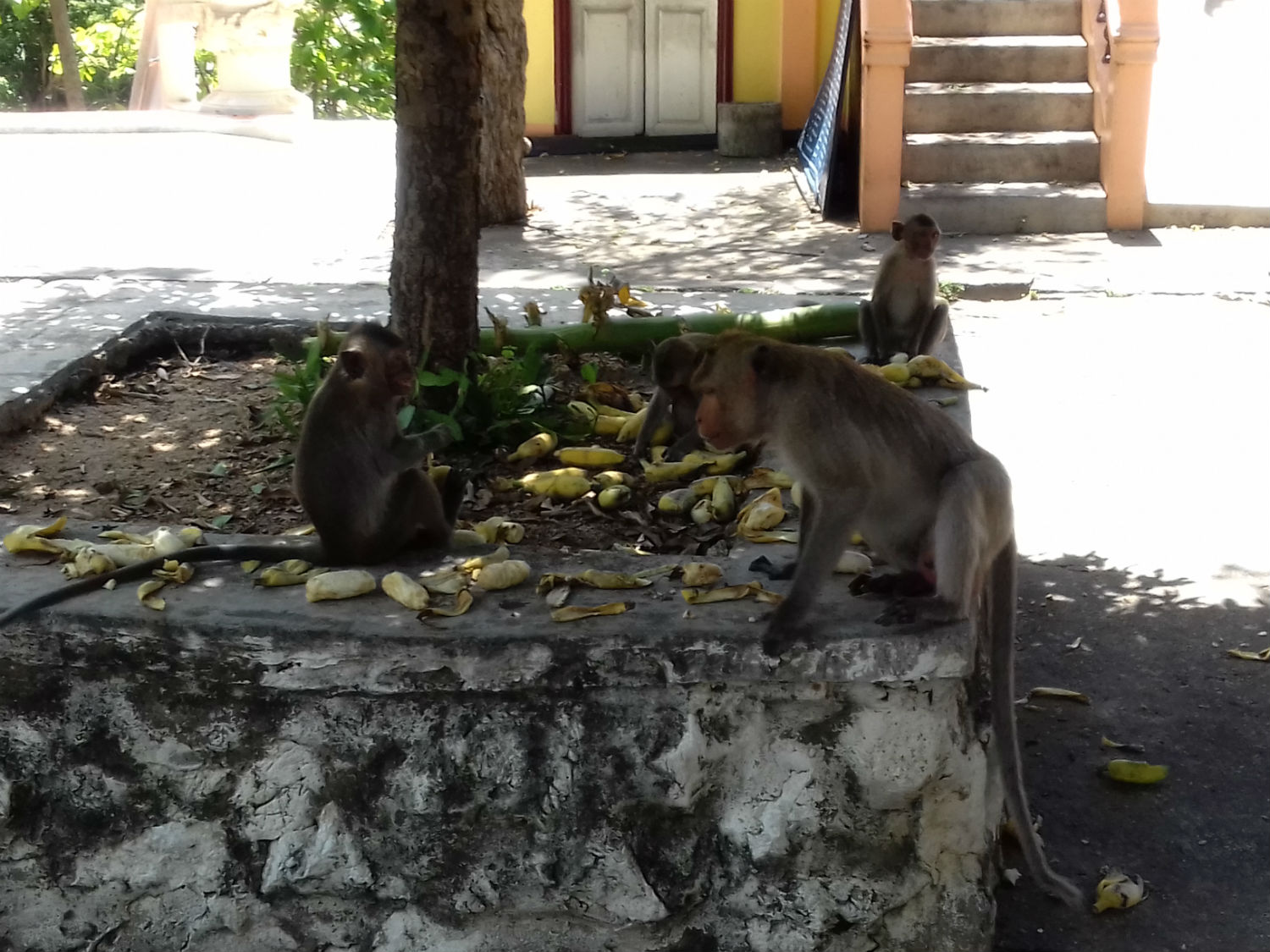
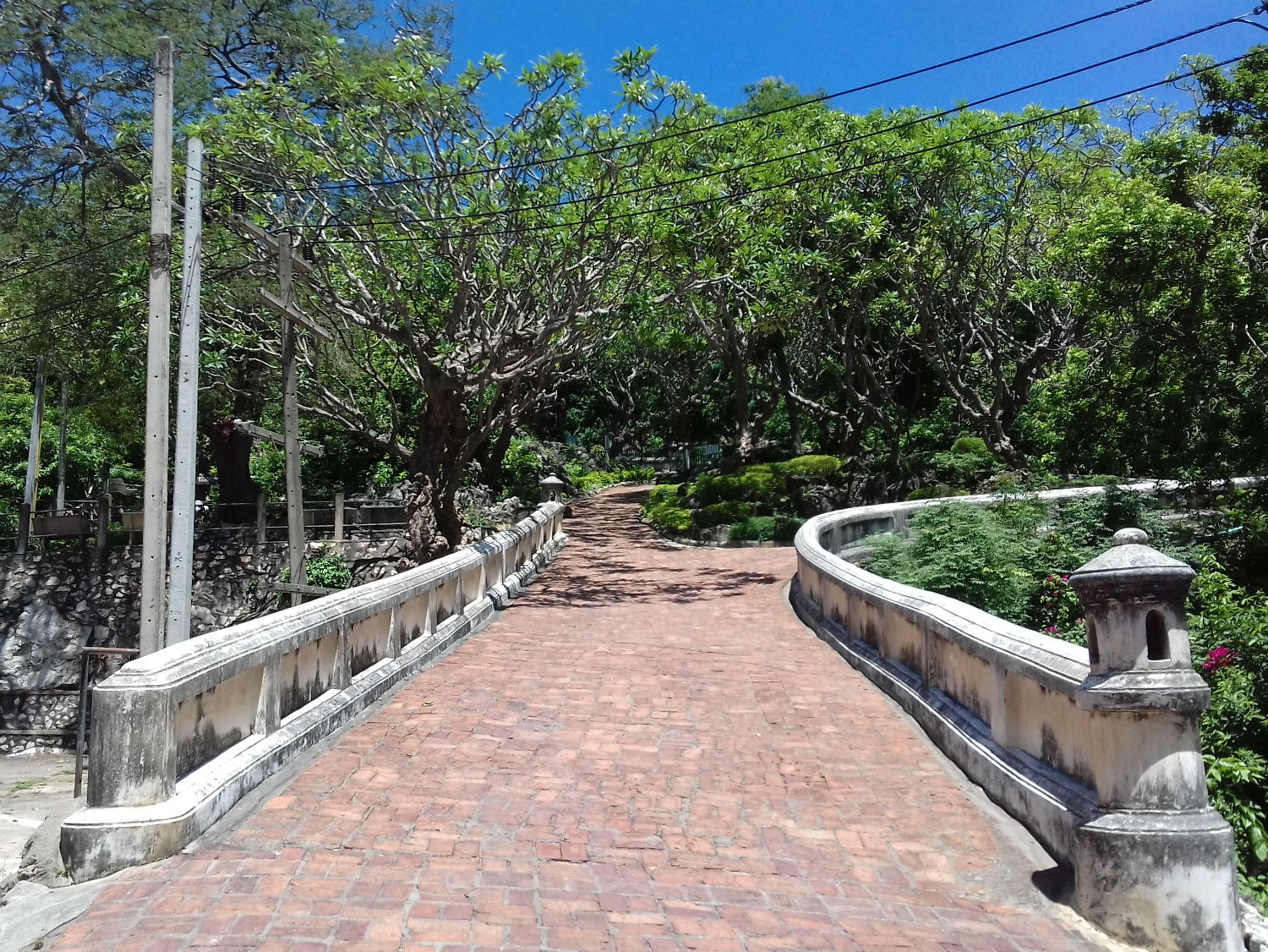
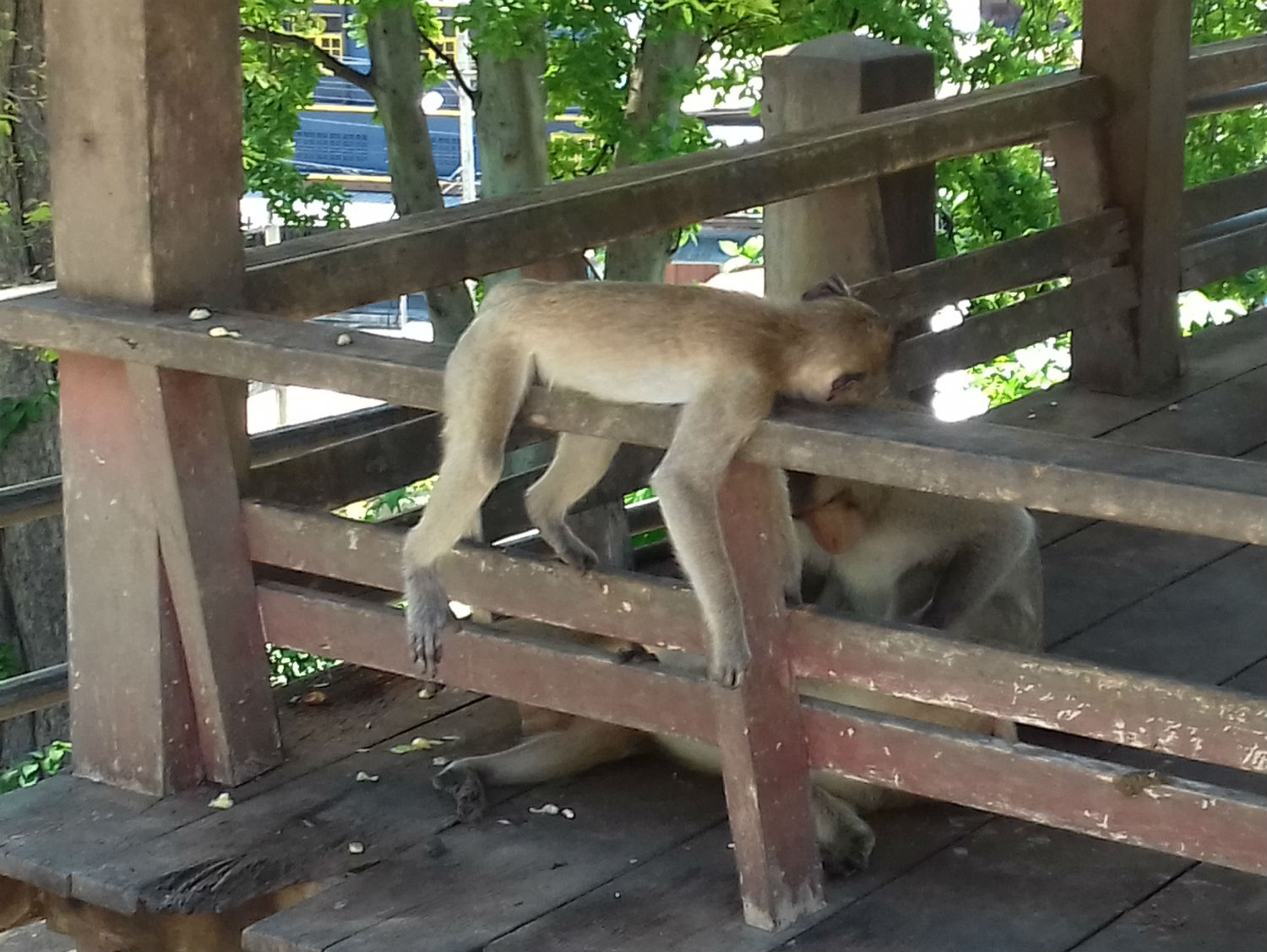
Khao Wang Residents, Phetchaburi
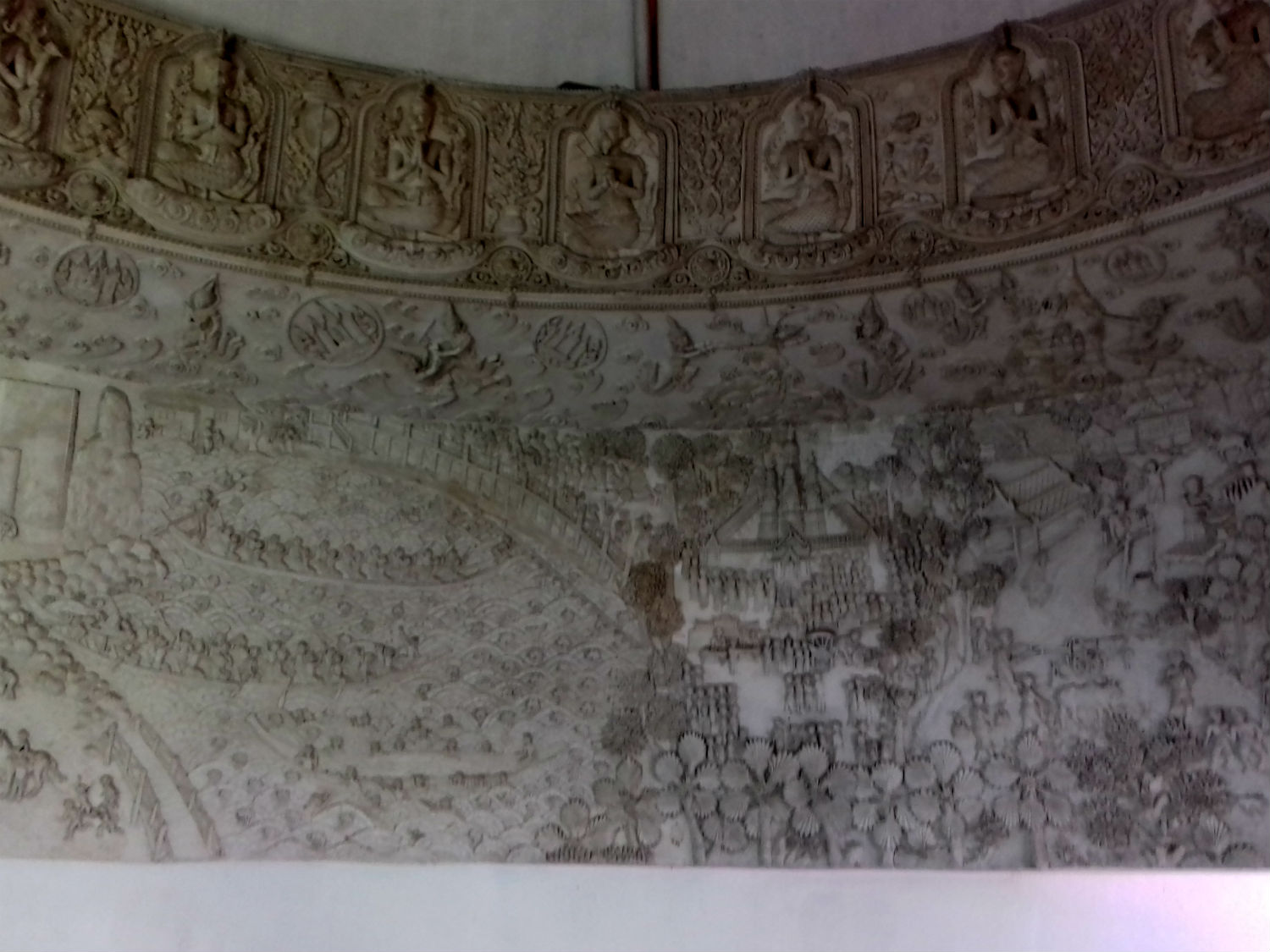
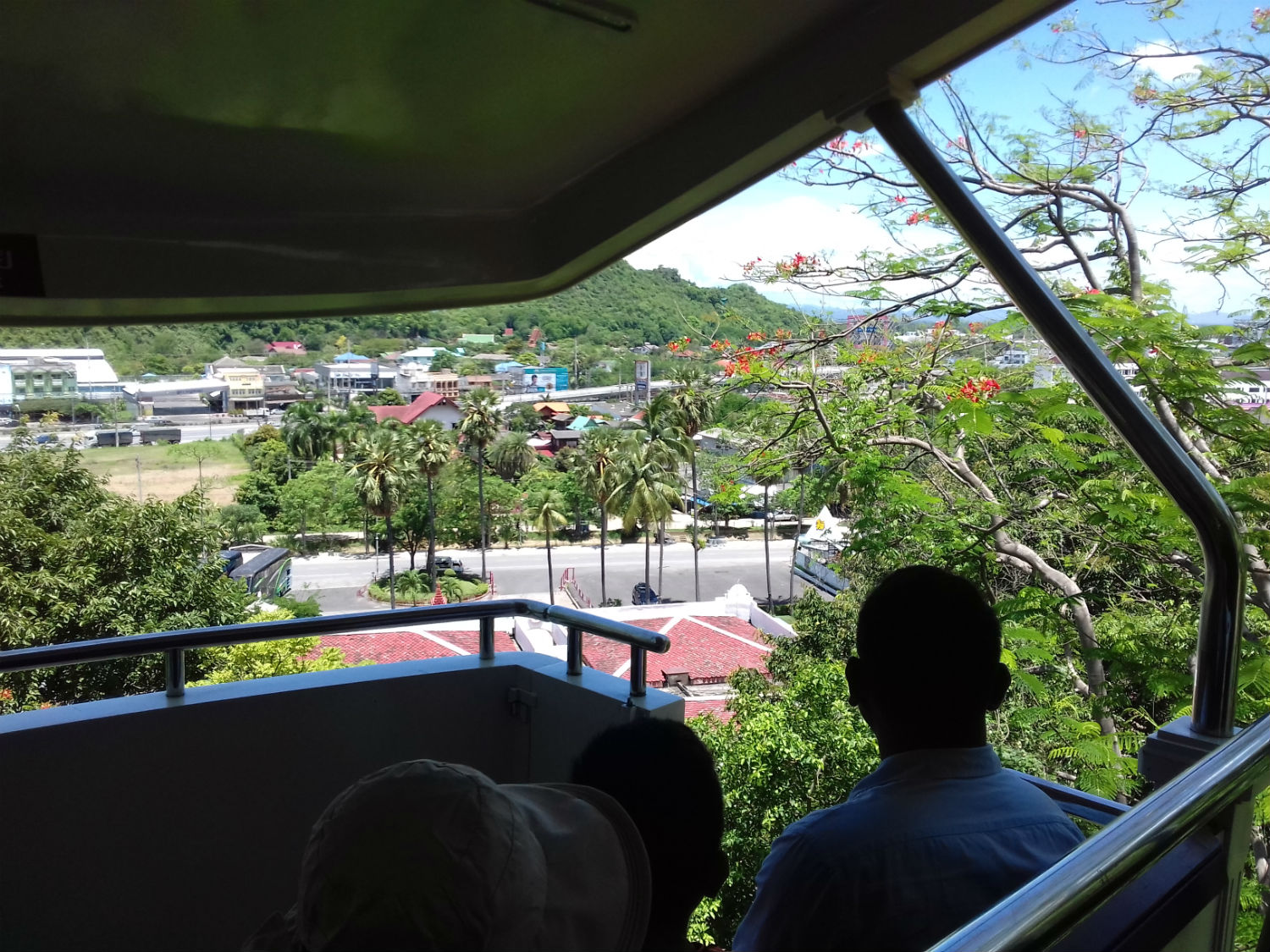
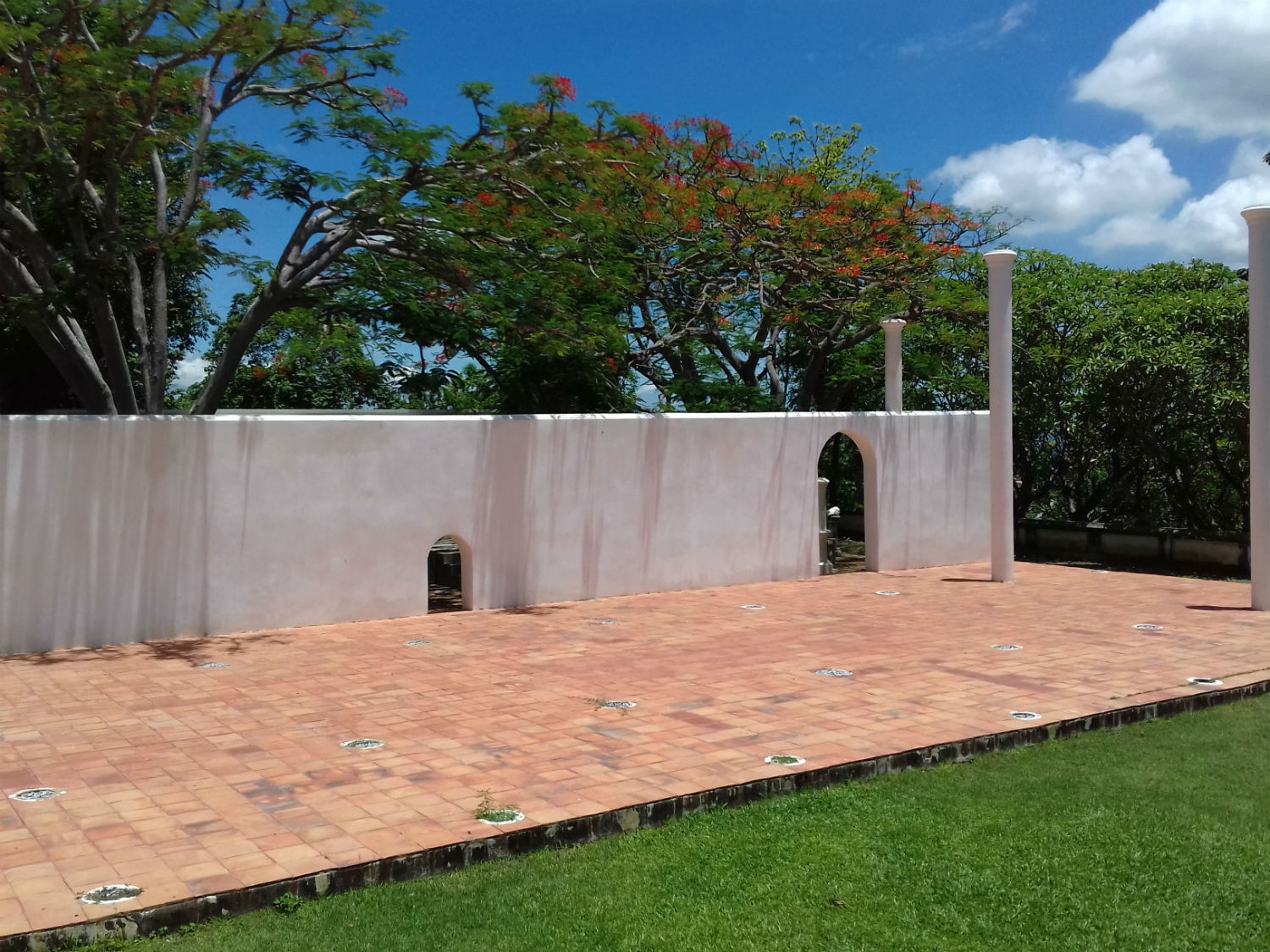
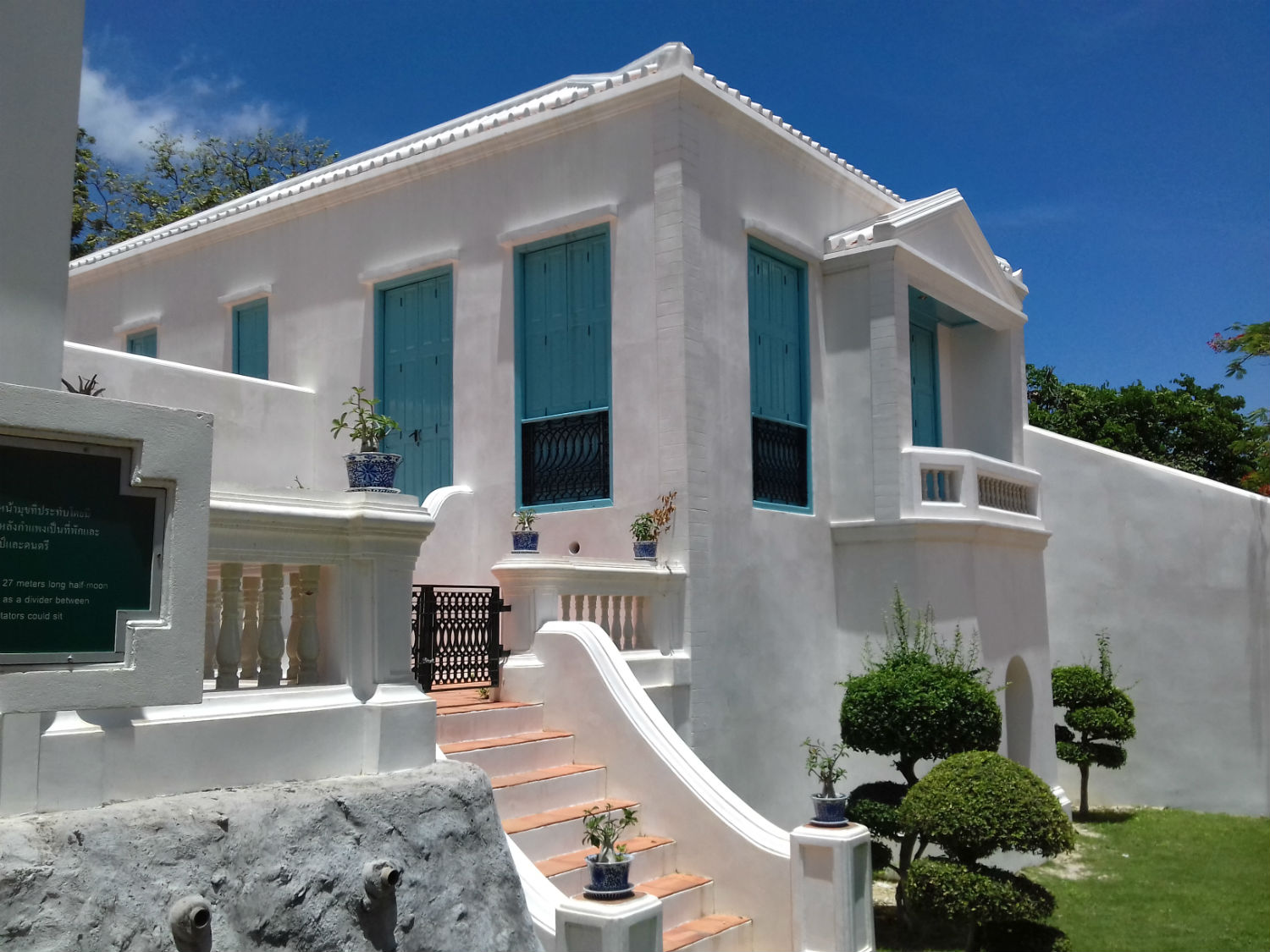
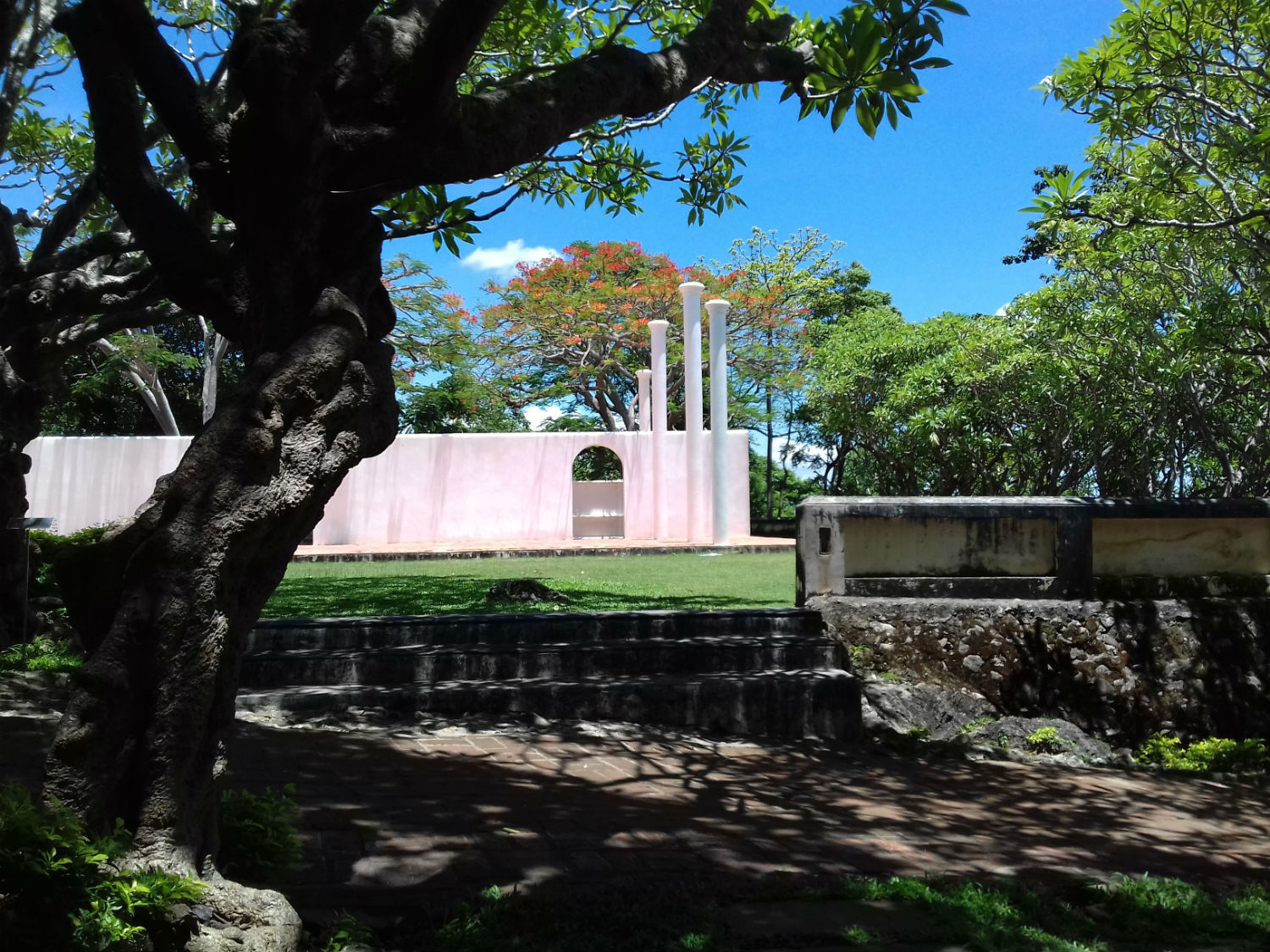
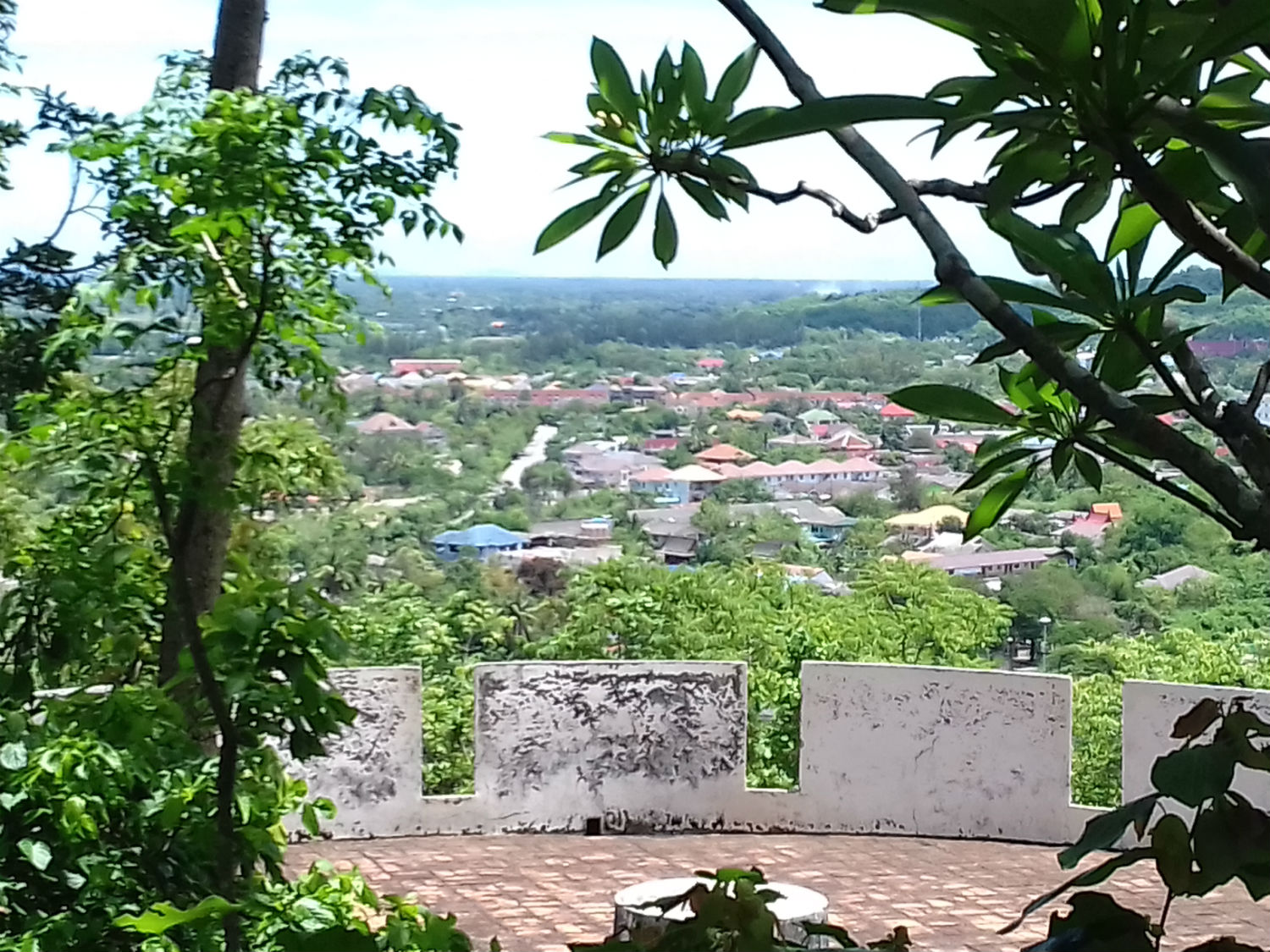
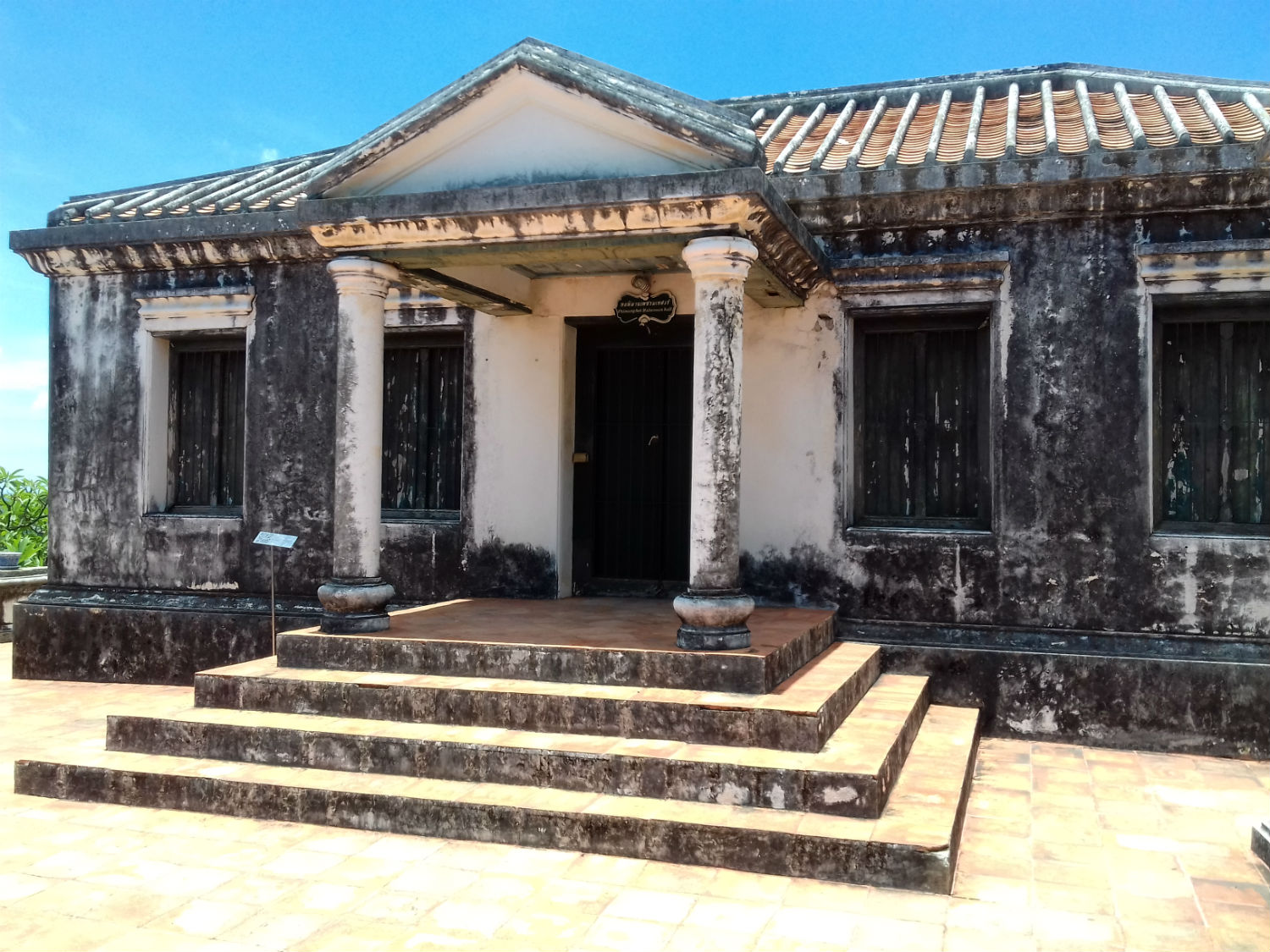
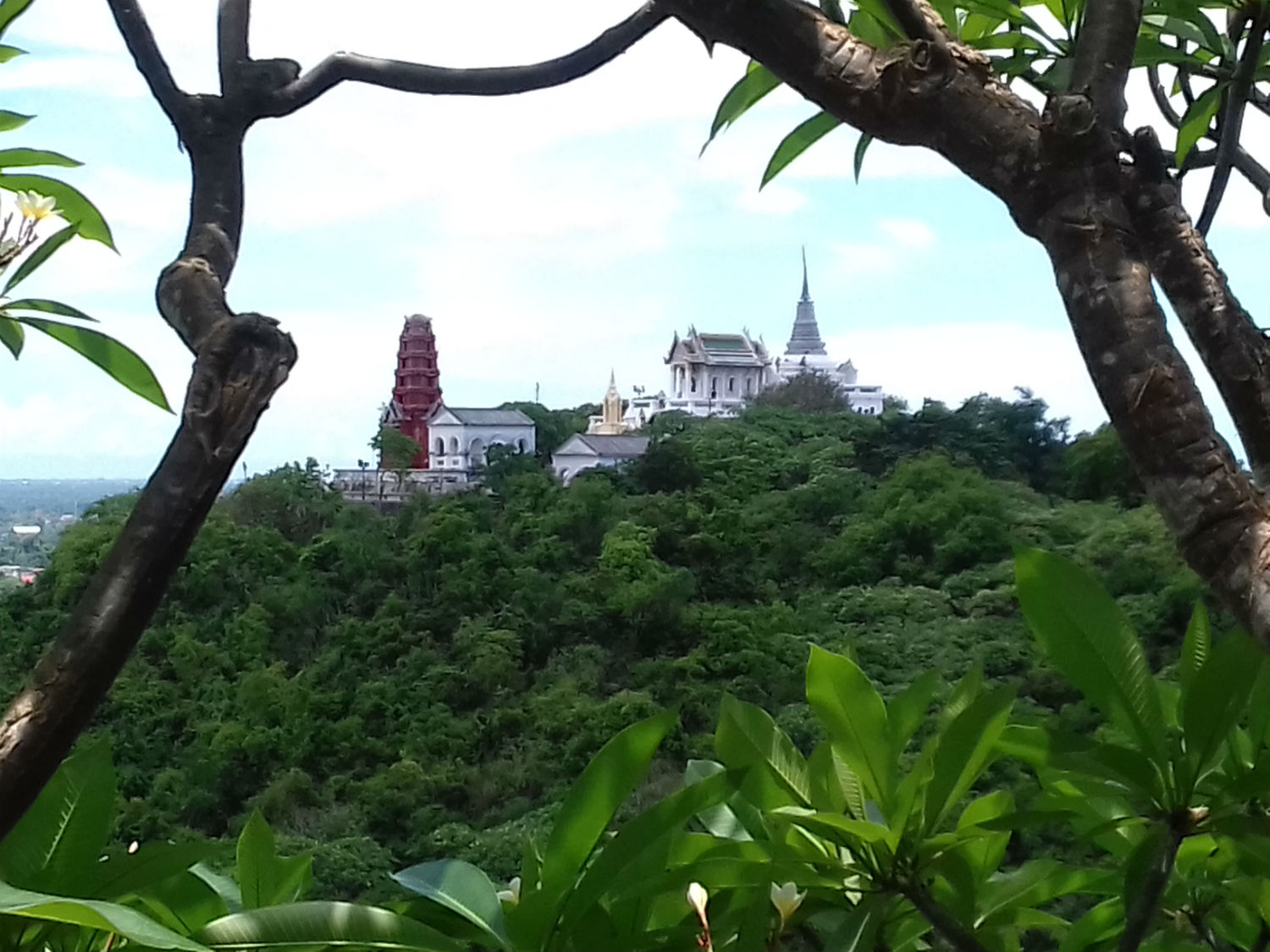
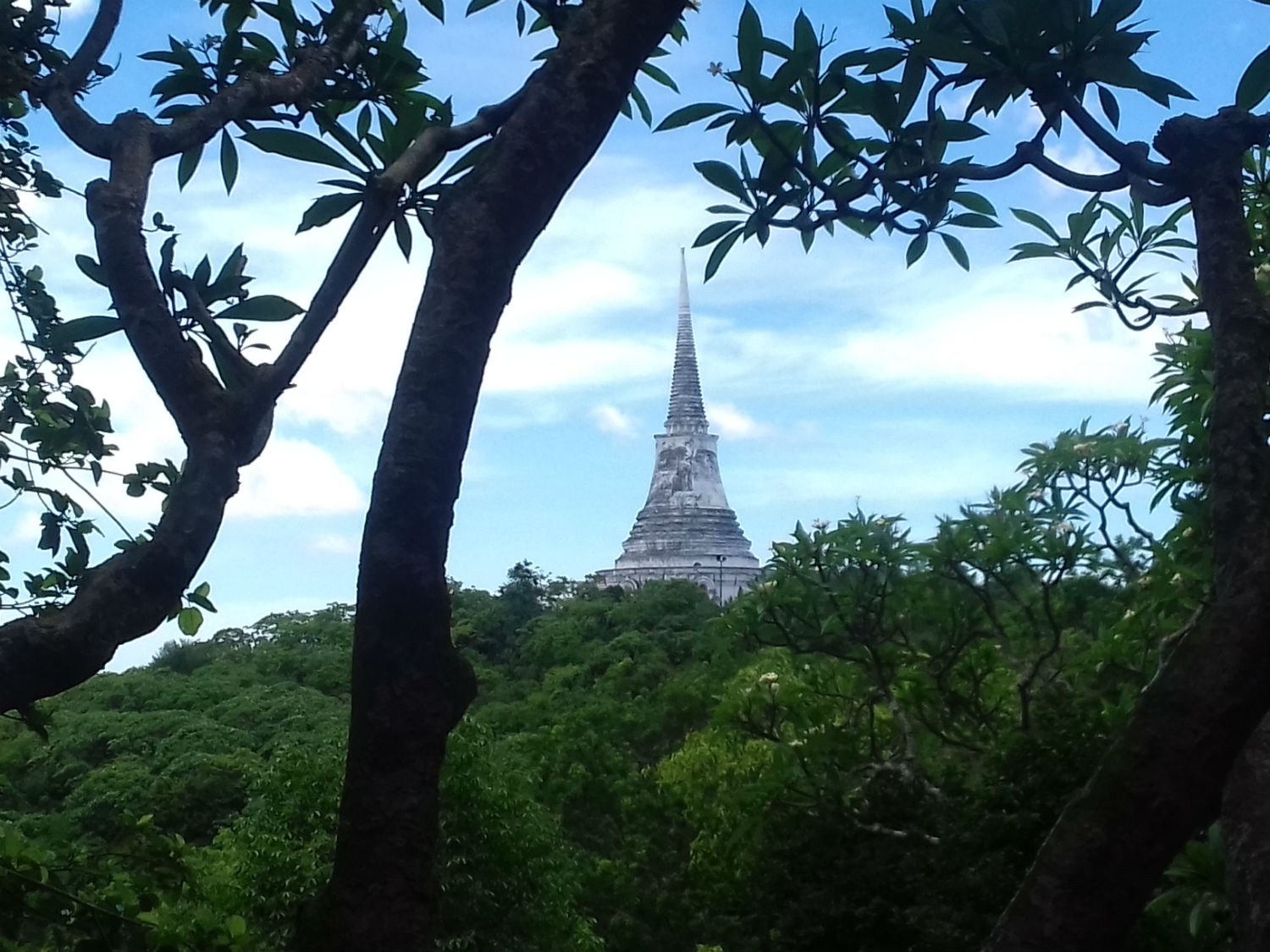
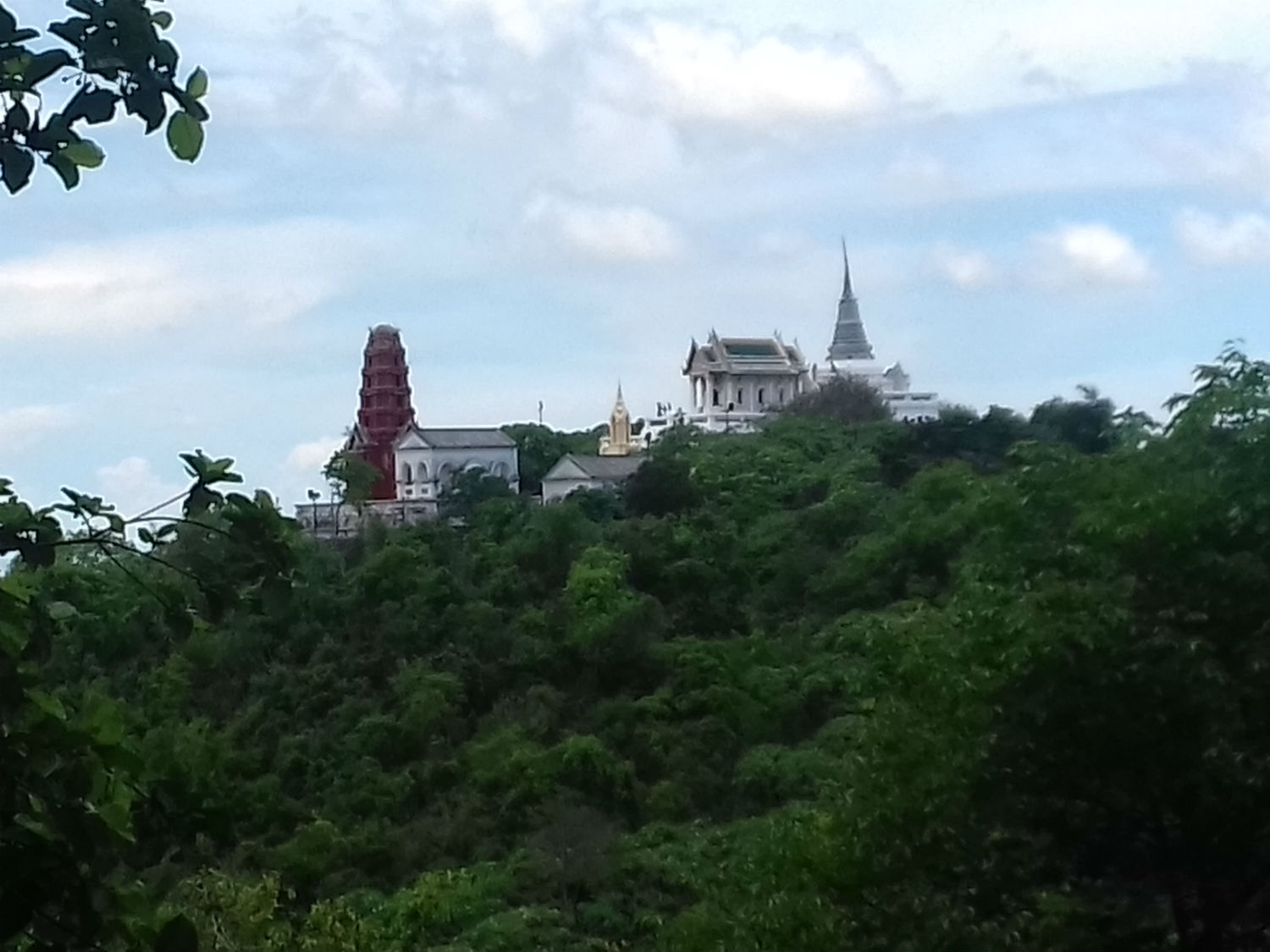
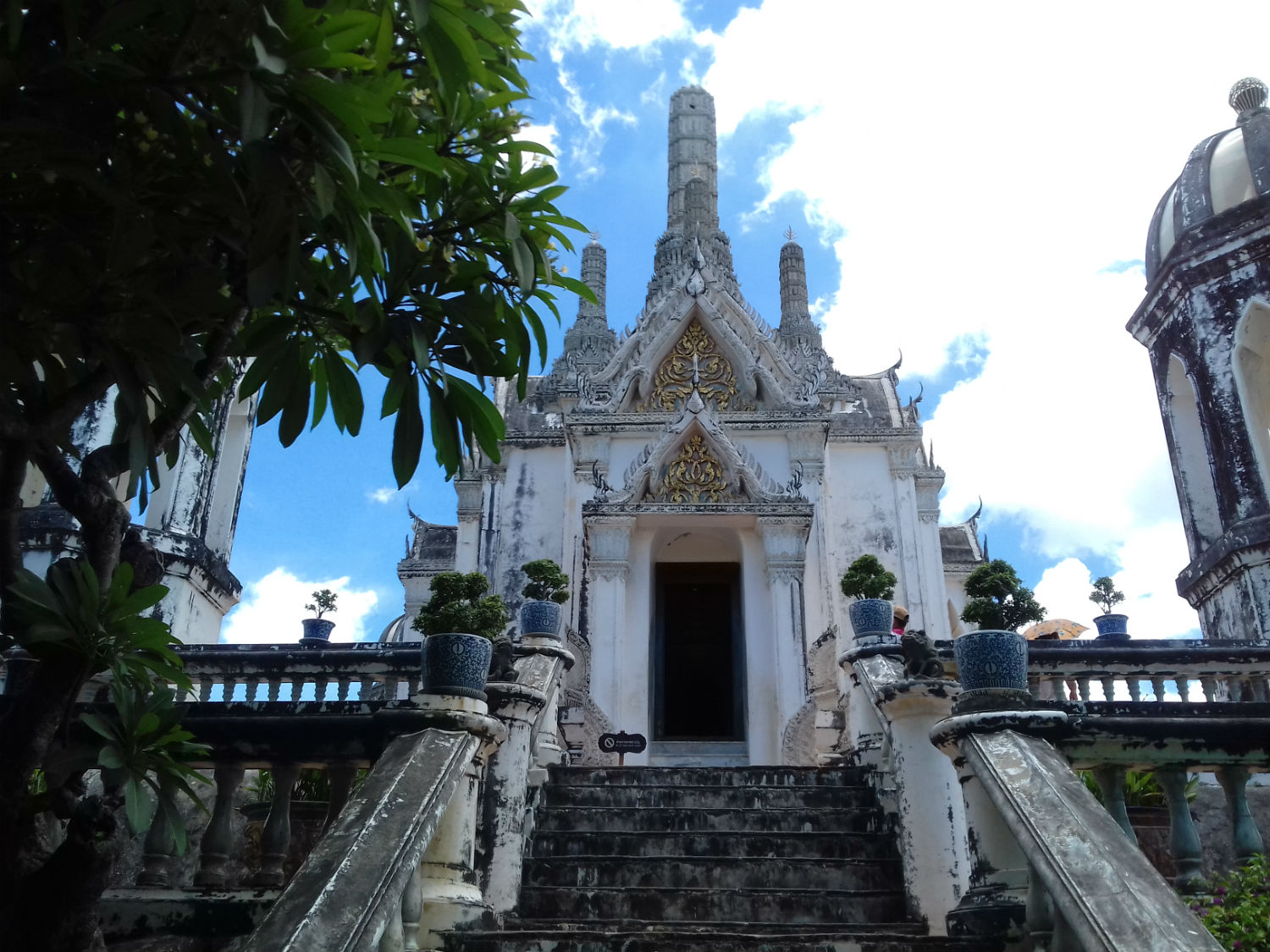
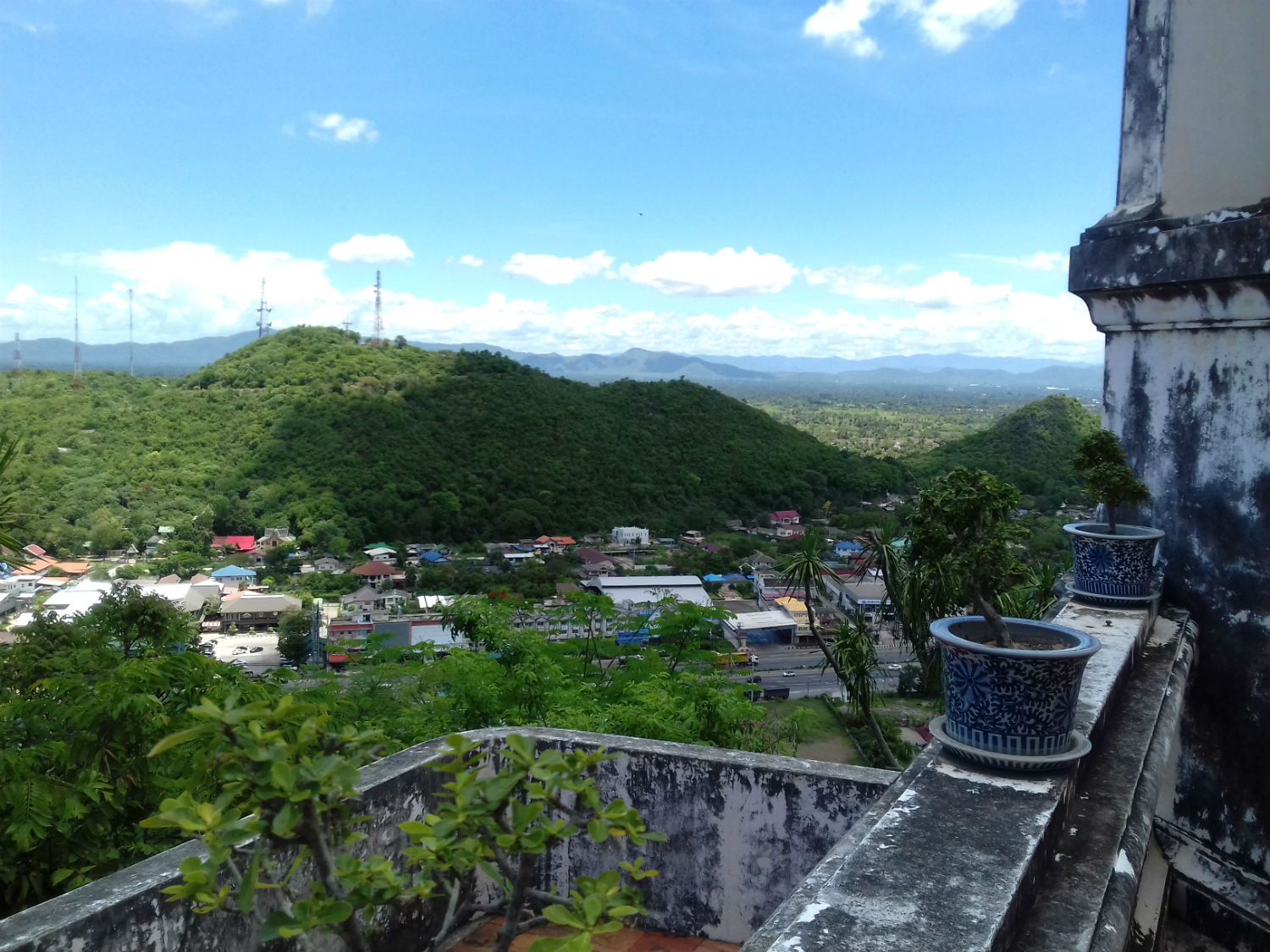
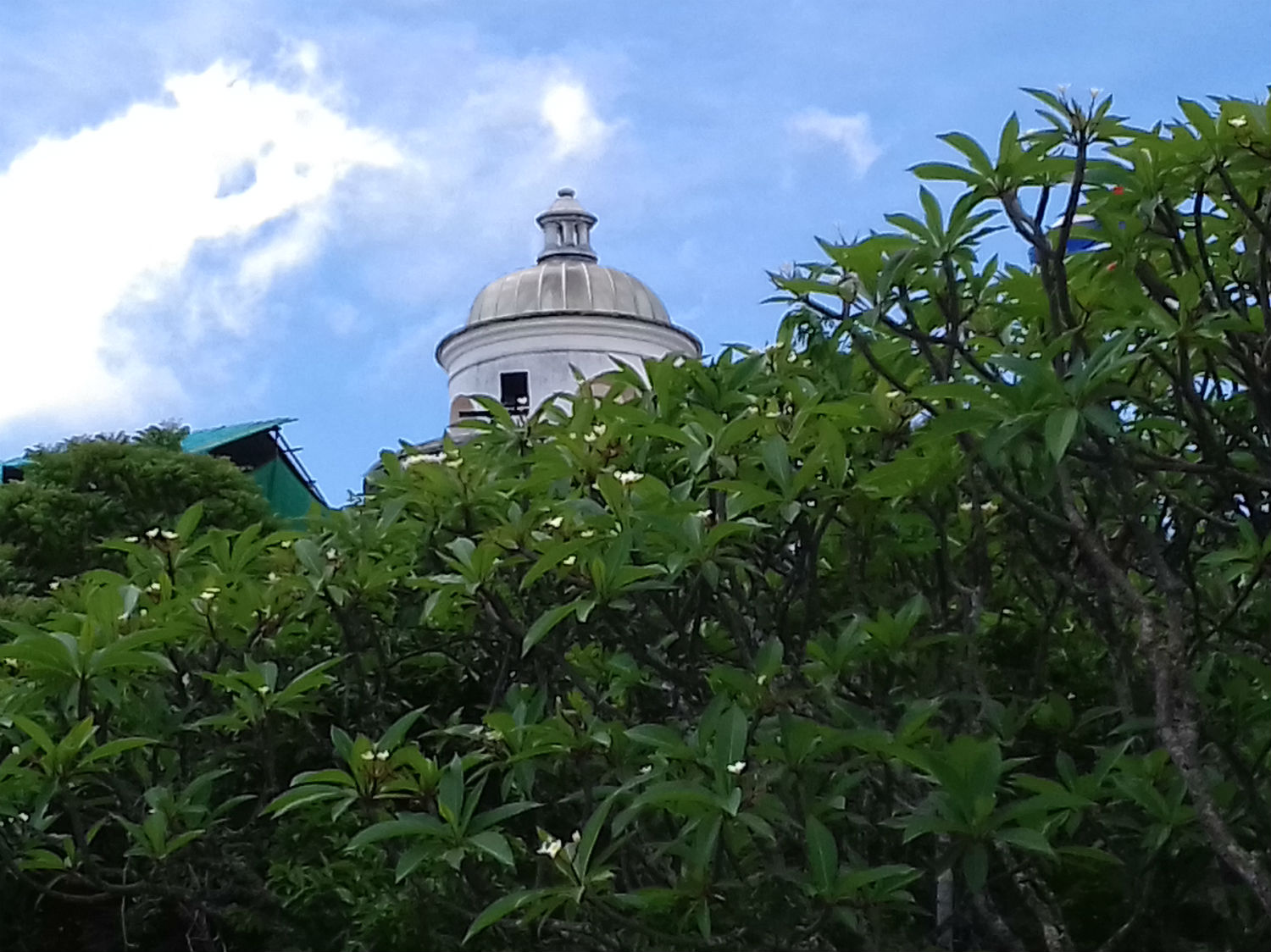
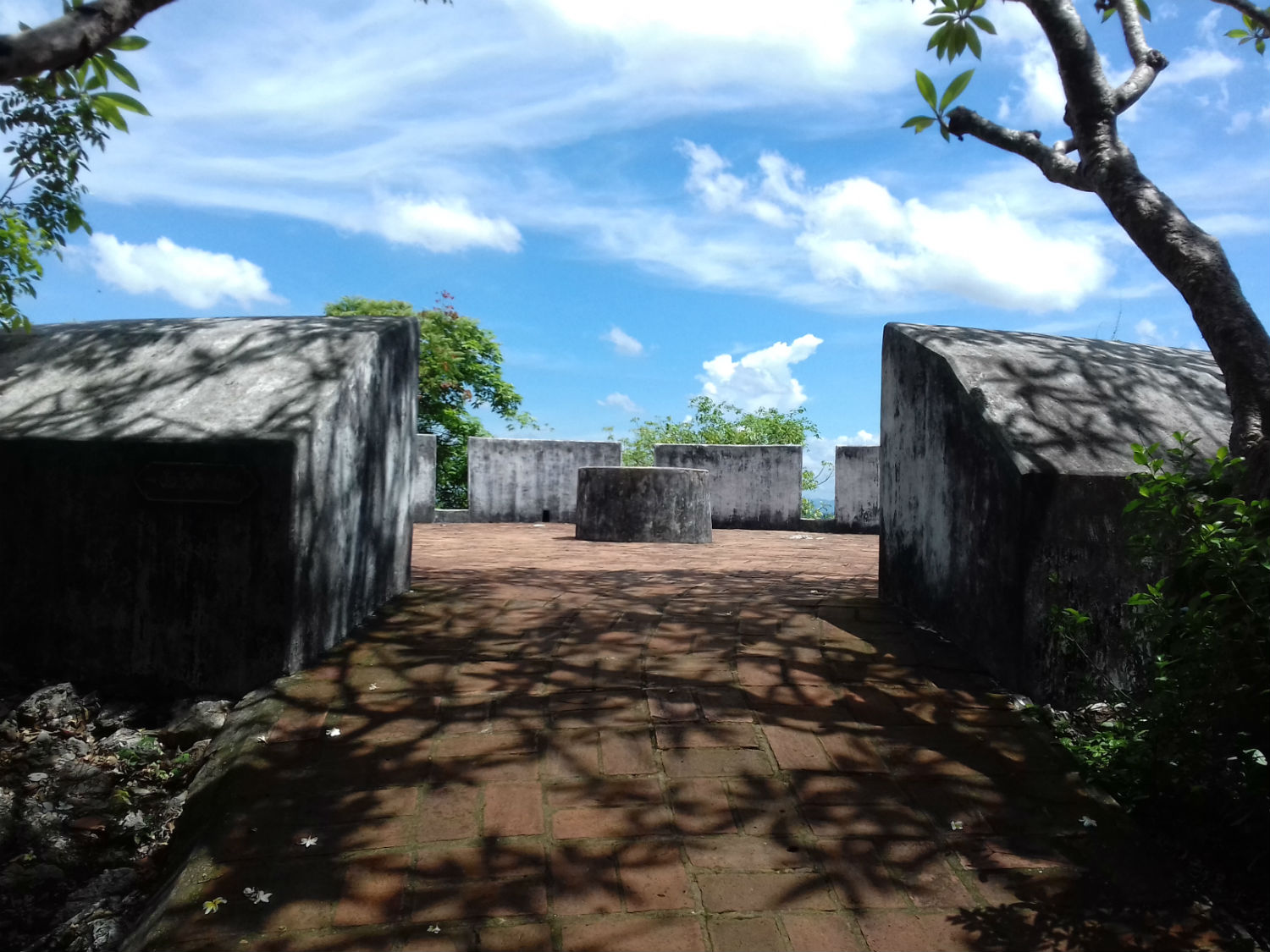
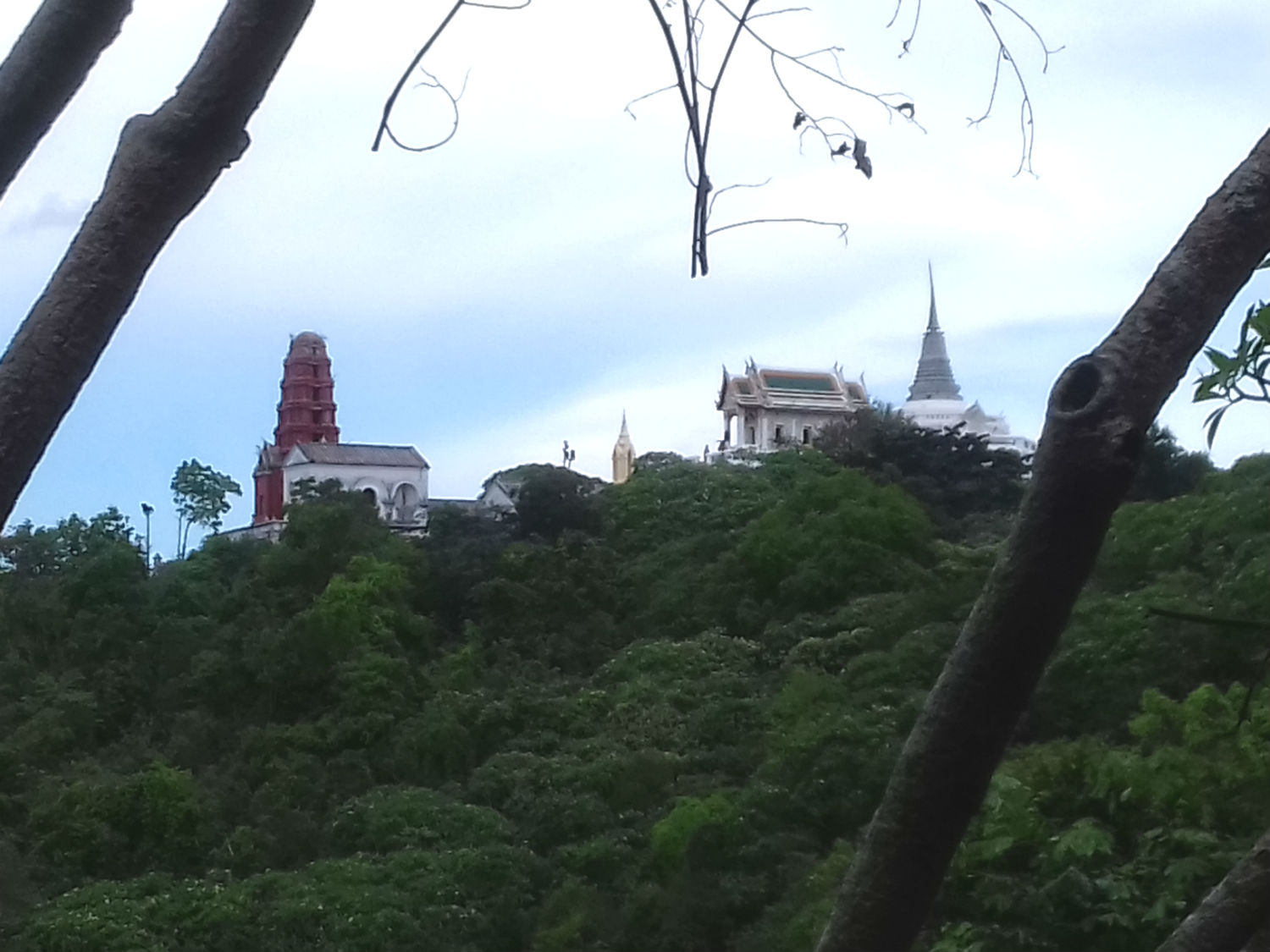 Buildings on the Western Peak with distant views of the Central and Eastern Peaks and Khao Ban Dai It, Phra Nakhon Khiri Historical Park, Phetchaburi
Buildings on the Western Peak with distant views of the Central and Eastern Peaks and Khao Ban Dai It, Phra Nakhon Khiri Historical Park, Phetchaburi
Khiri, Yot, Khao, Doi, Phu........This may be the opportunity to explain that there are a number of words in Thai meaning the same thing. There are regional variations. Here in the southern districts of Thailand 'Khiri' means mountain e.g. the mountainous province of Prachuap Khiri Khan to the south of here, while 'Yot' is a peak as in Sahm Roi Yot (300 peaks) National Park. In the central provinces and by default it’s 'Khao' as in Khao Yai. In the north of Thailand it’s 'Doi' as in Doi Suthep, Doi Inthanon or Doi Tung. In the northeastern provinces (Isaan) it’s 'Phu' as in Phu Ruea, Phu Kradung or Phu Tub Boek.
Phra Nakhon Kiri........Phra Nakhon Kiri was the summer palace of the royal family constructed on this hill in 1858 by King Rama IV (King Mongkut). It is locally called Khao Wang. The mountain here rises 95 metres above sea level. The palace was decorated with a combination of European, Chinese and Thai art styles. The mountain is divided into three parts and tourists have the opportunity o visit all three.
The Western Peak........On the western peak of the mountain, the palace and associated buildings can be found. All the structures on this peak assume elegant names conferred on them by King Rama IV. The names are a reminder of their particular functions. Some of the best examples are those of gates and fortresses.
1) Phra Thinang Phetphum Phairot
2) Phra Thinang Pramot Mahaisawan
3) Phra Thinang Wechayan Wichien Prasat
4) Phra Thinang Ratchathamma Sapha
5) Phra Thinang Santhakarn Sathan
6) Chatchawan Wianchai Observatory
7) Phiman Phetmahet Halls
The Central Peak........On the central peak of Maha Sawan mountain there had been a much decorated chedi belonging to Wat Inthakhiri. King Mongkut renovated the chedi by covering it with a new one. He deposited the relics of the Buddha in the chedi and conferred upon it a new and elegant name, Phra That Chom Phet.
The height of the chedi from the base is 40 metres while the base is 20 metres wide and has a round chamber with round columns to support the upper structure. The doorways to the chamber are made at the four cardinal points. There is a flight of steps built to connect the chamber with the terrace immediately above the hall where you can walk around enjoying a good view of Phetcahaburi as well as the various structure on the two peaks nearby.
The Eastern Peak........In the past there was a pavilion on the eastern peak which belonged to Wat Samana. King Rama IV ordered his architects to construct a royal temple in the palace compound on Phra Nakorn Khiri in the same fashion as the building of the Temple of the Emerald Buddha in the Grand Palace, Bangkok. When the temple was completed he named it Wat Phra Kaew. Wat Phra Kaew is composed of several buildings, the ordination hall, the chedi called Phra Sutthasela and the pyramidal structures in brick and stone. The ordination hall is a small hall with walls made of marble and the roof covered with green and yellow tiles. The roof decorations are studded with glass mosaic, the intricate workmanship created by court artists. The most important of all is the motif molded in stucco on the pediment with the insignia of King Rama IV and the victorious crown, this molding being one of the most masterful works found in Phetchaburi province.
Phra Nakhon Khiri National Museum........Ancient art objects once decorated various buildings at Phra Nakhon Khiri and are now conserved in Phra Nakhon Khiri National Museum which occupies the two buildings of Phra Thinang Phetphum Phairot and Phra Thinang Pramot Mahaisawan. In general the exhibits can be categorised into three groups as follows:
1) Royal objects belonging to Kings Rama IV and V, such as writing tables, furniture to receive guests, a dining table, bed, dressing table etc. all of which are copies of Western originals by Chinese furniture makers in Thailand. They are therefore of mixed style, Western, Chinese and Thai. Small objects such as candlesticks, vases and inkstands together with pens were brought from foreign countries by King Rama V, or sent to him as royal gifts.
2) Bronze and brass sculptures once decorating various corners of the palace complex, purchased King Rama V during his trips to Europe.
3) Ceramic objects including Chinese and Japanese plant-pots and supports, European vases, dinner sets, mirrors, cosmetic containers, etc.
Realising the historical significance of this important palace site, I take the trouble to describe it in some detail, especially since I’m not allowed to take photographs inside the museum and other buildings. In addition I did not reach the Eastern Peak due to time constrains but obtained some reasonable photographs from distance. I could have spent another hour here but feeling the effects of heat and terrain I reluctantly have to give it up and head back down into the city where an abundance of other sites awaits.
Before we enter the next site we’d better have lunch but when Katoon orders more noodles for ridiculous money I’ve had enough and dive into a convenience store for some real food. Thankfully the next site is just opposite.
Wat Mahathat Worawihan........This temple with a very familiar name contains a large five-spired brick prang housing relics of the Lord Buddha, a bejeweled Buddha image of the Ayutthaya period and Phra Ubosot with mural paintings inside. Here a masterpiece of stucco relief both in decorative form and of political caricature can be seen created by the famous provincial school of artisans. The principal Buddha image in Ayutthaya dress is known as Luang Phor Wat Mahathat and there are statues of Luang Phor Wat Mahathat, Luang Phor Wat Ban Laem and Luang Phor Wat Khao Ta Krao. Thankfully this location has absorbed relatively little time and we can move on to the next.
Phra Nakhon Kiri........Phra Nakhon Kiri was the summer palace of the royal family constructed on this hill in 1858 by King Rama IV (King Mongkut). It is locally called Khao Wang. The mountain here rises 95 metres above sea level. The palace was decorated with a combination of European, Chinese and Thai art styles. The mountain is divided into three parts and tourists have the opportunity o visit all three.
The Western Peak........On the western peak of the mountain, the palace and associated buildings can be found. All the structures on this peak assume elegant names conferred on them by King Rama IV. The names are a reminder of their particular functions. Some of the best examples are those of gates and fortresses.
1) Phra Thinang Phetphum Phairot
2) Phra Thinang Pramot Mahaisawan
3) Phra Thinang Wechayan Wichien Prasat
4) Phra Thinang Ratchathamma Sapha
5) Phra Thinang Santhakarn Sathan
6) Chatchawan Wianchai Observatory
7) Phiman Phetmahet Halls
The Central Peak........On the central peak of Maha Sawan mountain there had been a much decorated chedi belonging to Wat Inthakhiri. King Mongkut renovated the chedi by covering it with a new one. He deposited the relics of the Buddha in the chedi and conferred upon it a new and elegant name, Phra That Chom Phet.
The height of the chedi from the base is 40 metres while the base is 20 metres wide and has a round chamber with round columns to support the upper structure. The doorways to the chamber are made at the four cardinal points. There is a flight of steps built to connect the chamber with the terrace immediately above the hall where you can walk around enjoying a good view of Phetcahaburi as well as the various structure on the two peaks nearby.
The Eastern Peak........In the past there was a pavilion on the eastern peak which belonged to Wat Samana. King Rama IV ordered his architects to construct a royal temple in the palace compound on Phra Nakorn Khiri in the same fashion as the building of the Temple of the Emerald Buddha in the Grand Palace, Bangkok. When the temple was completed he named it Wat Phra Kaew. Wat Phra Kaew is composed of several buildings, the ordination hall, the chedi called Phra Sutthasela and the pyramidal structures in brick and stone. The ordination hall is a small hall with walls made of marble and the roof covered with green and yellow tiles. The roof decorations are studded with glass mosaic, the intricate workmanship created by court artists. The most important of all is the motif molded in stucco on the pediment with the insignia of King Rama IV and the victorious crown, this molding being one of the most masterful works found in Phetchaburi province.
Phra Nakhon Khiri National Museum........Ancient art objects once decorated various buildings at Phra Nakhon Khiri and are now conserved in Phra Nakhon Khiri National Museum which occupies the two buildings of Phra Thinang Phetphum Phairot and Phra Thinang Pramot Mahaisawan. In general the exhibits can be categorised into three groups as follows:
1) Royal objects belonging to Kings Rama IV and V, such as writing tables, furniture to receive guests, a dining table, bed, dressing table etc. all of which are copies of Western originals by Chinese furniture makers in Thailand. They are therefore of mixed style, Western, Chinese and Thai. Small objects such as candlesticks, vases and inkstands together with pens were brought from foreign countries by King Rama V, or sent to him as royal gifts.
2) Bronze and brass sculptures once decorating various corners of the palace complex, purchased King Rama V during his trips to Europe.
3) Ceramic objects including Chinese and Japanese plant-pots and supports, European vases, dinner sets, mirrors, cosmetic containers, etc.
Realising the historical significance of this important palace site, I take the trouble to describe it in some detail, especially since I’m not allowed to take photographs inside the museum and other buildings. In addition I did not reach the Eastern Peak due to time constrains but obtained some reasonable photographs from distance. I could have spent another hour here but feeling the effects of heat and terrain I reluctantly have to give it up and head back down into the city where an abundance of other sites awaits.
Before we enter the next site we’d better have lunch but when Katoon orders more noodles for ridiculous money I’ve had enough and dive into a convenience store for some real food. Thankfully the next site is just opposite.
Wat Mahathat Worawihan........This temple with a very familiar name contains a large five-spired brick prang housing relics of the Lord Buddha, a bejeweled Buddha image of the Ayutthaya period and Phra Ubosot with mural paintings inside. Here a masterpiece of stucco relief both in decorative form and of political caricature can be seen created by the famous provincial school of artisans. The principal Buddha image in Ayutthaya dress is known as Luang Phor Wat Mahathat and there are statues of Luang Phor Wat Mahathat, Luang Phor Wat Ban Laem and Luang Phor Wat Khao Ta Krao. Thankfully this location has absorbed relatively little time and we can move on to the next.
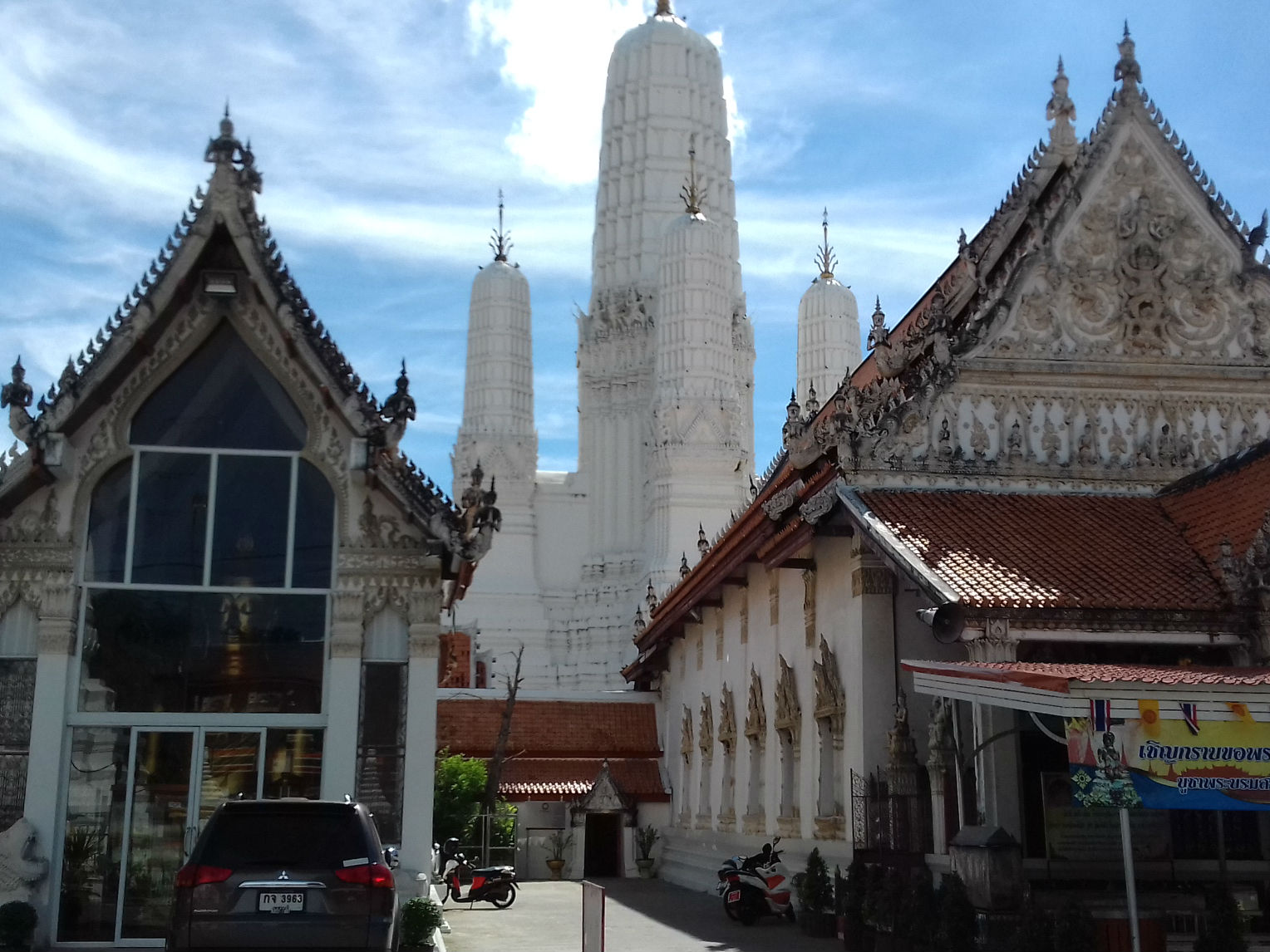
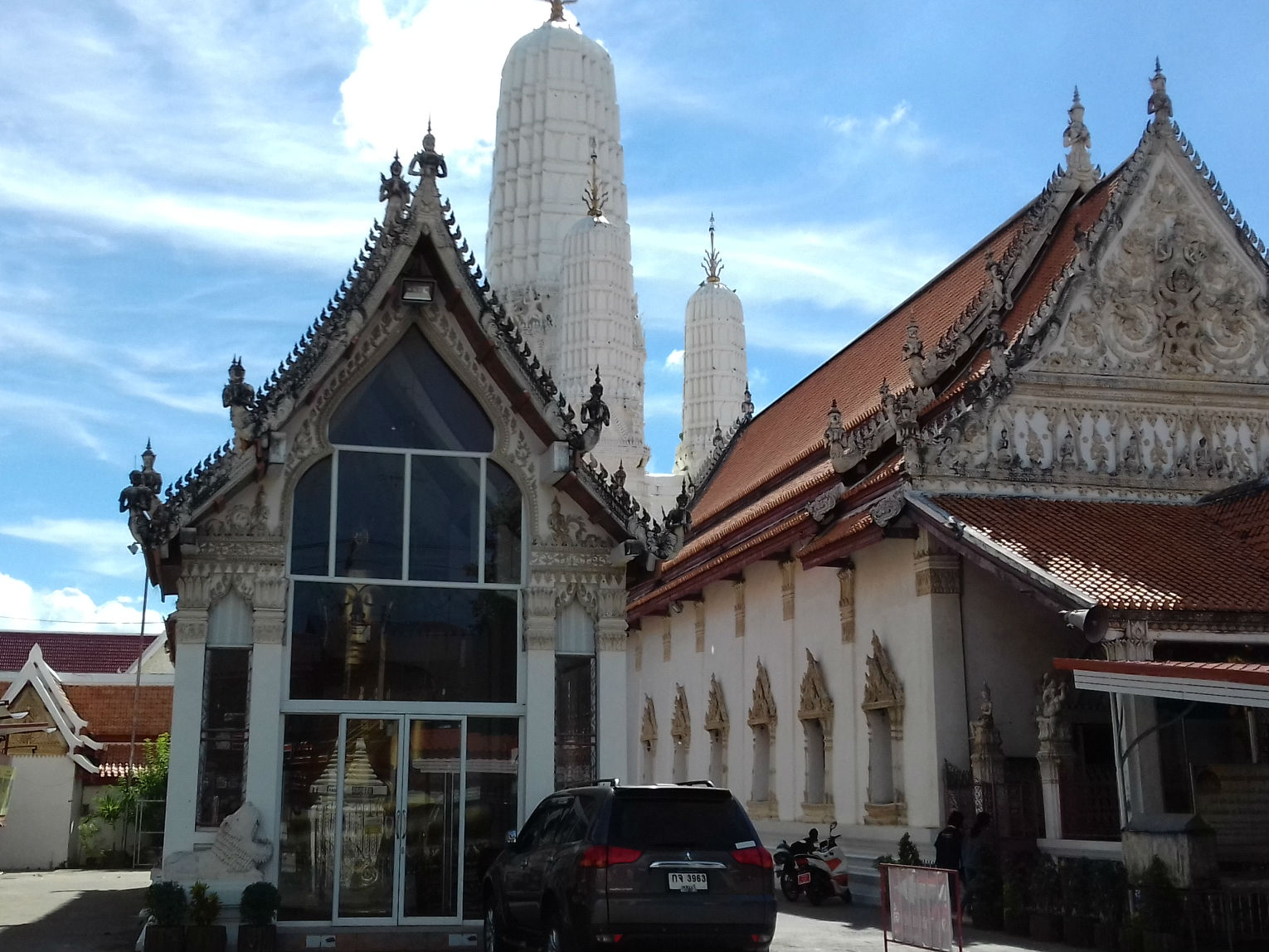
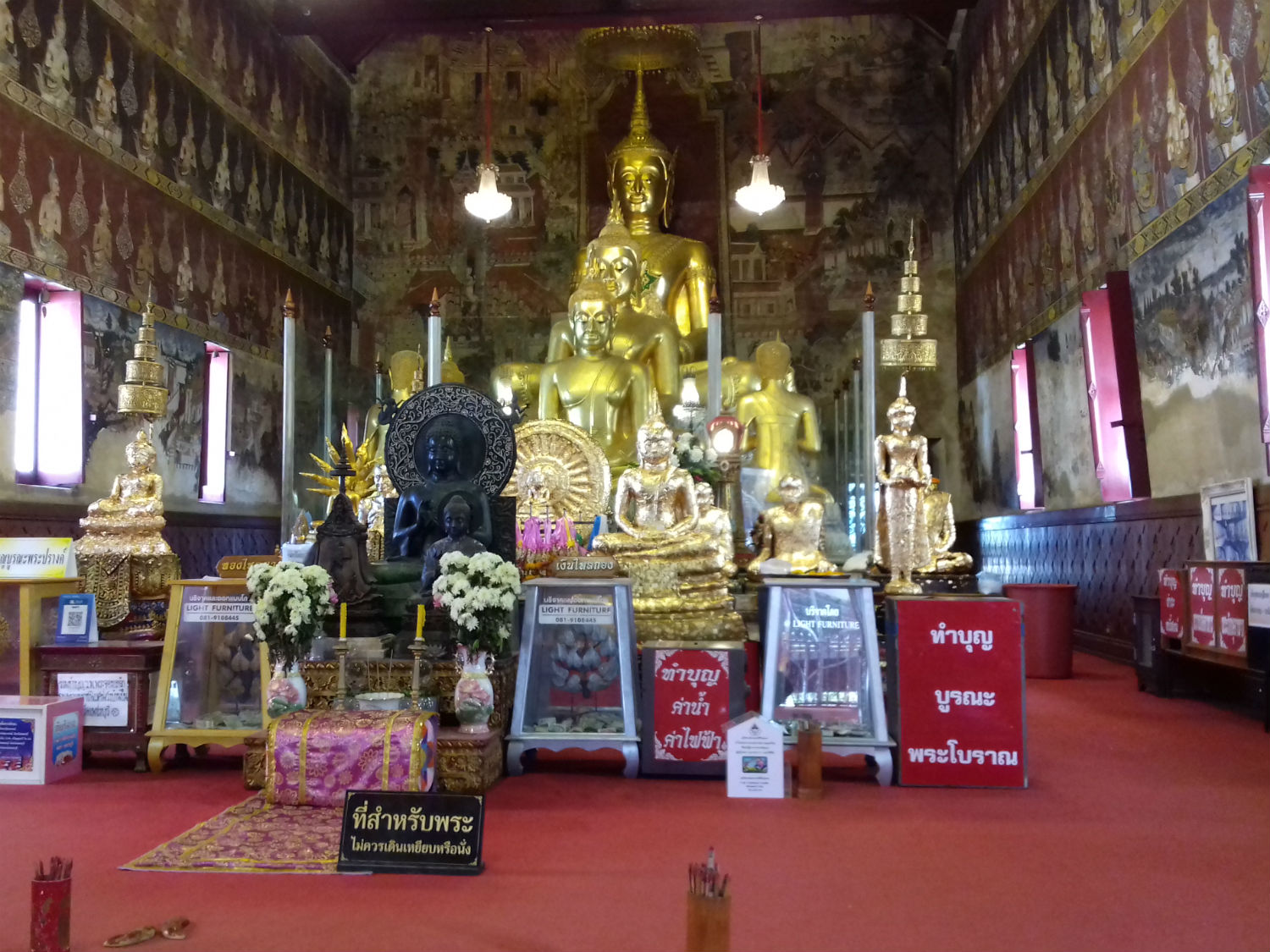
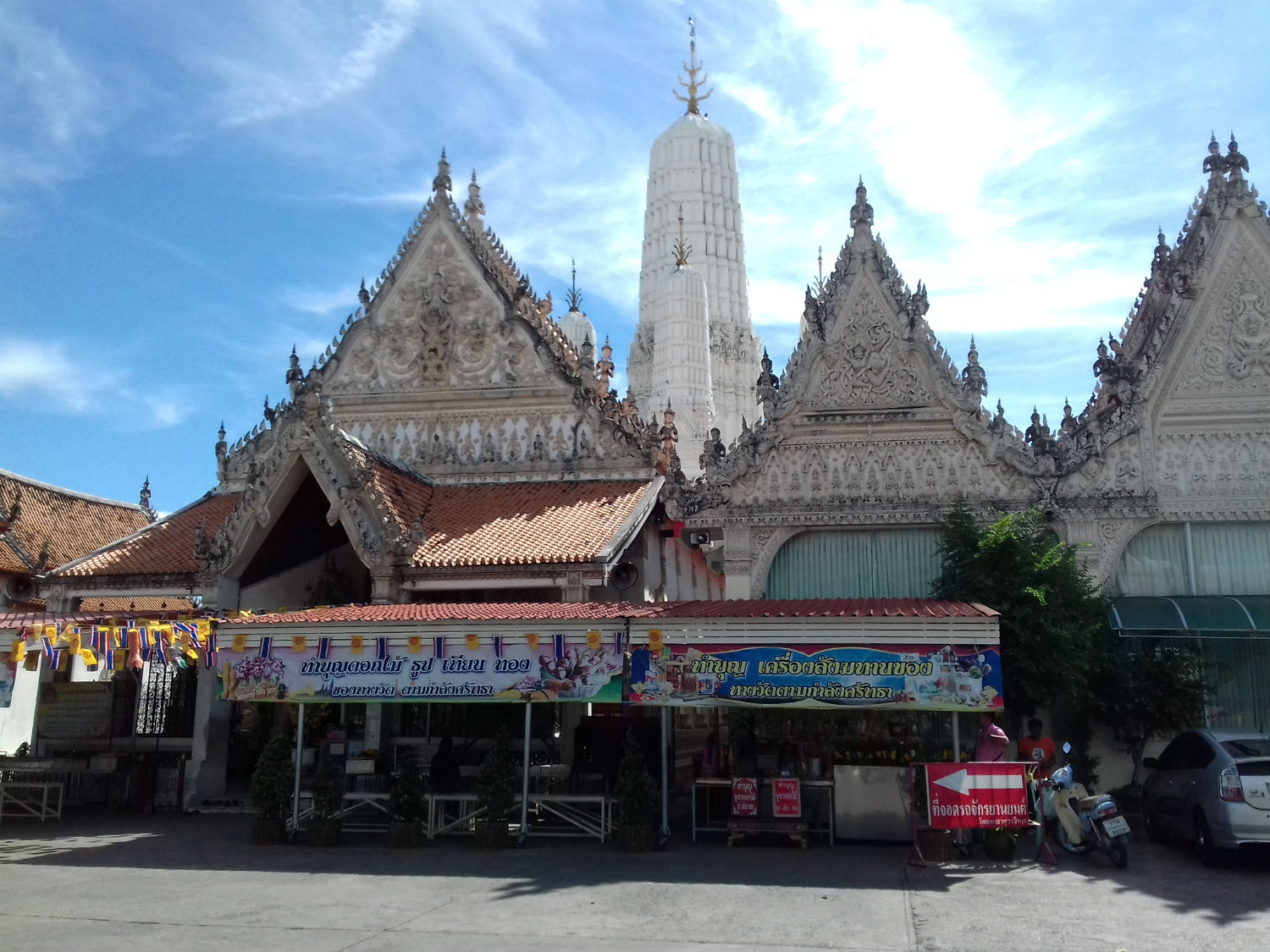
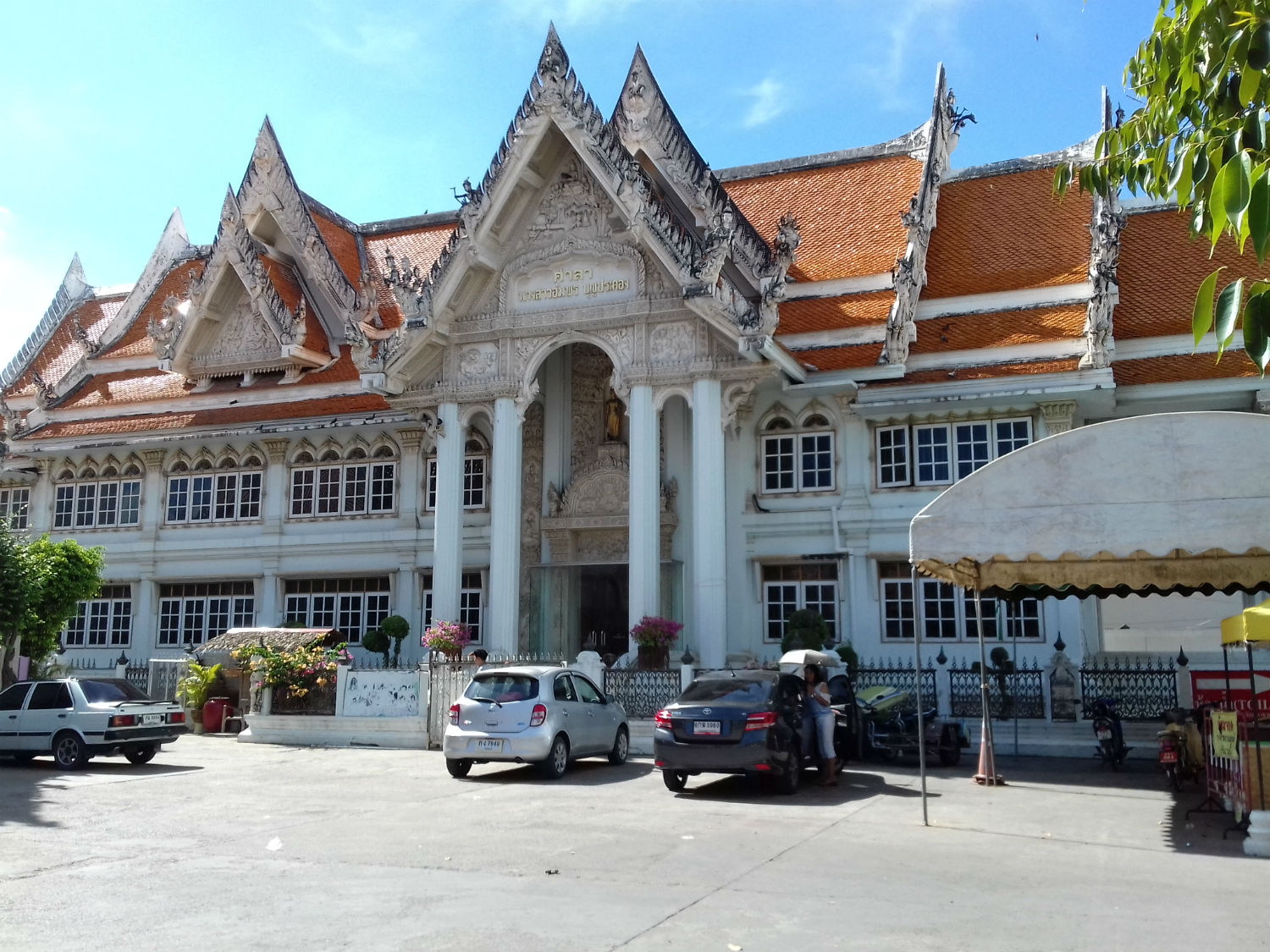
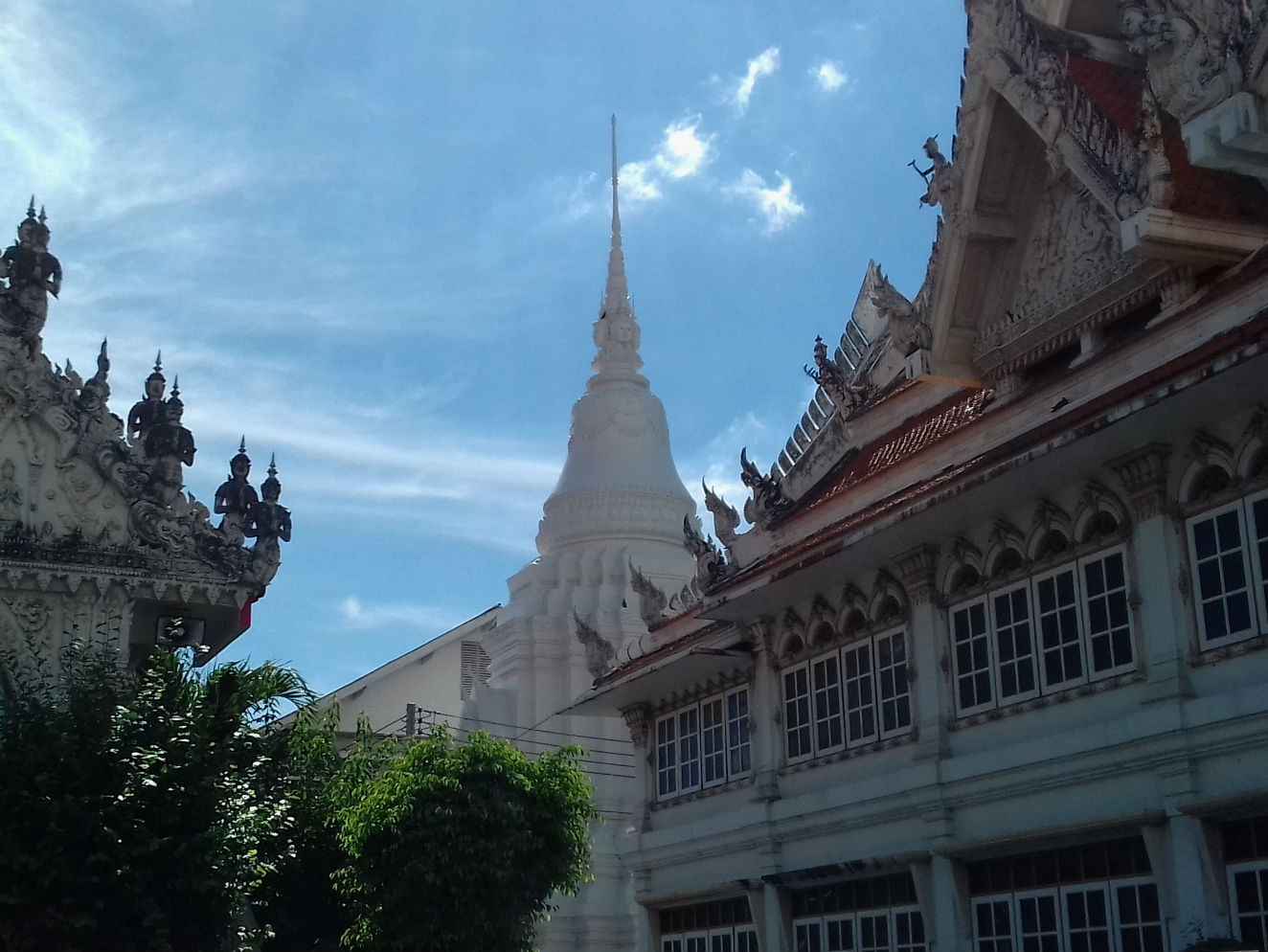 Wat Mahathat Worawihan, Phetchaburi
Wat Mahathat Worawihan, Phetchaburi
Phra Ram Ratchaniwet........Earlier while at the Phra Nakhon Khiri Palace I learnt that this was a summer palace built by King Rama IV. Later King Rama V used in a many occasions but found in unsuitable in the rainy season. Towards the end of his reign he ordered a new palace to be built near the river in Phetchaburi to be called Phra Ram Ratchaniwet. Also known as Praratchawang Ban Puen it is a masterpiece in architectural design, an elegant palace in Baroque early 20th century design. It was designed by German architect Karl Siegfried Doring who had earlier designed the Kaiser’s Summer Palace. Unfortunately while King Rama V laid the foundation stone in 1910 he never lived to see the palace completed. While his son Rama VI used the palace during the 15 years of his reign, thereafter it fell into disuse as no agreement could be reached regarding its future. Oddly it took a war to keep it functional as the army requested use of the building and surrounding land in the early years of WWII. Today the army still occupies the land it was granted then, except that it later transferred the palace building and immediately surrounding ground into the care of the Fine Arts Department.
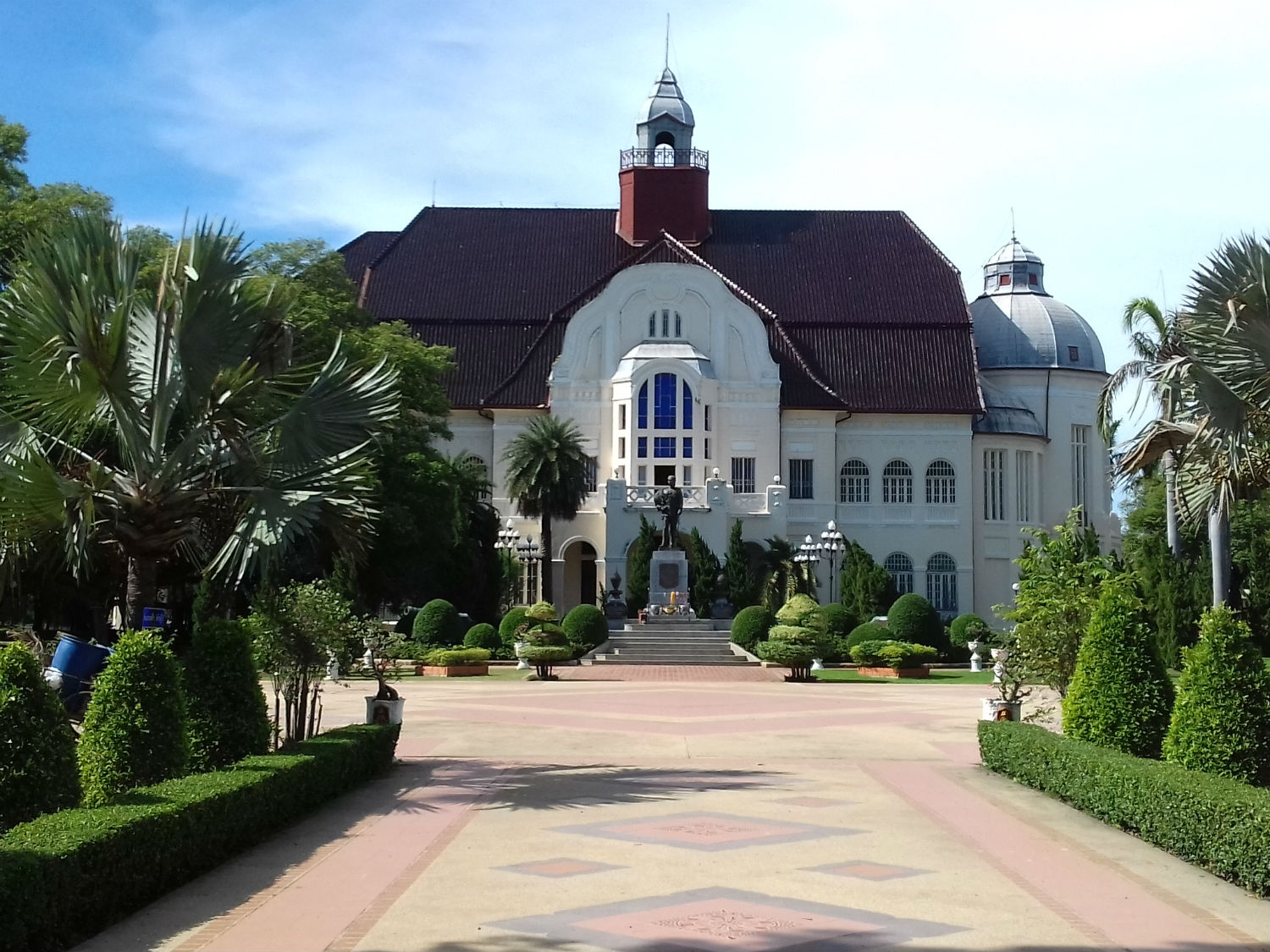
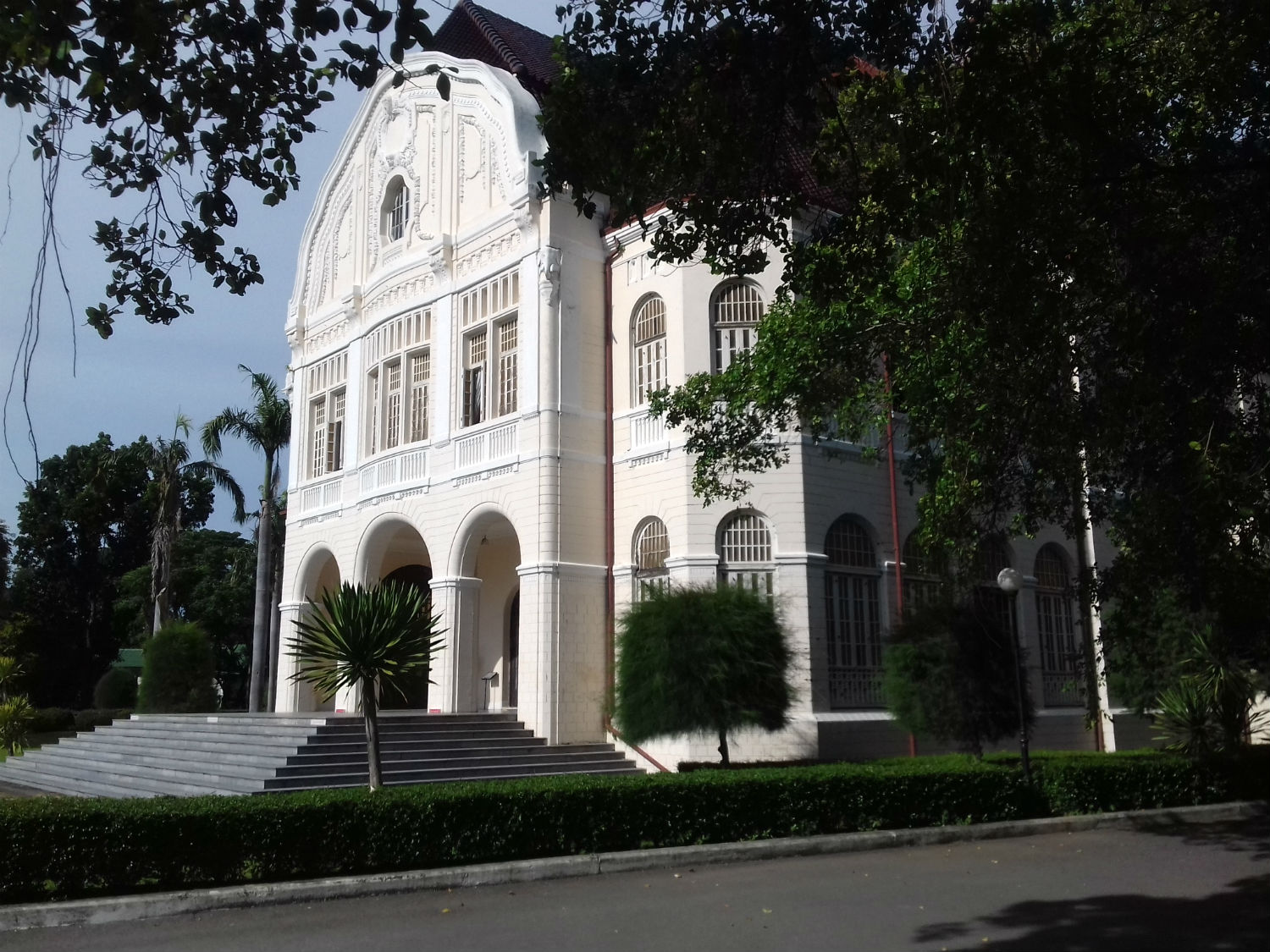
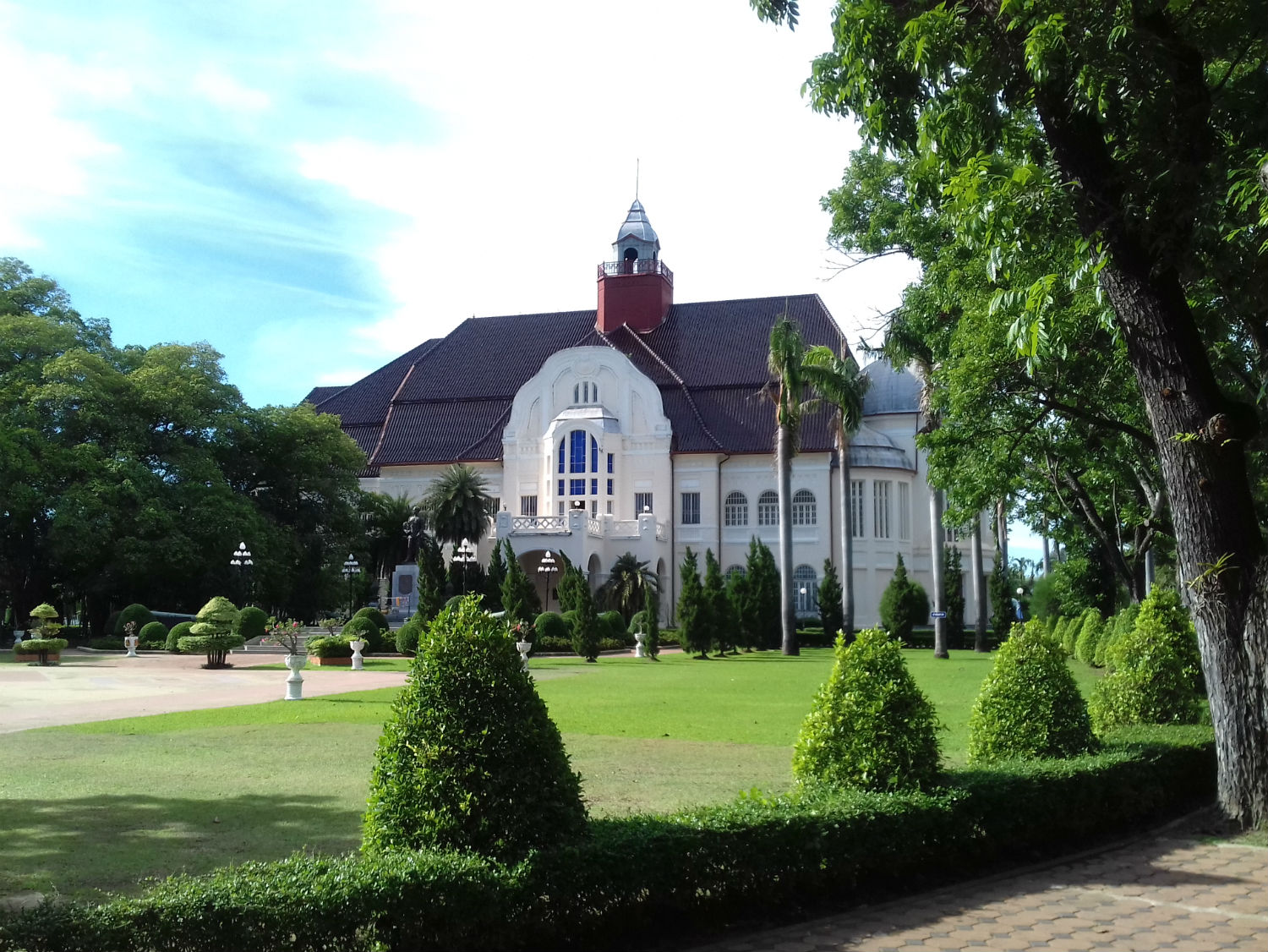 Phra Ram Ratchaniwet, Phetchaburi
Phra Ram Ratchaniwet, Phetchaburi
Spending the best part of a hour in this area we have to move on.
Wat Phailorm........On the way to the next site, I request Katoon to slam on the anchors as I spot something unusual. Closer examination reveals and ancient ruin in the town that appears to be Khmer. The viharn is in relatively good condition now protected with a roof. It’s the first visual proof of ancient ruins in an area I wasn’t expecting any.
Wat Phailorm........On the way to the next site, I request Katoon to slam on the anchors as I spot something unusual. Closer examination reveals and ancient ruin in the town that appears to be Khmer. The viharn is in relatively good condition now protected with a roof. It’s the first visual proof of ancient ruins in an area I wasn’t expecting any.
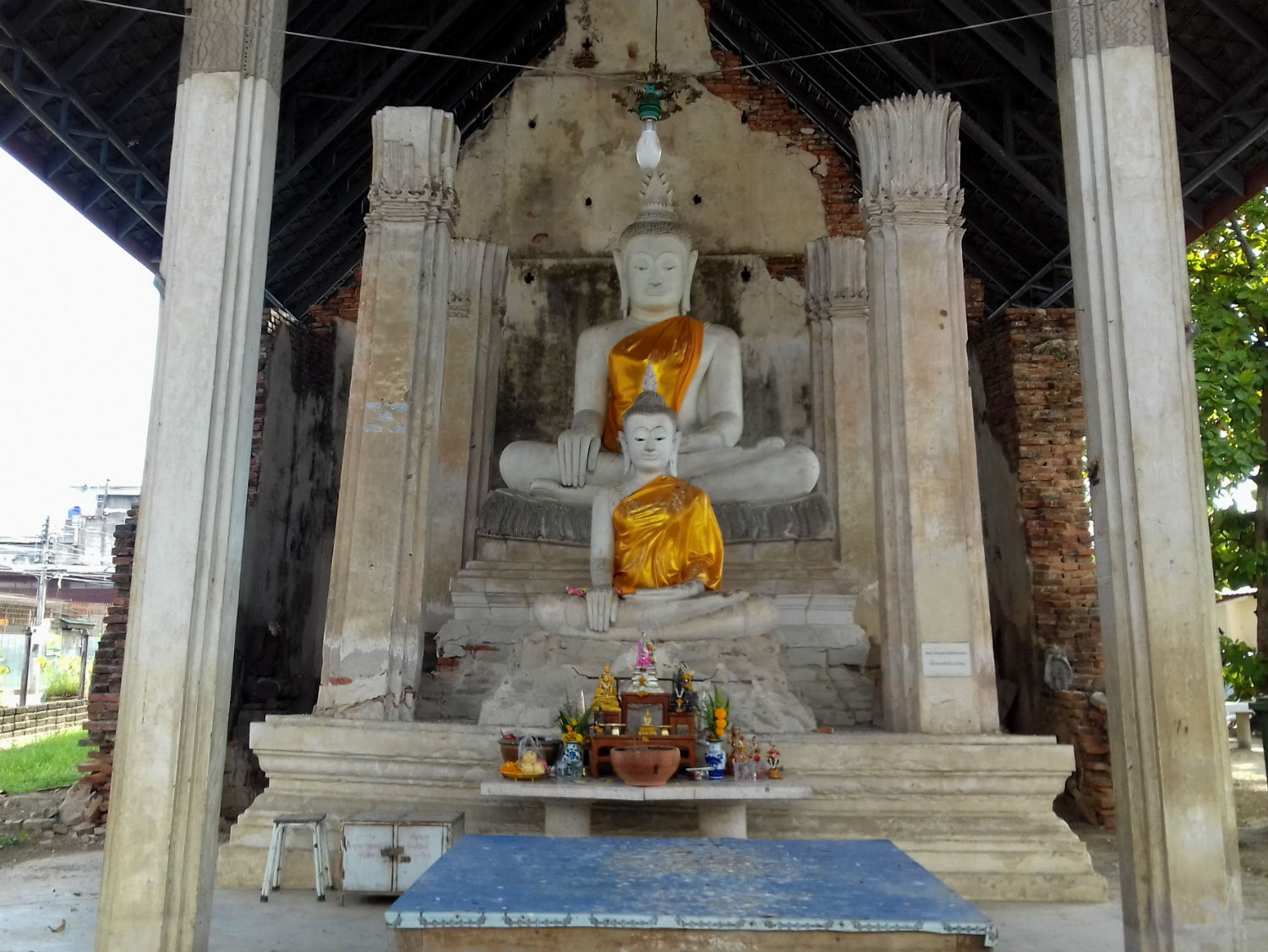
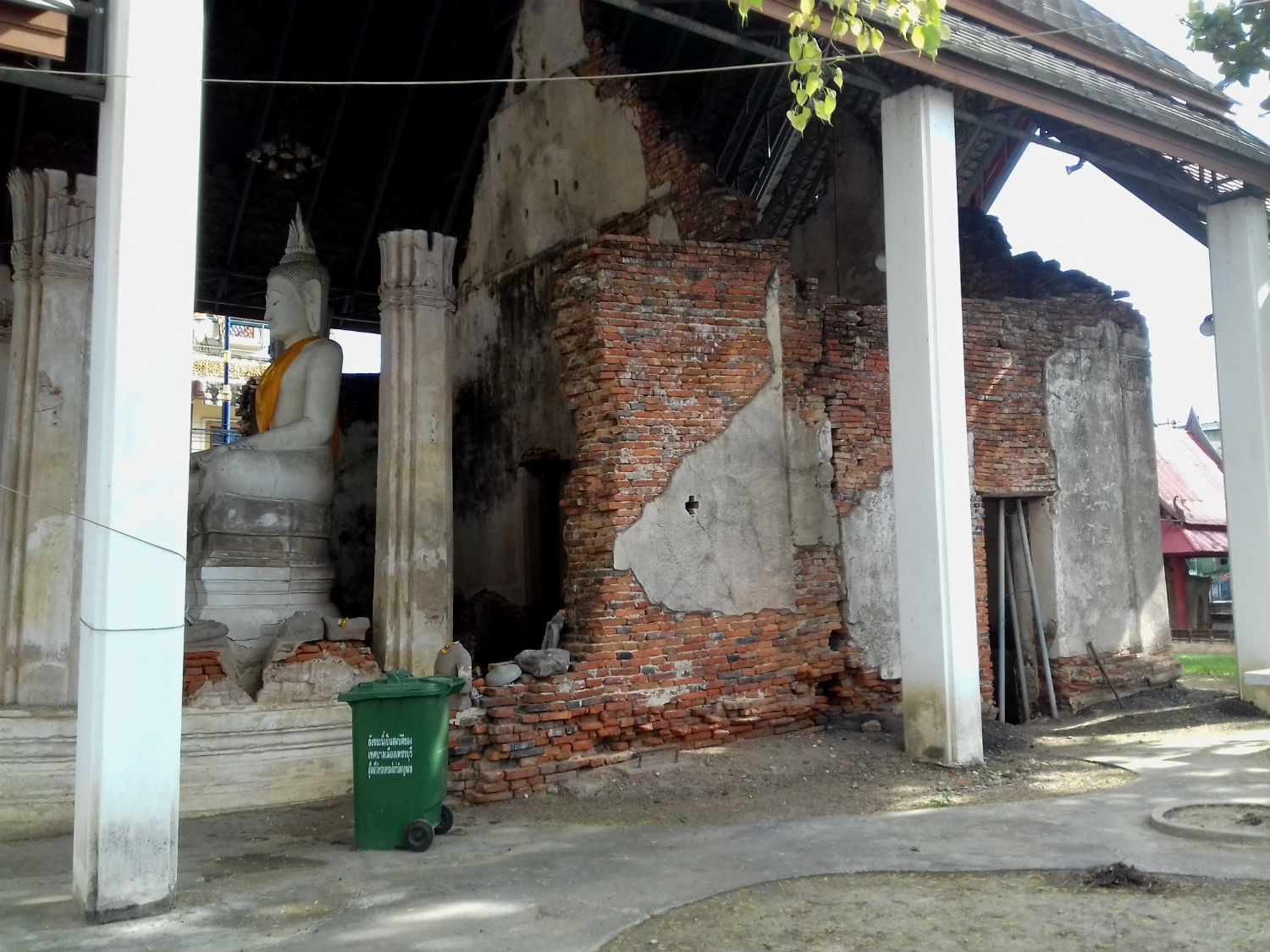
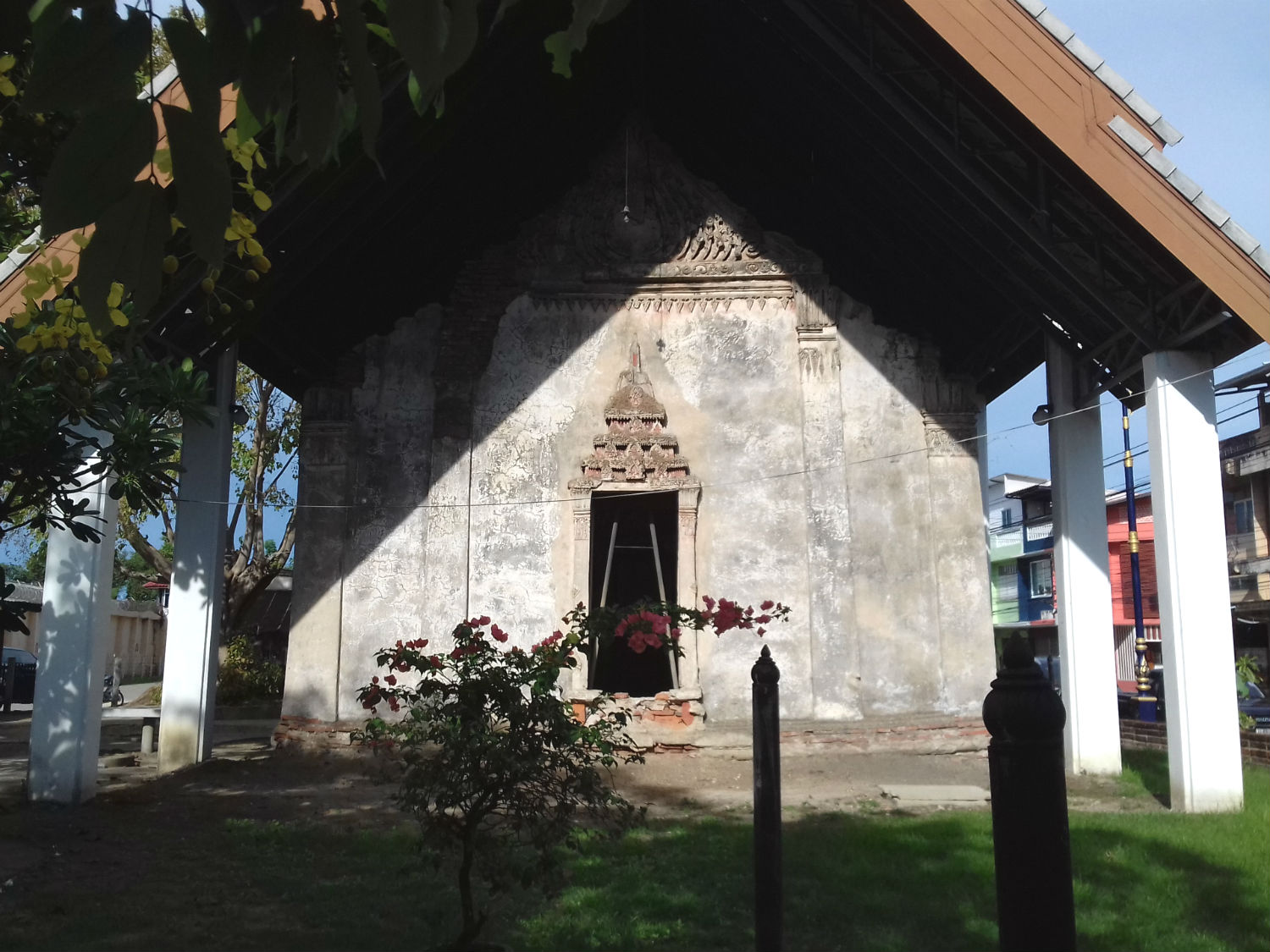
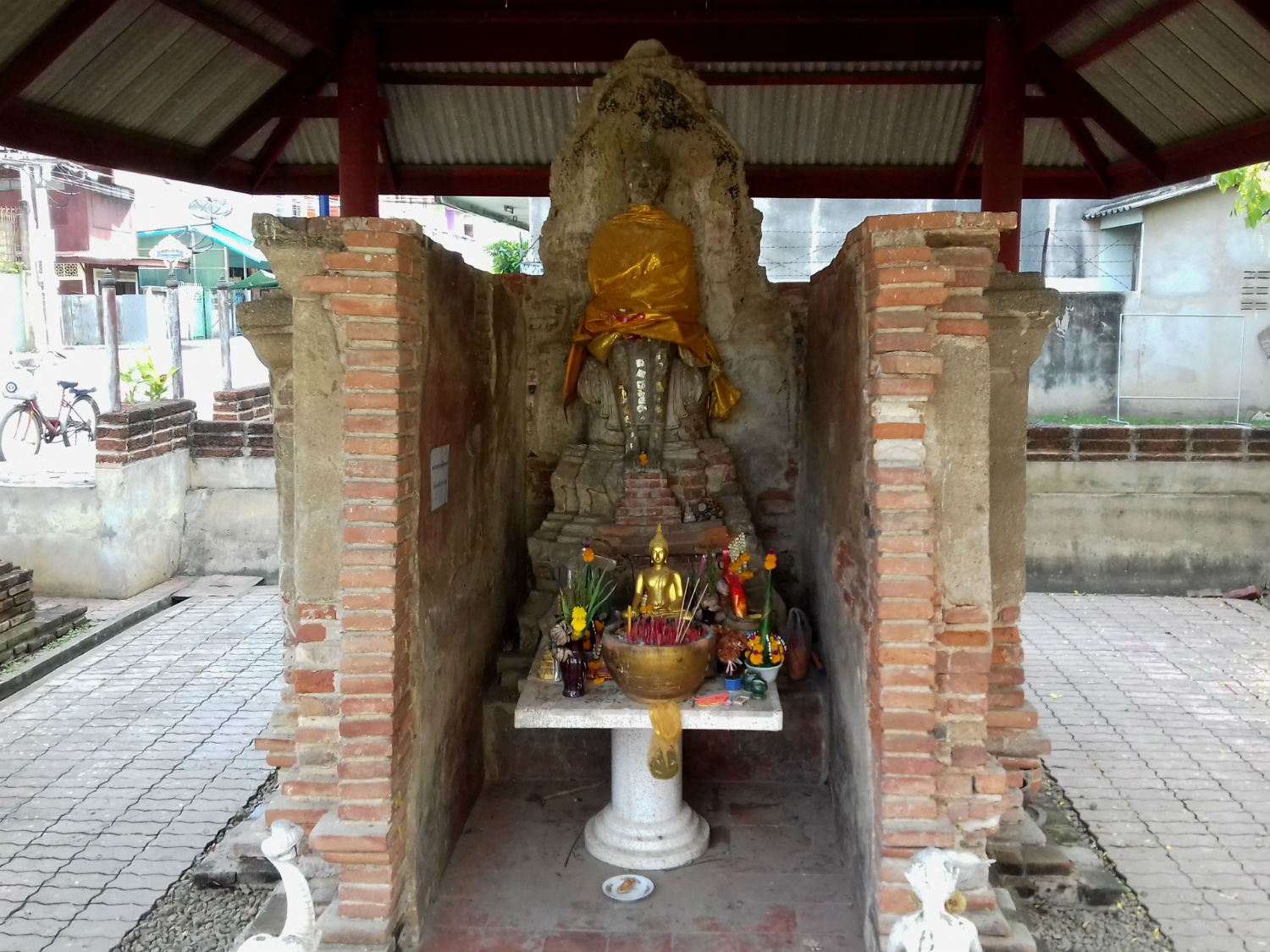
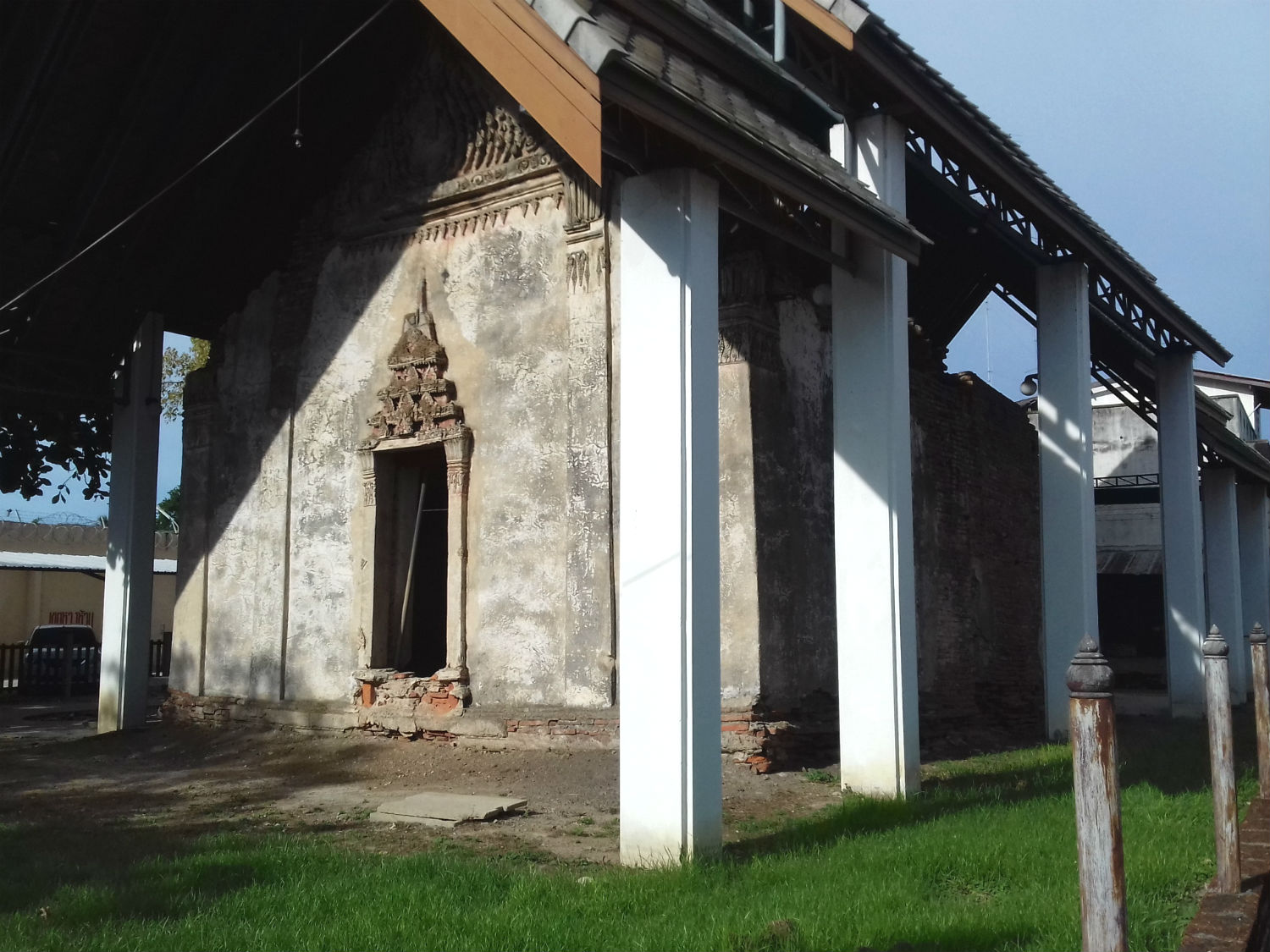
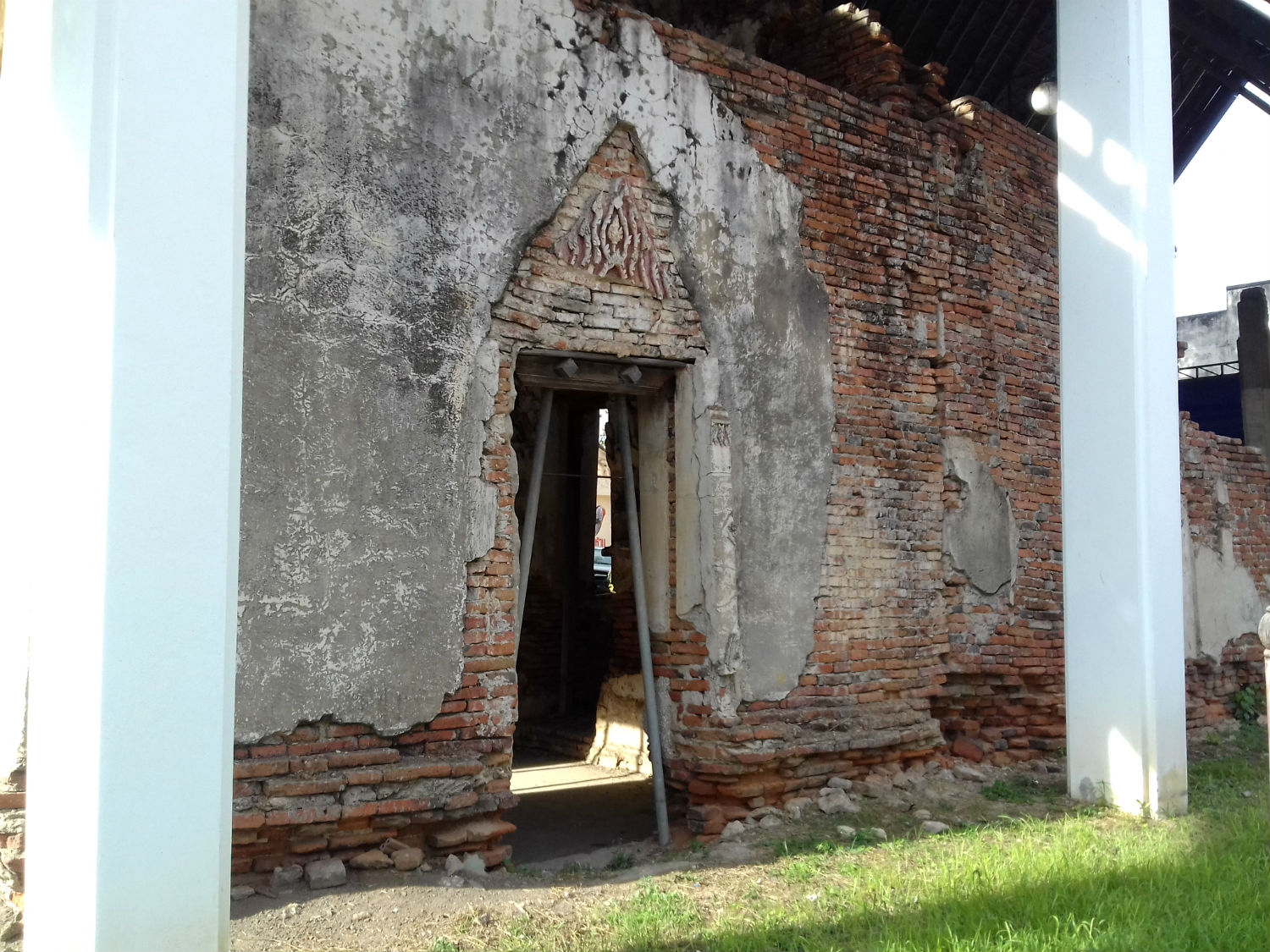 Wat Phailorm, Phetchaburi
Wat Phailorm, Phetchaburi
Wat Kampang Laeng........To reinforce my surprise at locating ancient ruins actually inside the city, my next location simply adds to the mystery: I only realised its presence from photographs just a couple of days ago.
Wat Kampang Laeng is clearly Khmer consisting of four sanctuaries in various states of ruin. The best preserved is the Eastern Shrine. Collectively there is enough evidence to establish the age of Wat Kampang Laeng. The remaining stucco motifs and general construction are consistent with the Bayon period, 13th century at the height of the Khmer Empire and with the practice of Mahayana Buddhism.
Prior to this discovery, my assumption was that the furthest point from the centre of the Khmer Empire was at Prasat Muang Sing in Kanchanaburi province. At this site I’ve definitely learnt something. Now I’m prepared to stick my neck out and say that this has to be right at the edge of Khmer influence at the time. By the end of the 15th century that Empire was in serious decline.
Wat Kampang Laeng is clearly Khmer consisting of four sanctuaries in various states of ruin. The best preserved is the Eastern Shrine. Collectively there is enough evidence to establish the age of Wat Kampang Laeng. The remaining stucco motifs and general construction are consistent with the Bayon period, 13th century at the height of the Khmer Empire and with the practice of Mahayana Buddhism.
Prior to this discovery, my assumption was that the furthest point from the centre of the Khmer Empire was at Prasat Muang Sing in Kanchanaburi province. At this site I’ve definitely learnt something. Now I’m prepared to stick my neck out and say that this has to be right at the edge of Khmer influence at the time. By the end of the 15th century that Empire was in serious decline.
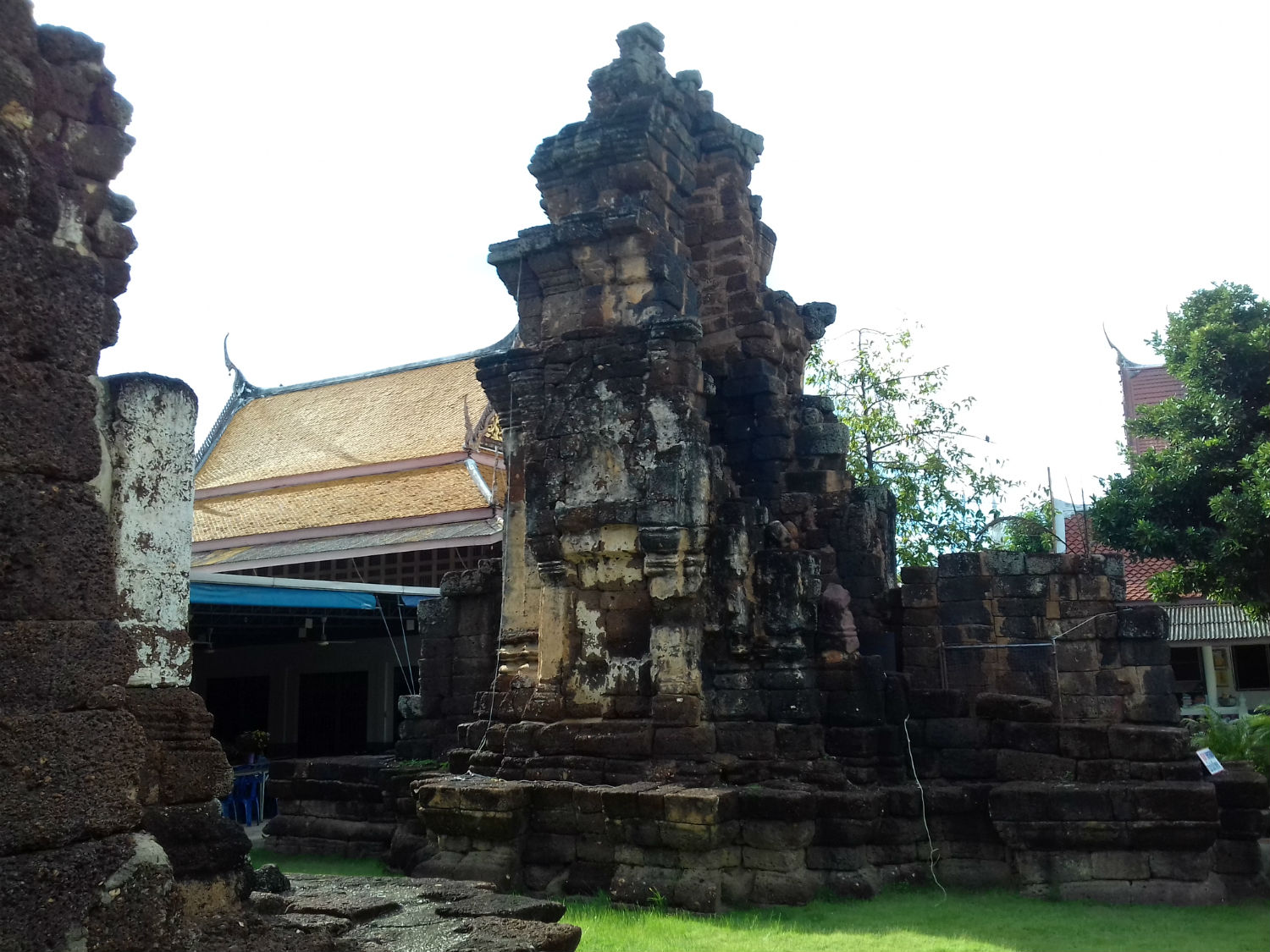
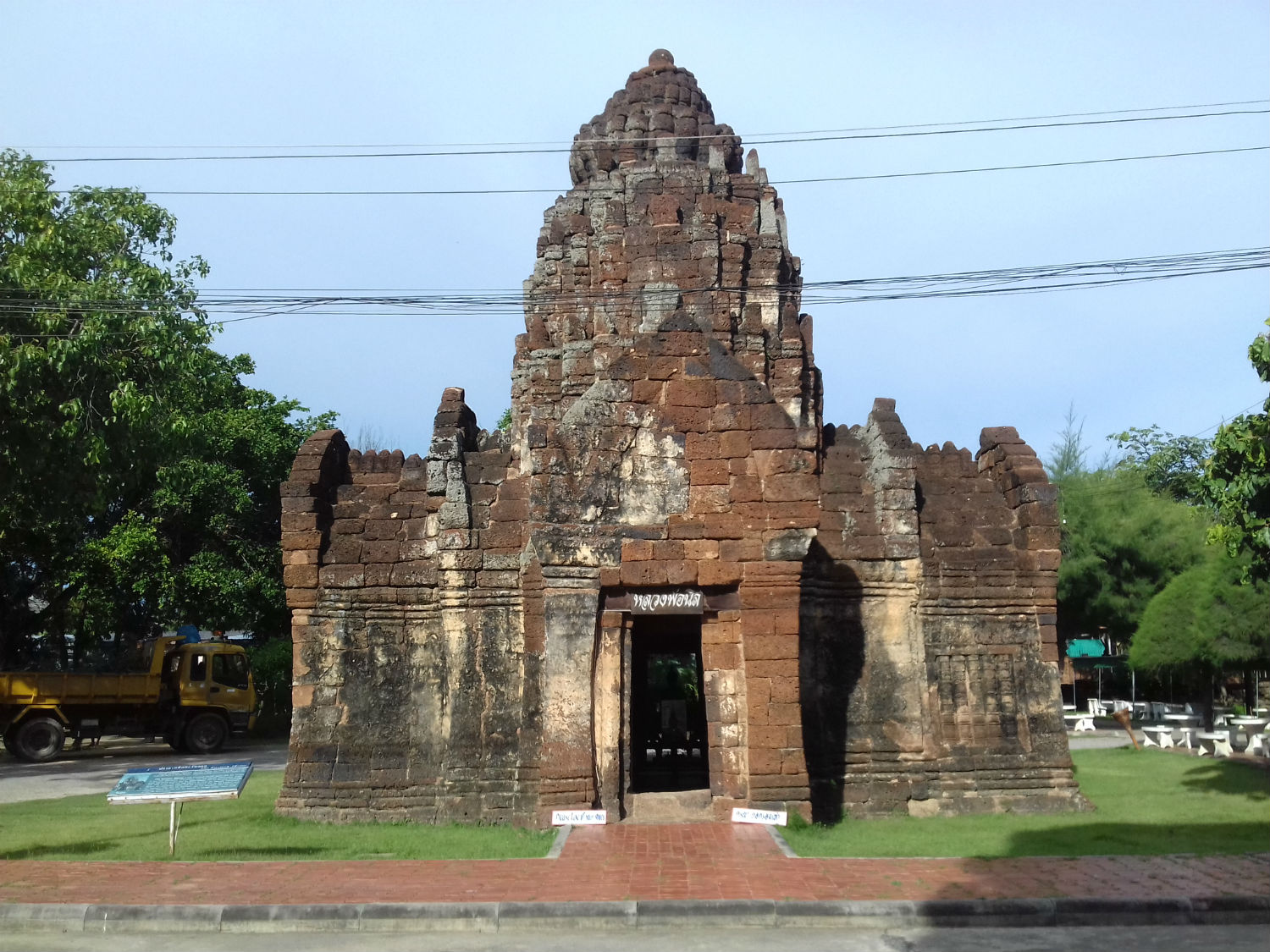
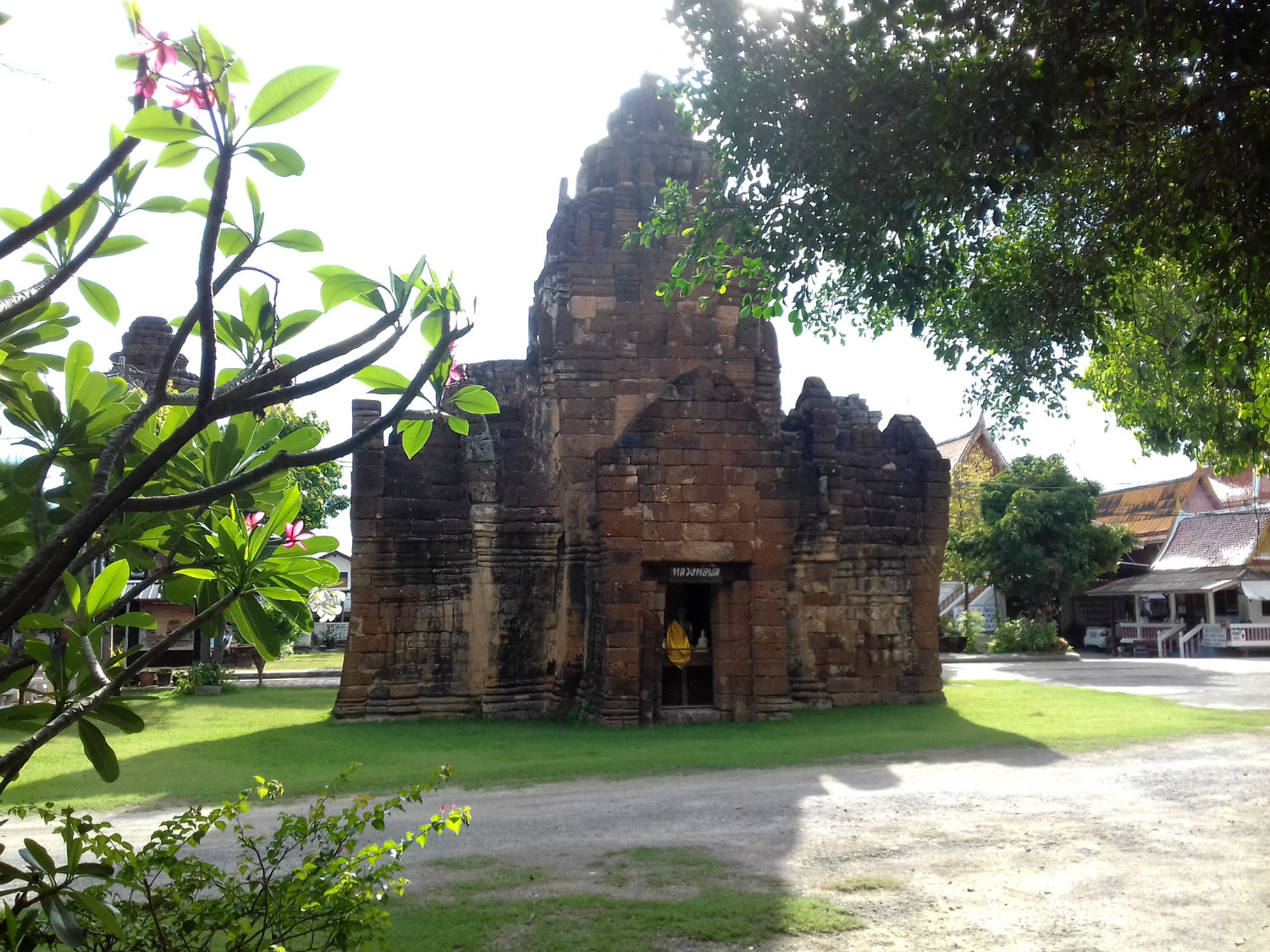
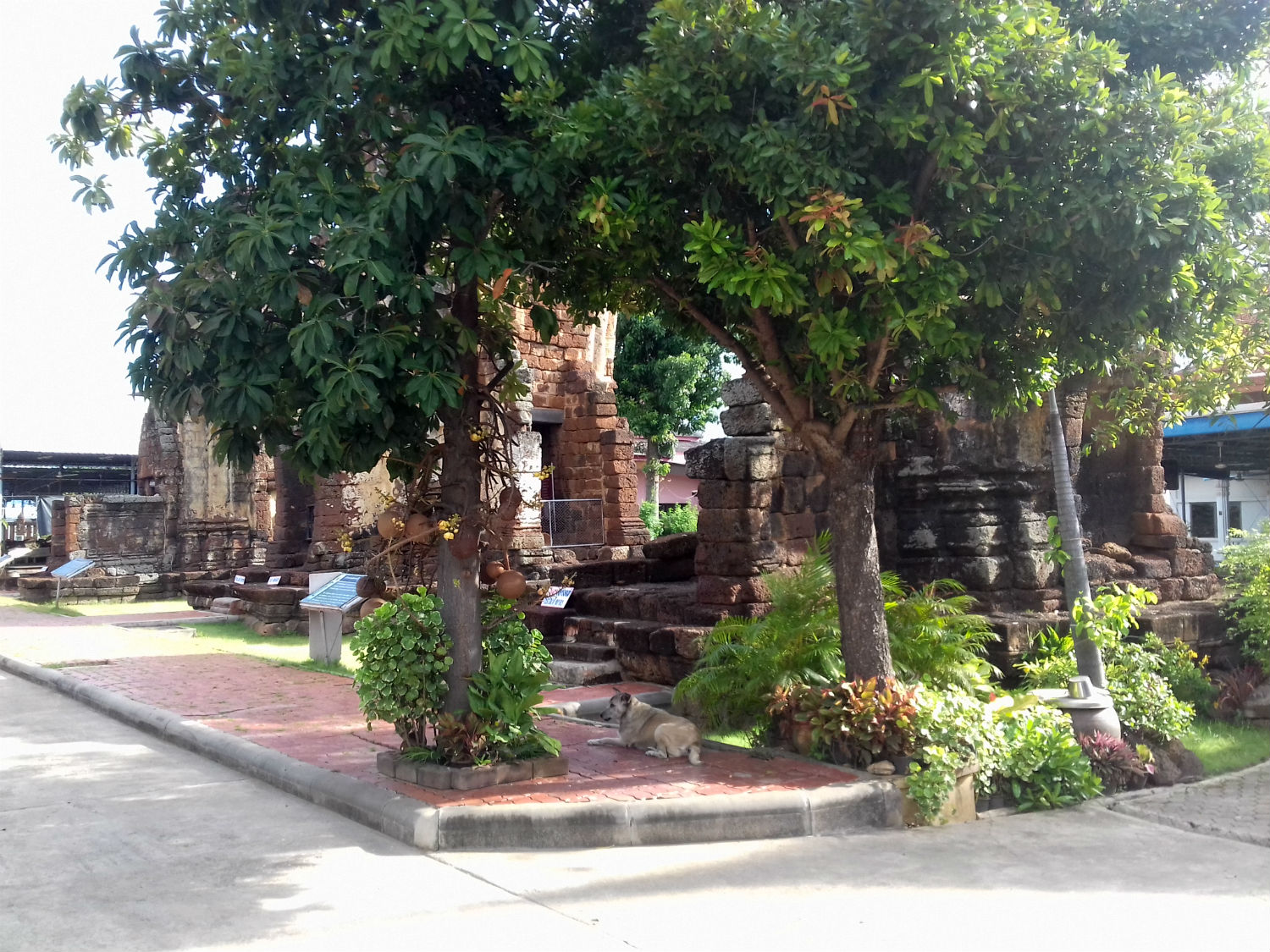
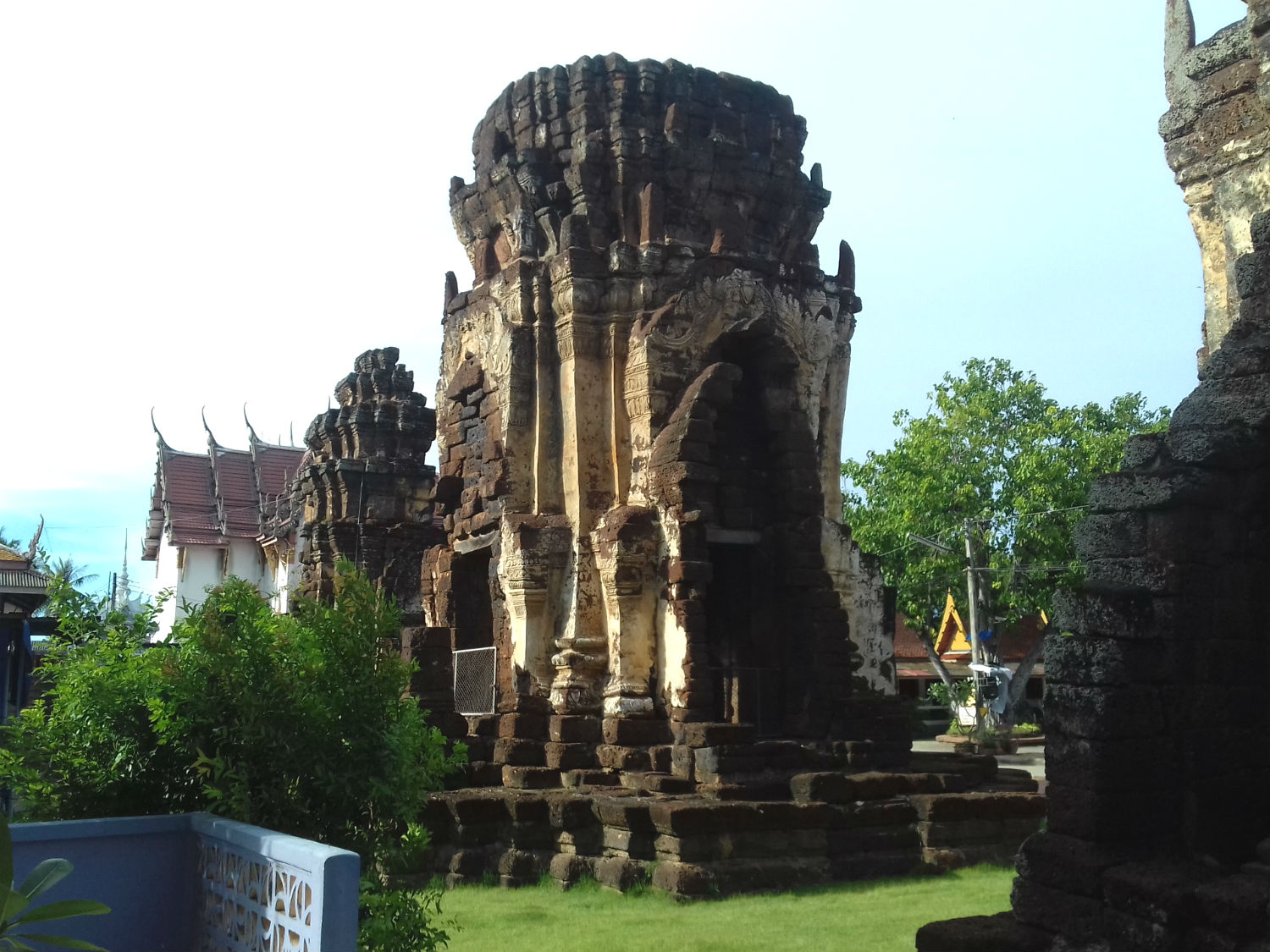
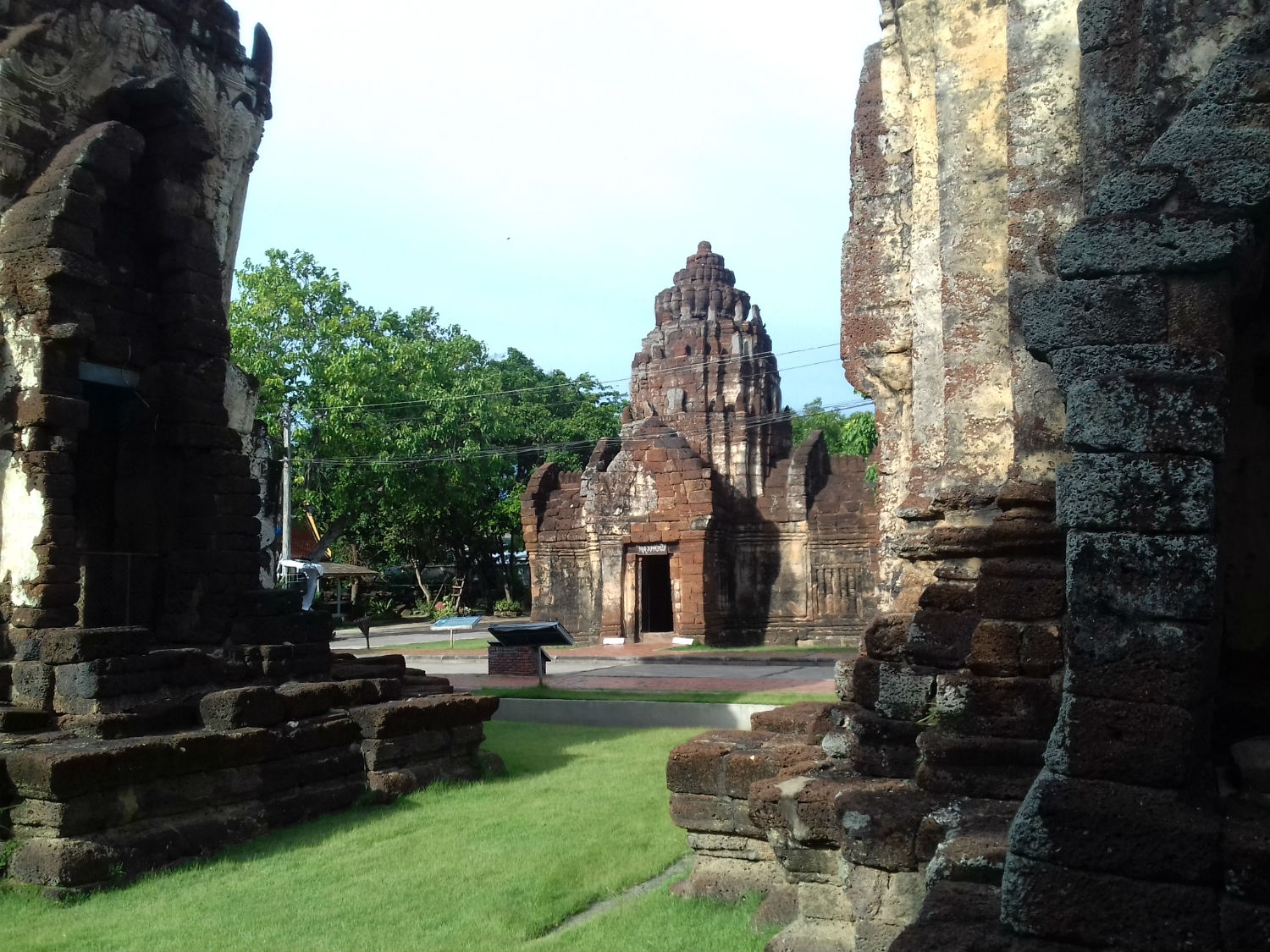 Wat Kampang Laeng, Phetchaburi
Wat Kampang Laeng, Phetchaburi
Wat Yai Suwannaram........Arriving at Wat Yai Suwannaram now in late afternoon I can’t find a recent site board in English that I can work from: Having said that, I get a rough indication of the age of this temple from a resident monk who is happy to describe some of the features. From this I know it dates from the Ayutthaya period so has to be more than 250 years old but I need to find out more and turn to an online source which helps a lot. According to this account Wat Yai Suwannaram, situated just a kilometer east of the city hall, features a windowless main shrine hall, housing magnificent 300-year-old murals of mythical angels. Its Sala Kanprian (multi-purpose hall), which was once located in Ayutthaya's Grand Palace, was entirely built of teakwood and decorated with fine woodwork especially the door panels. There is also a preaching throne with magnificently elaborated Bangkok style woodcarvings and gold gilt works.
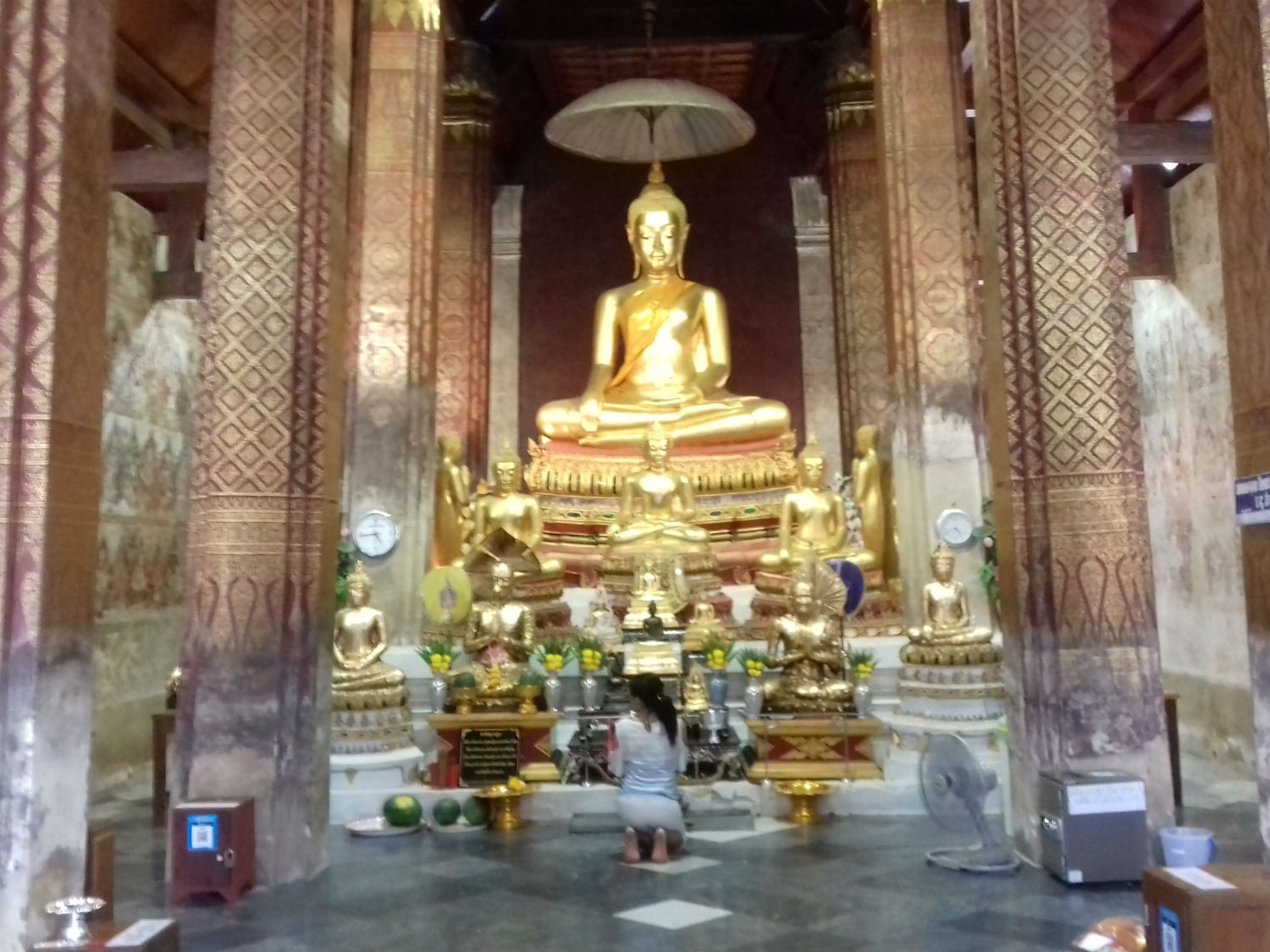
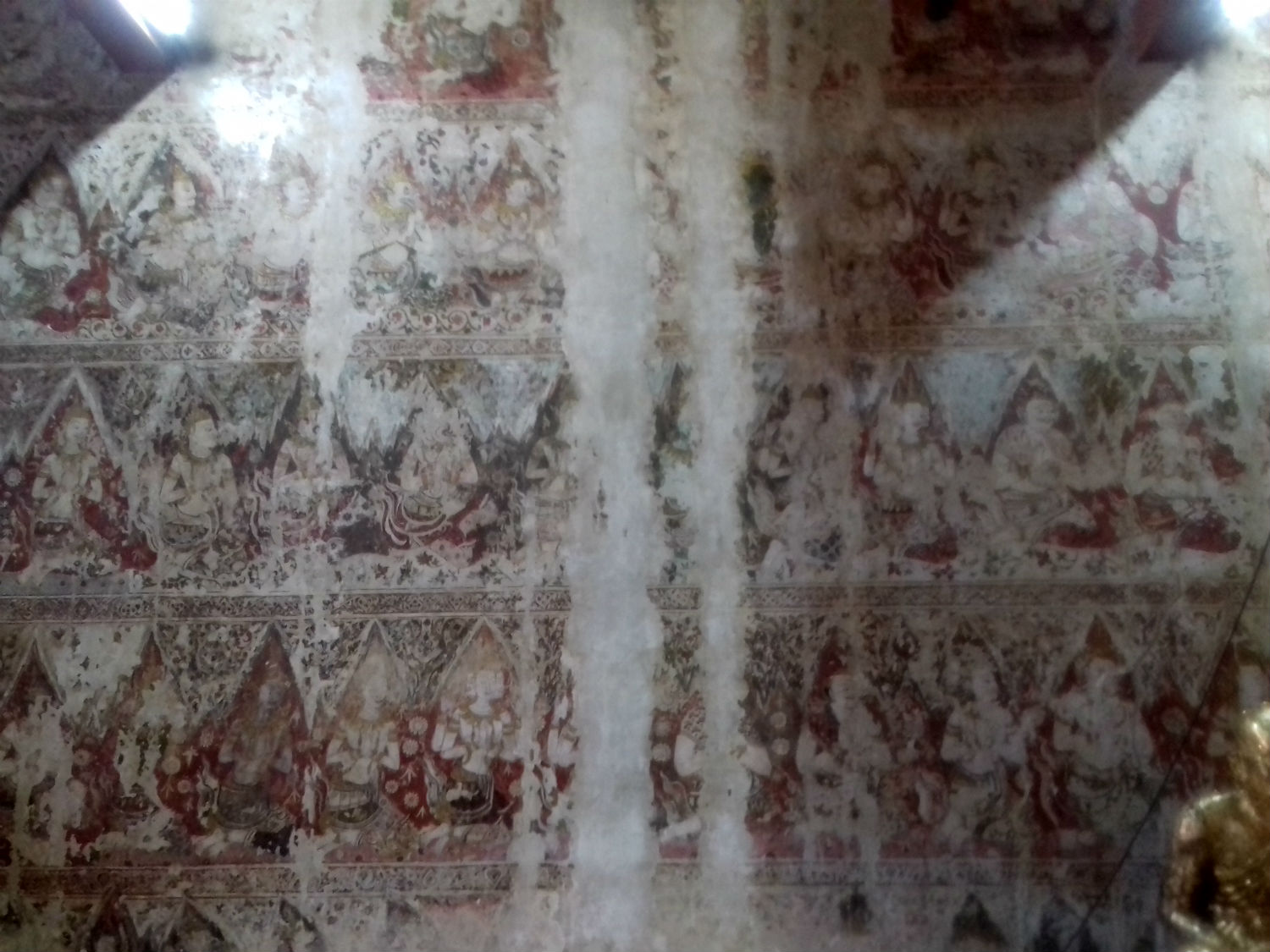
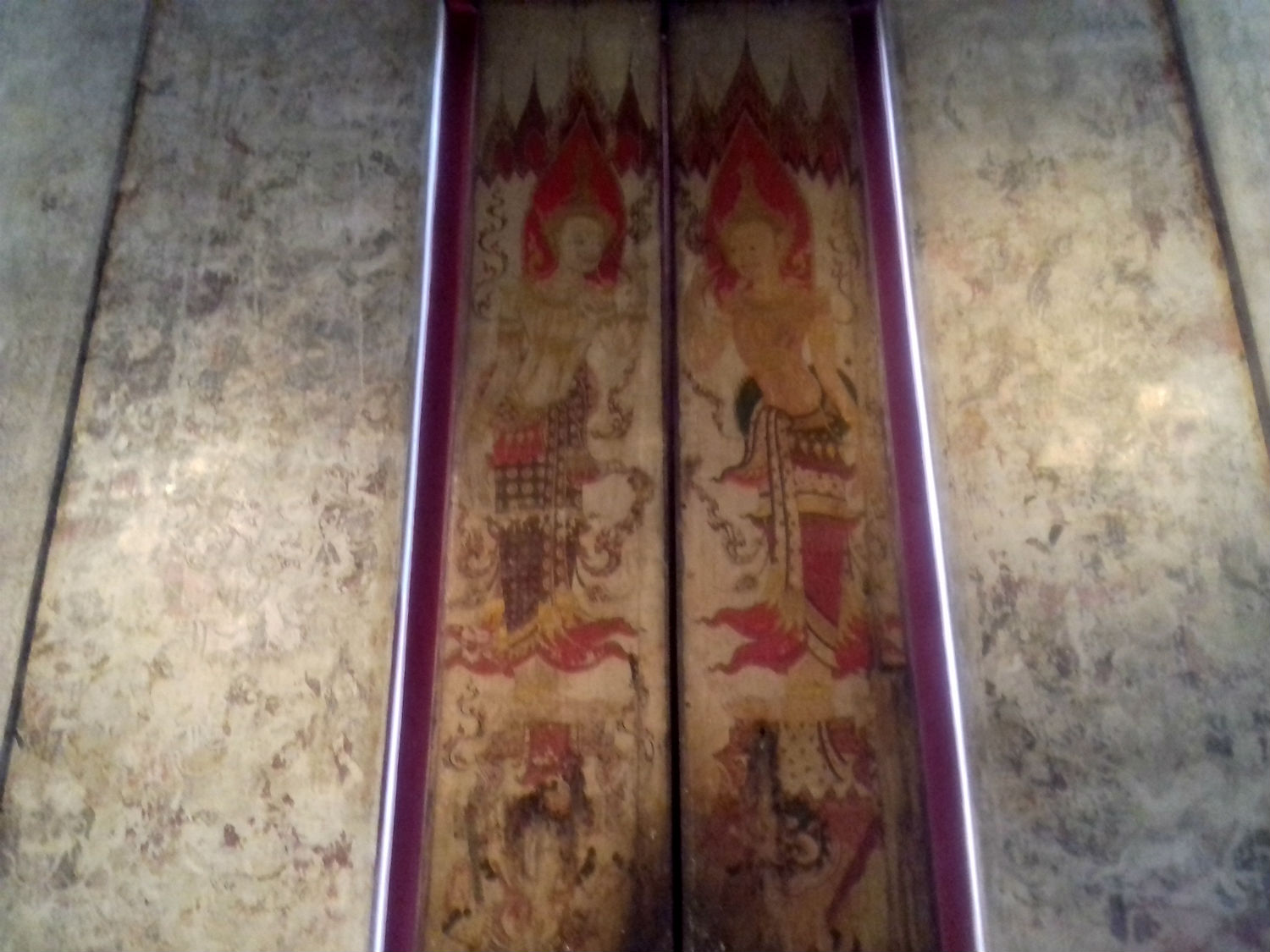
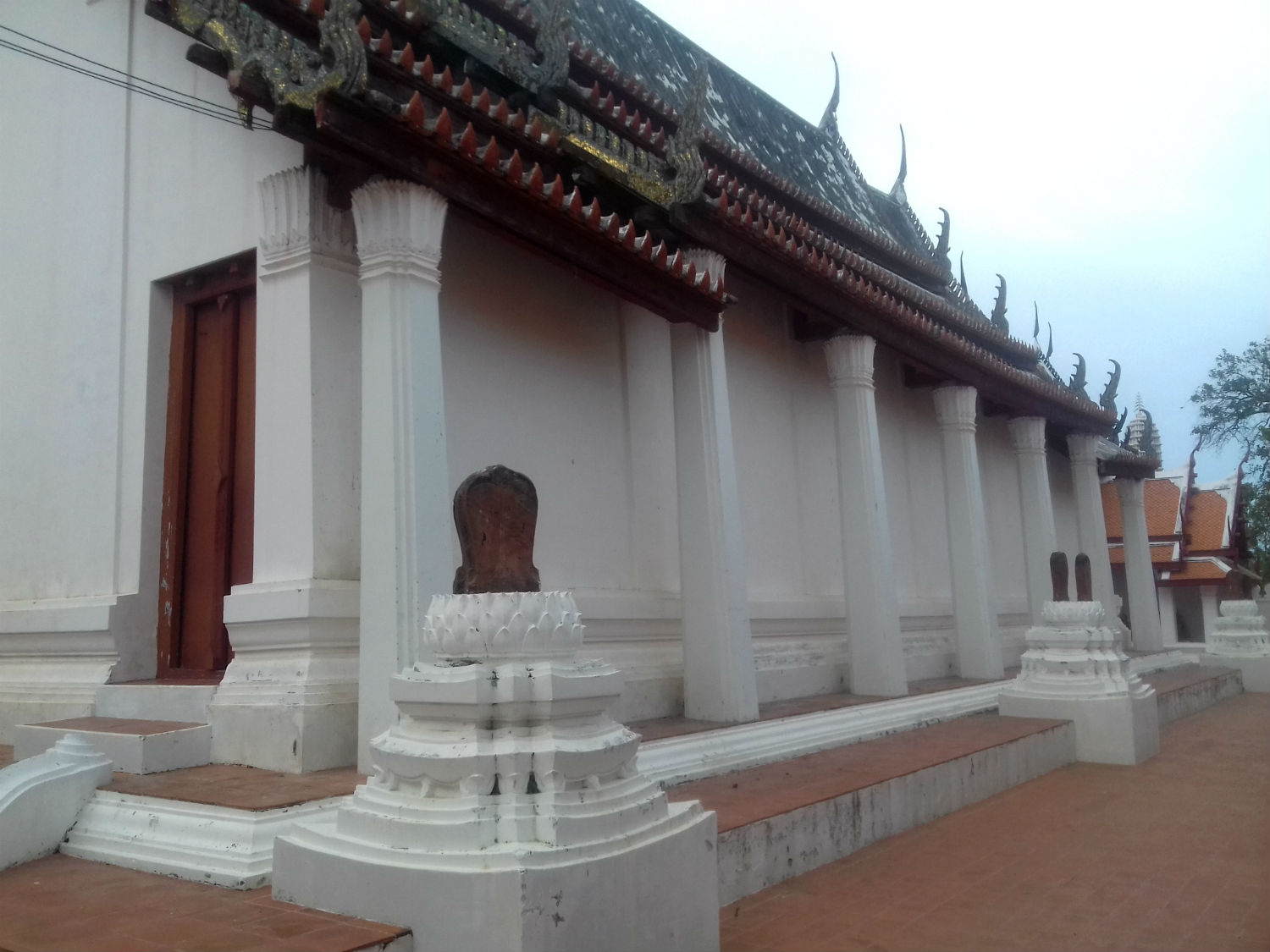
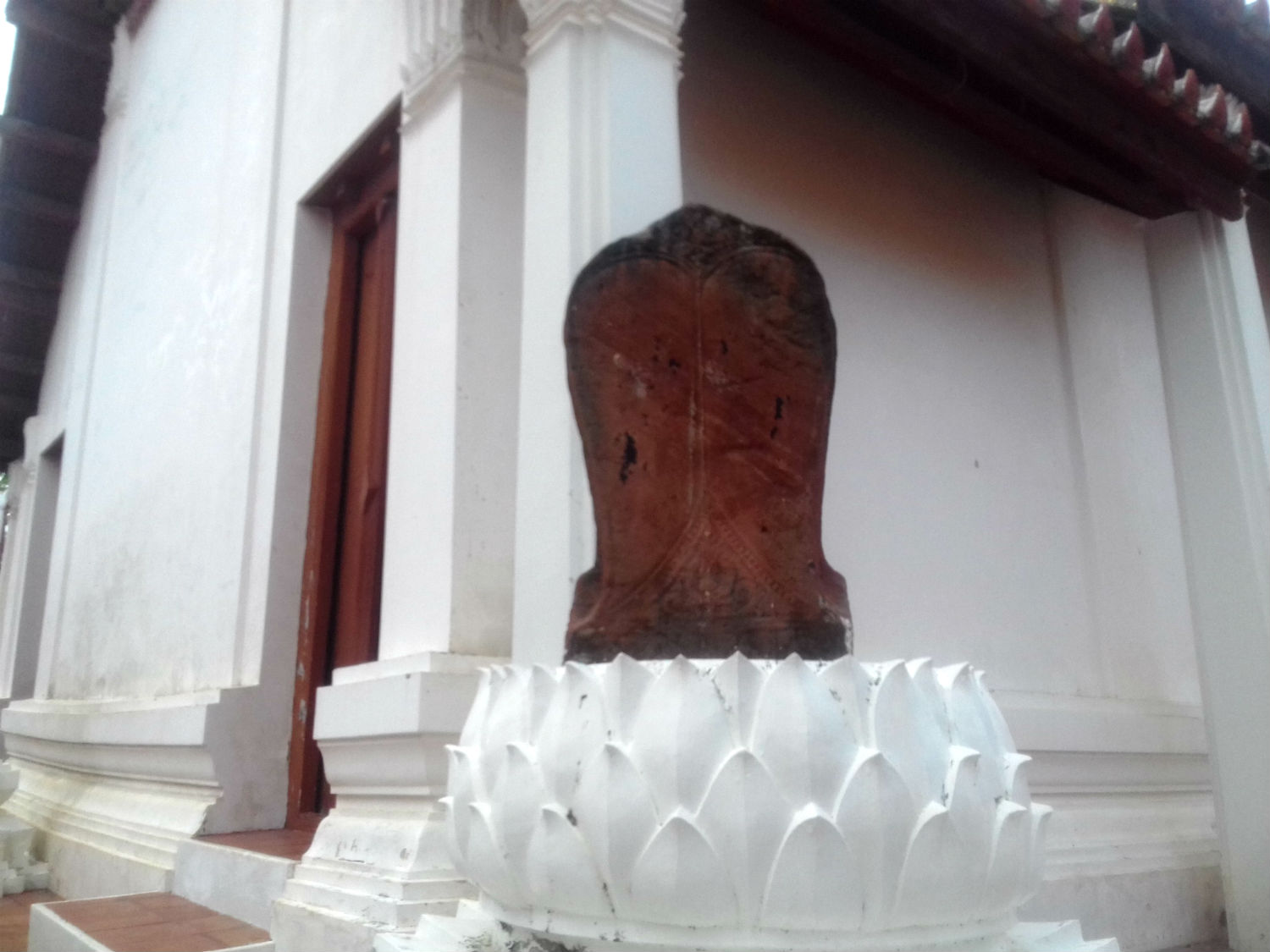
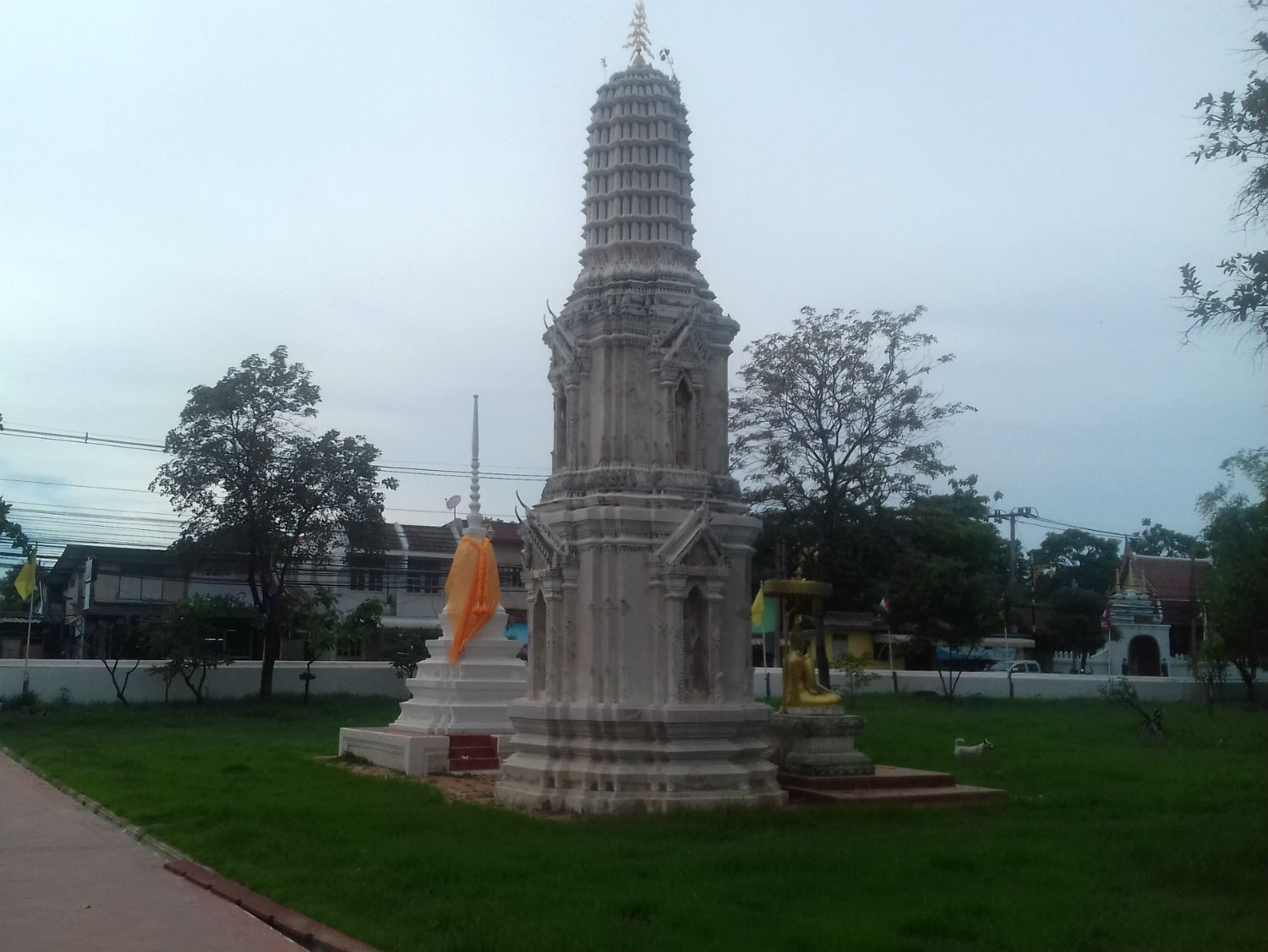
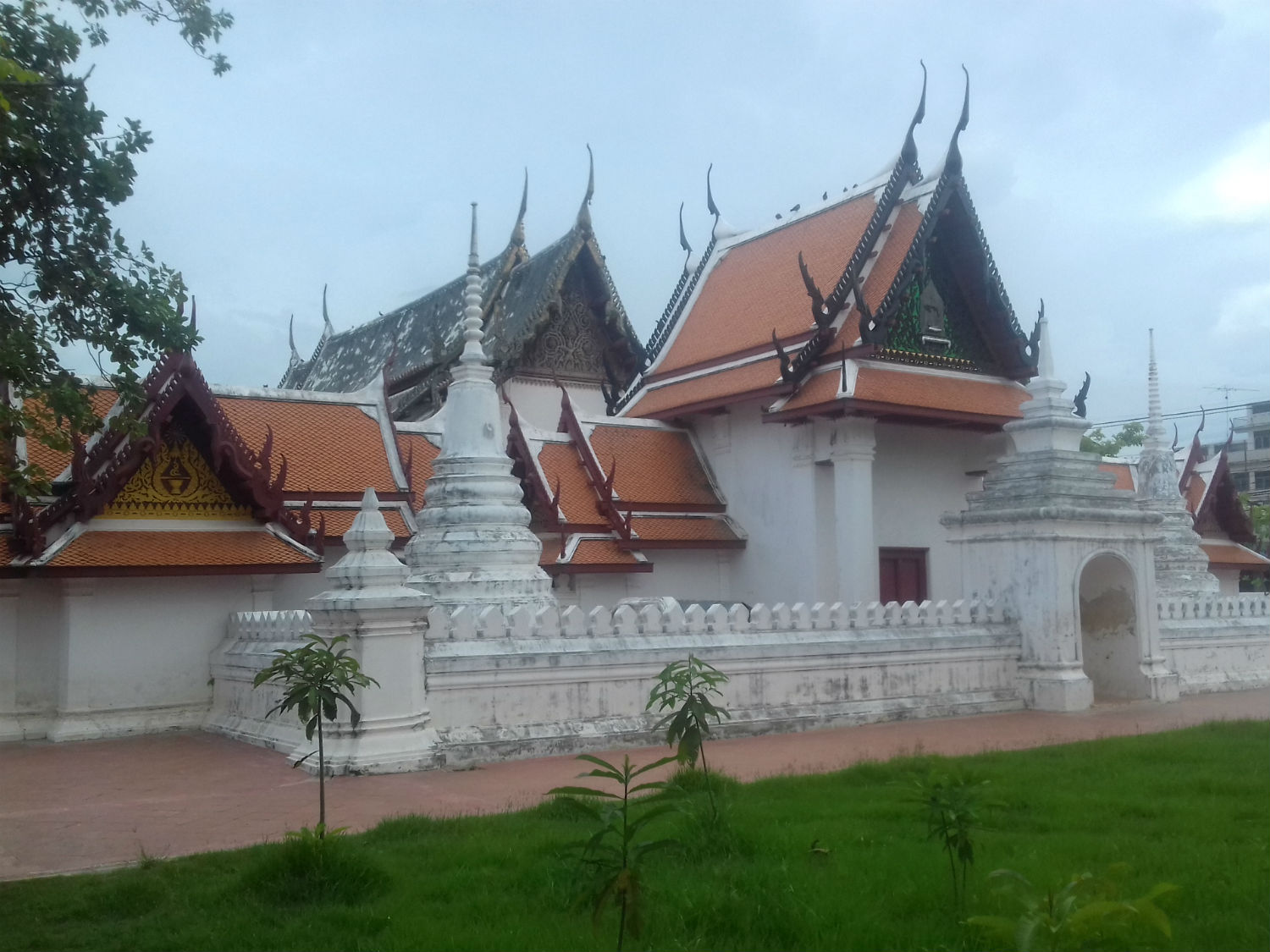
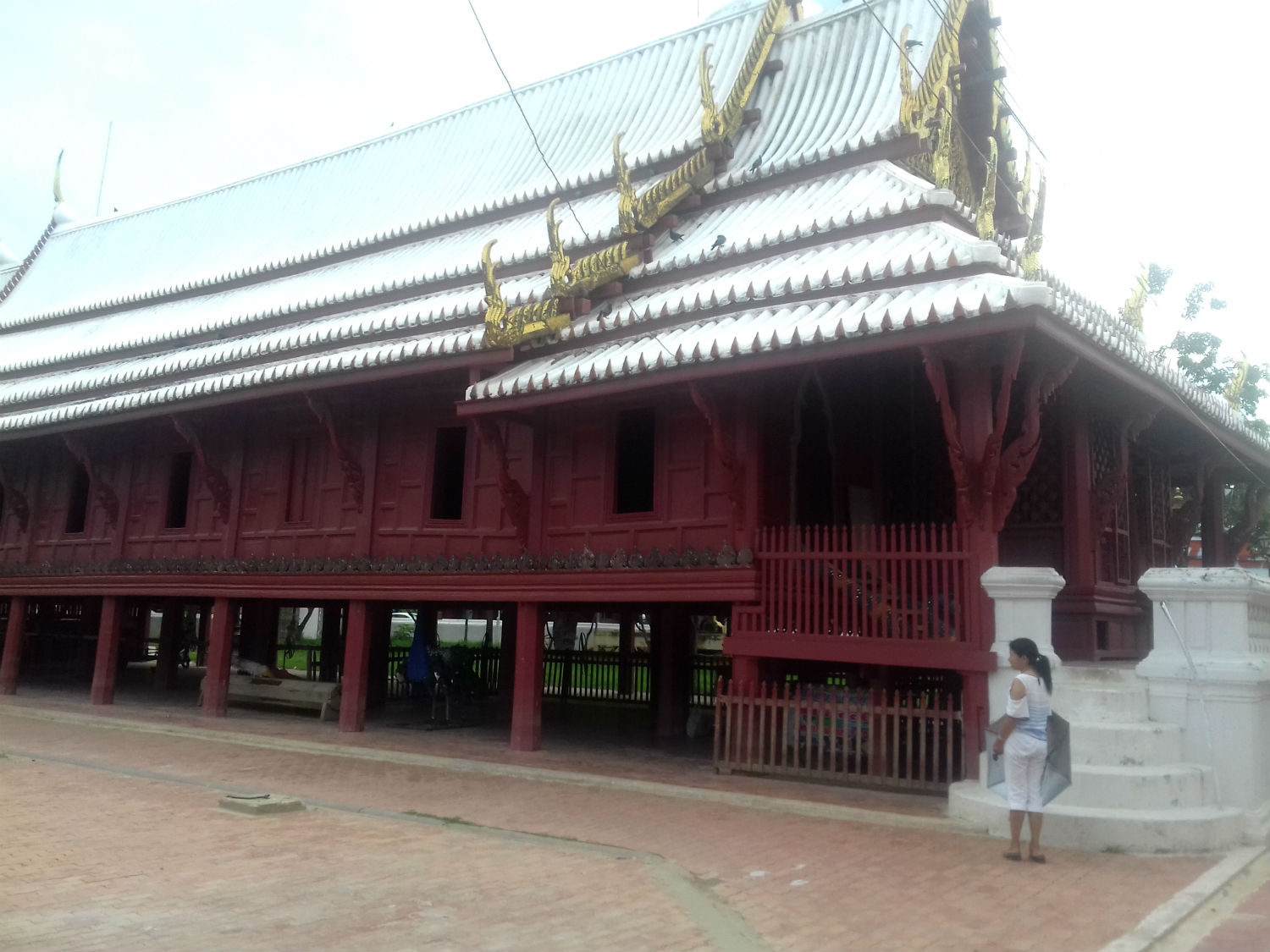
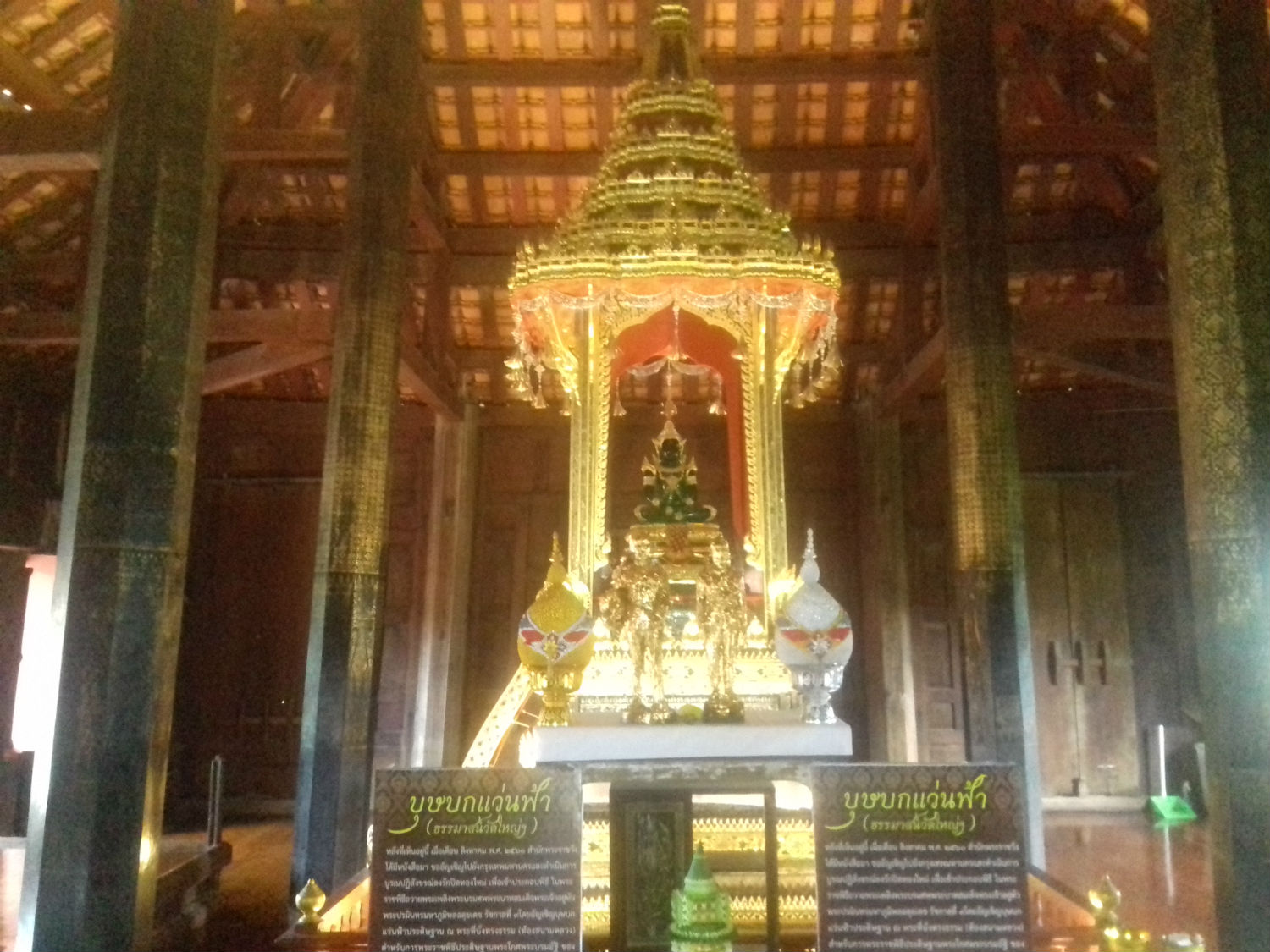 Wat Yai Suwannaram, Phetchaburi
Wat Yai Suwannaram, Phetchaburi
Today has been a day of surprises. Having discovering some recent history at two palaces earlier, followed by some ancient history ay Wat Kampang Laeng, I’m now presented with evidence which supports a monumental period in Thailand’s history. Surely there’s only one explanation for moving Sala Kanprian and that’s to deny the Burmese invaders the use of such an important building. The capital Ayutthaya was to fall in 1767 and it is known that Phetchaburi province was a serious option for those freeing the stricken city. If my assumption is true then I feel humbled to have stepped on those sacred teak floor boards.
Phetchaburi Railway Station........It would be unusual if at some point I did not visit the railway station in a town that has one. Now around 5.30pm I head for Phetchaburi Railway Station which lies on the State Railway of Thailand’s Southern Line. The timetable suggests that there is double the number of trains using this line compared with those using the Northern Line. As I arrive at the station, once again I’m in luck as there’s a train waiting to depart for the south, its destination I’m unable to determine before departure. Nor does the timetable help as the train must be late. However just 20 minutes later, the overnight sleeper train for Hat Yai arrives. It’s a wonderful end to rather hectic day’s touring.
Phetchaburi Railway Station........It would be unusual if at some point I did not visit the railway station in a town that has one. Now around 5.30pm I head for Phetchaburi Railway Station which lies on the State Railway of Thailand’s Southern Line. The timetable suggests that there is double the number of trains using this line compared with those using the Northern Line. As I arrive at the station, once again I’m in luck as there’s a train waiting to depart for the south, its destination I’m unable to determine before departure. Nor does the timetable help as the train must be late. However just 20 minutes later, the overnight sleeper train for Hat Yai arrives. It’s a wonderful end to rather hectic day’s touring.
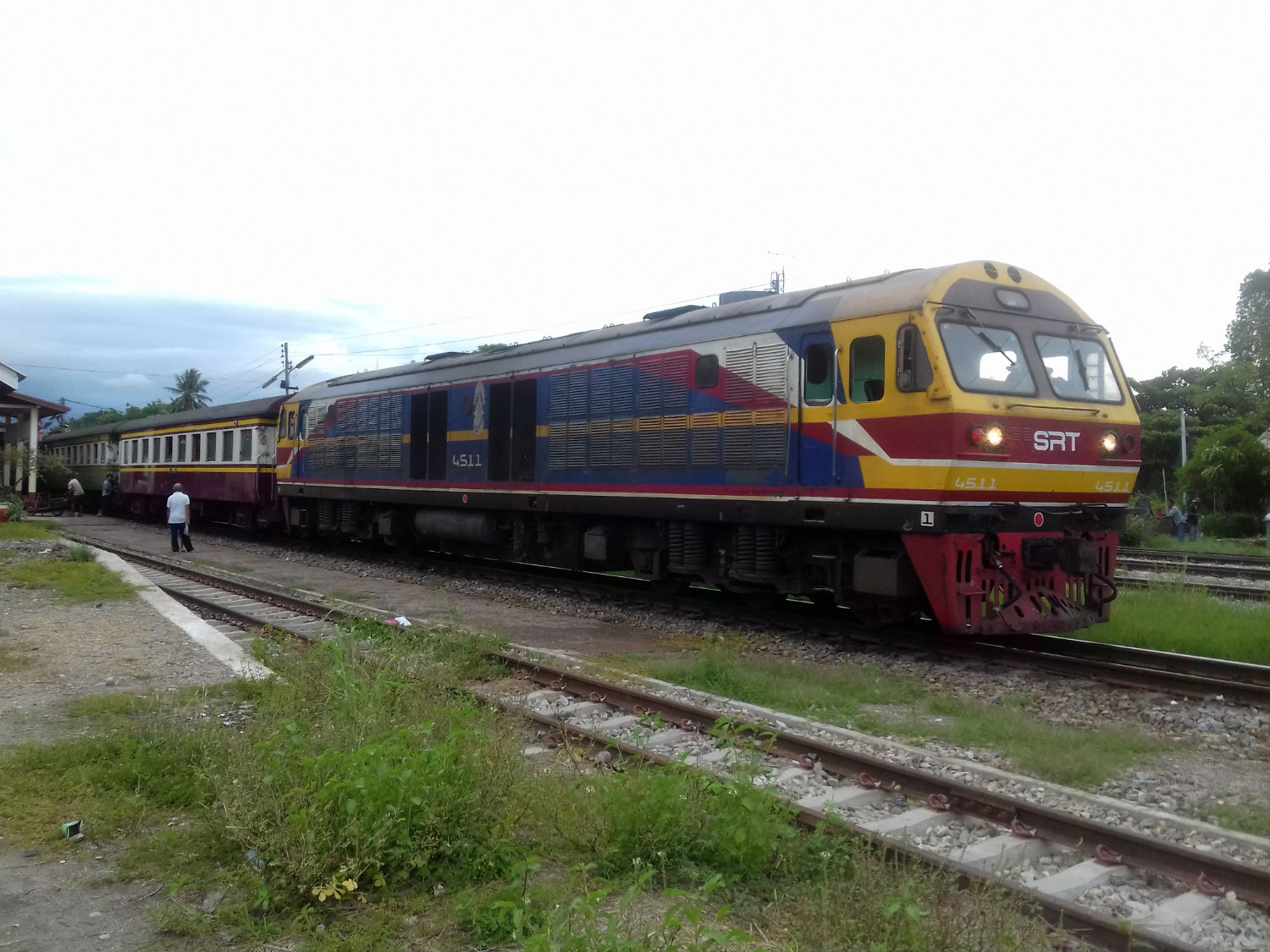
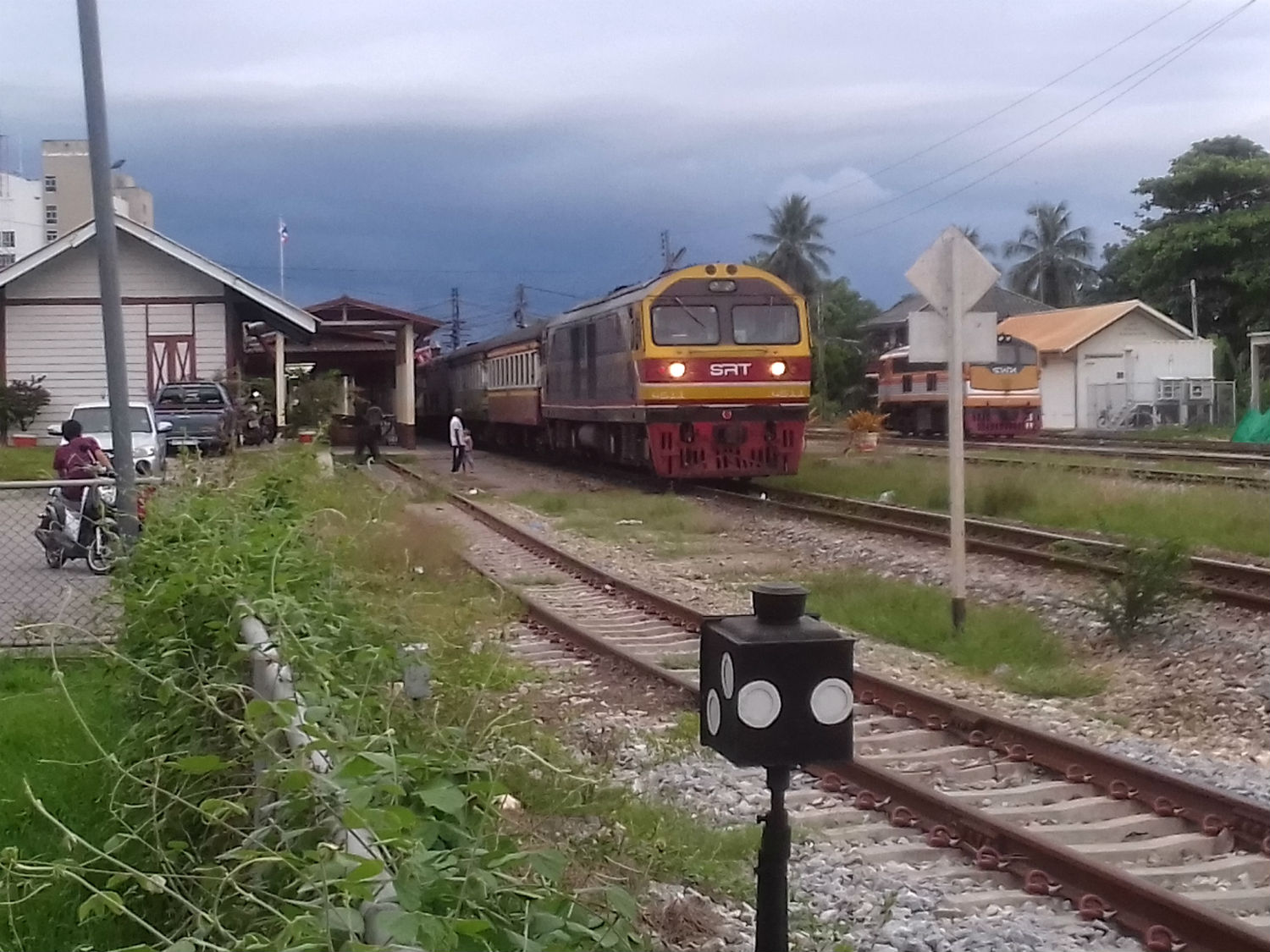
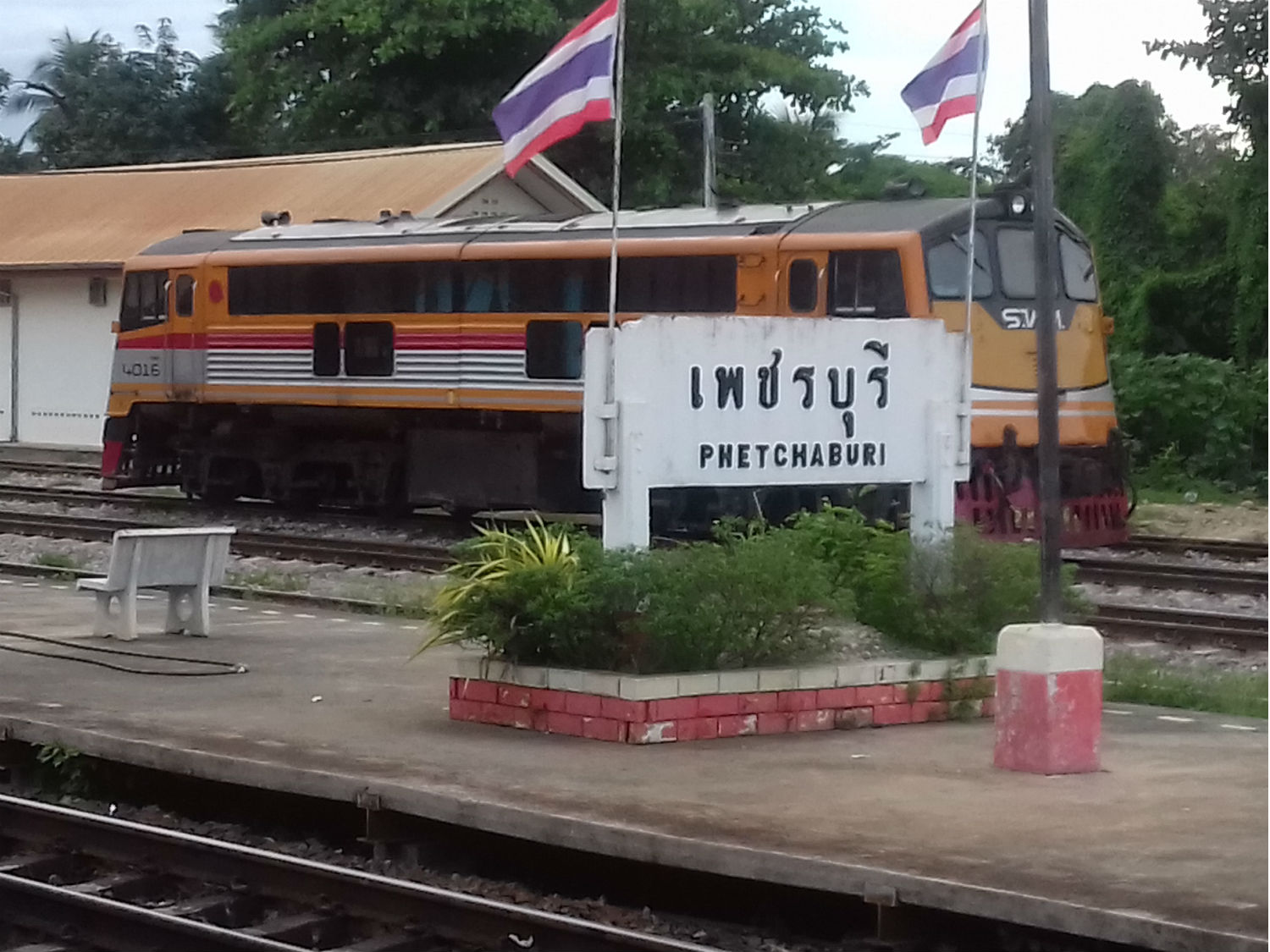
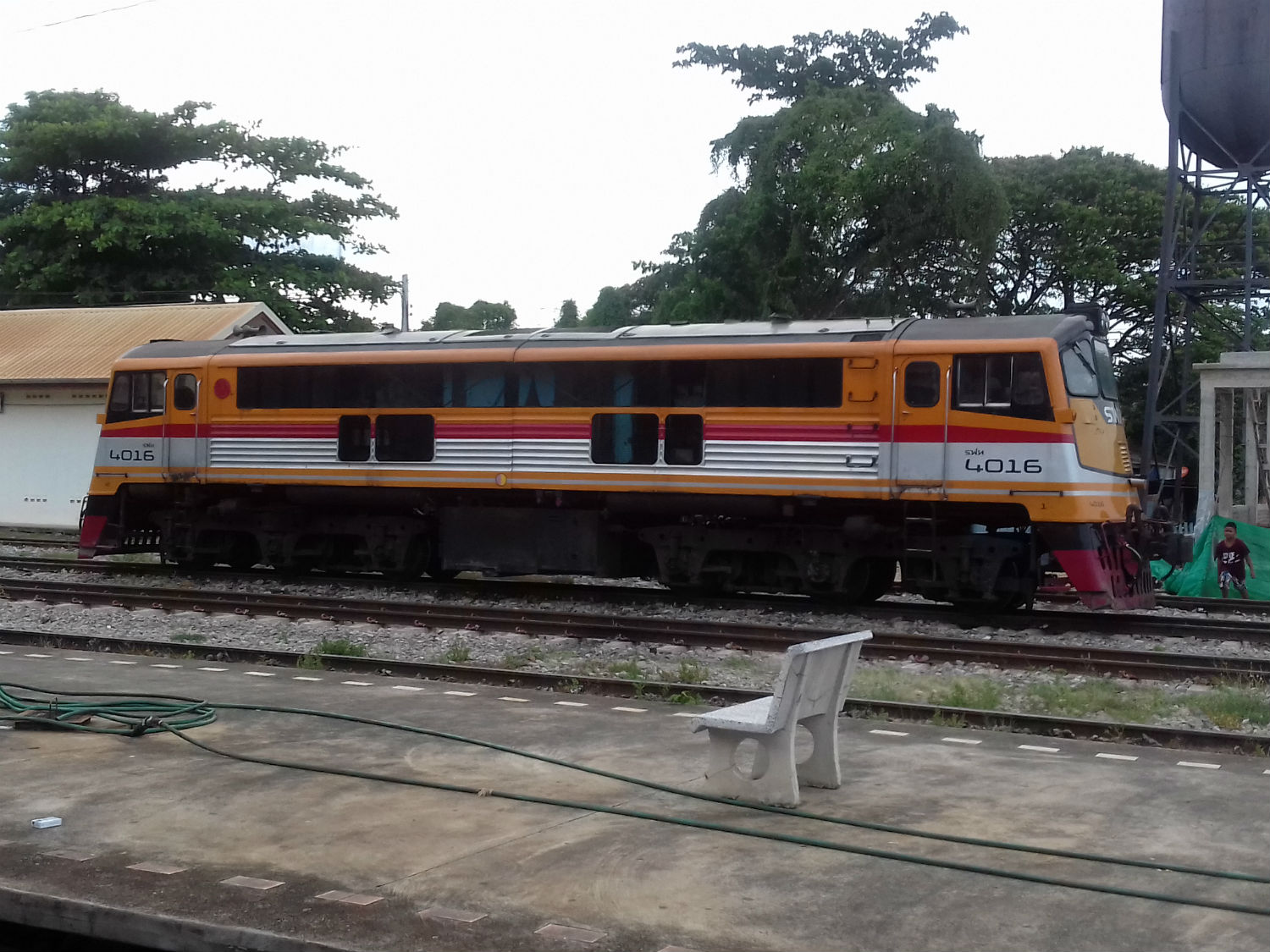
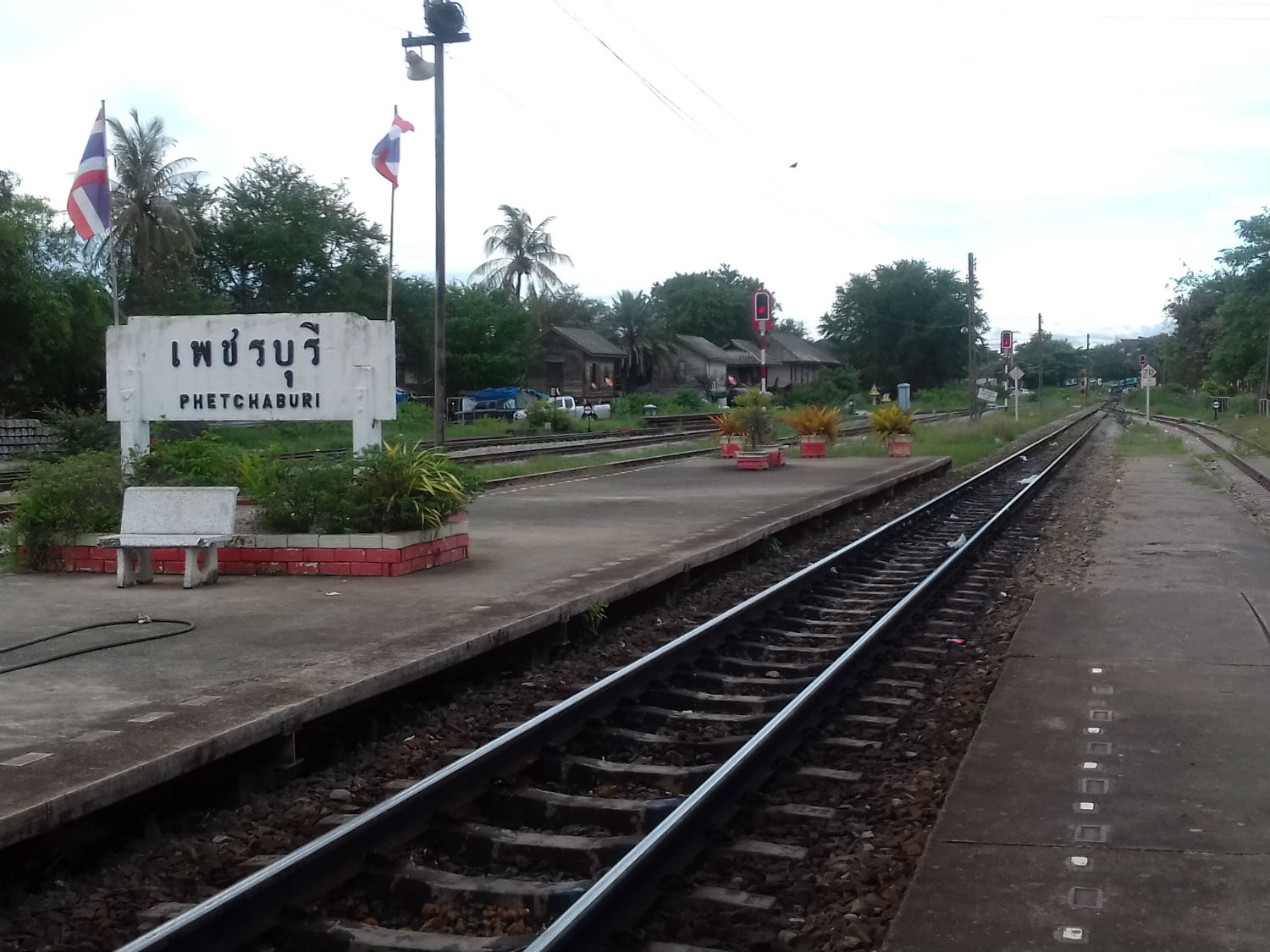
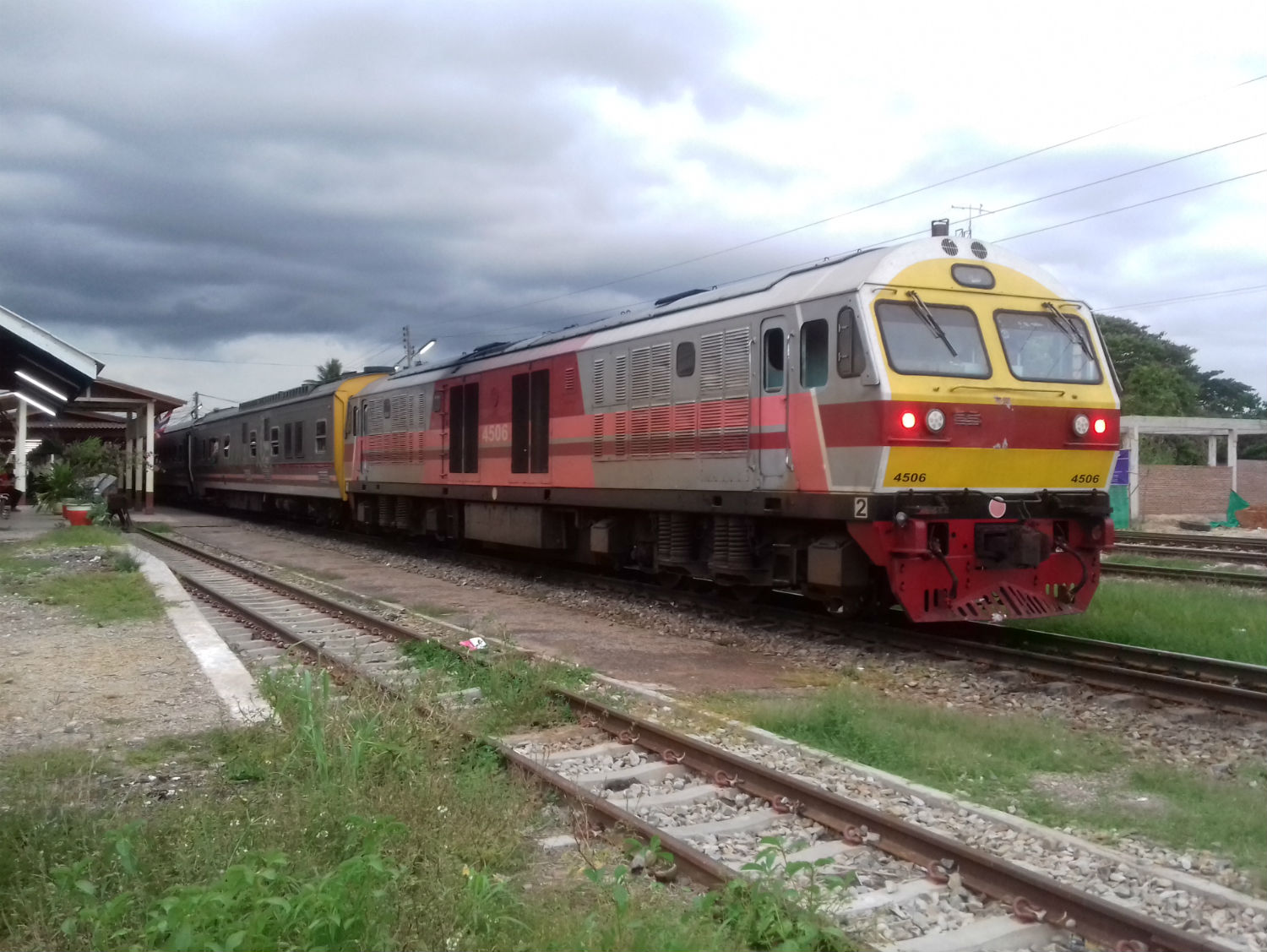 Phetchaburi Railway Station, Phetchaburi
Phetchaburi Railway Station, Phetchaburi
Sweet Dreams Guesthouse........With our accommodation pre-booked tonight there is no urgency to check-in on such a busy day. Accordingly the owner was anxious to call and check whether we still wanted the room. It was well-rated by online agents so I expected everything to be fine. On arrival I notice Sweet Dreams Guesthouse is run by a friendly family and we immediately feel at home. The guesthouse is a new build tucked away in a side street on the edge of town. There seems to be just six rooms which are brightly coloured with modern furnishings. I notice there is no table for me to use my computer but that is soon fixed. The only other observation is that the bed seems a bit small for the size of the room but all in all I’m much happier than last night and book for two nights. With breakfast included it seems good value.
The final act is to work on my blog but little gets done. As productive as it’s been today it’s also been very hot and I just need to relax. I know that is likely to make demands in the morning but I’m just past caring right now.Next Page.
The final act is to work on my blog but little gets done. As productive as it’s been today it’s also been very hot and I just need to relax. I know that is likely to make demands in the morning but I’m just past caring right now.Next Page.